Cyclone farms pin hopes on spring
Richard Rennie NEWS Weather
THE same weather patterns that wiped out east coast growers and farmers continued to confound recovery efforts for months afterwards, with some respite and access to many back country blocks coming only in recent weeks.
Rere farmer and Rural Women
New Zealand chair Sandra Matthews said it has taken until the past fortnight for her husband Ian to be able to get to the back of their 536ha Gisborne district property, which bore the brunt of Gabrielle six months ago.
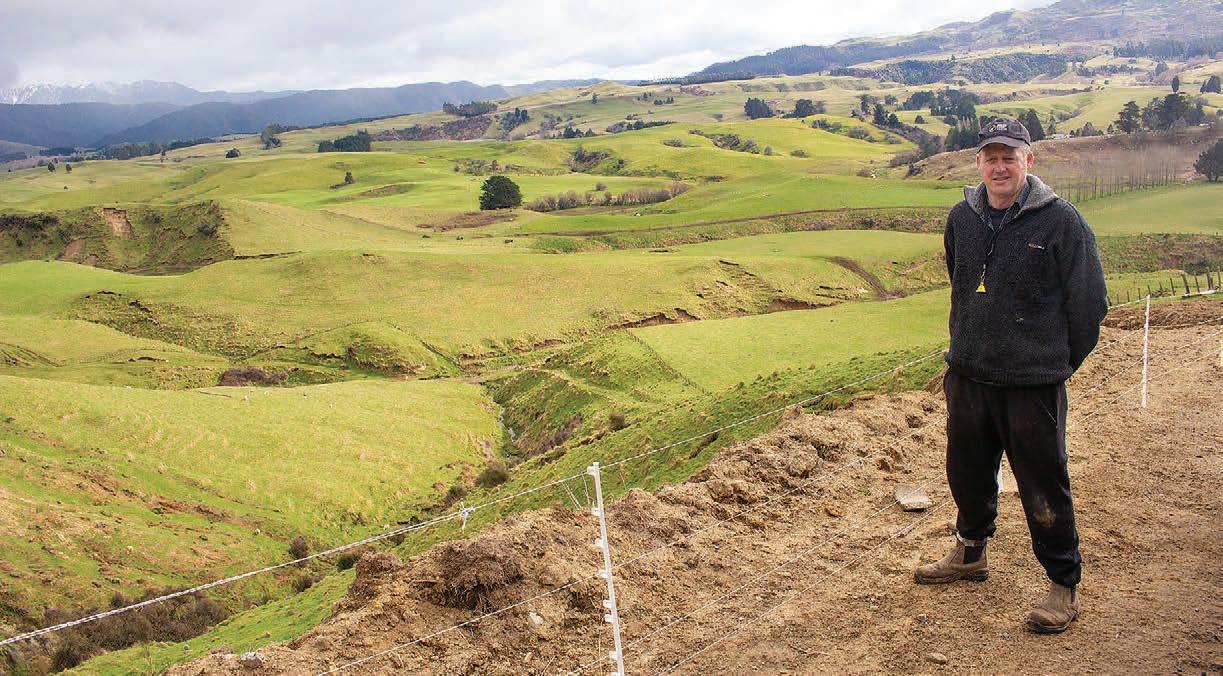
“We have only been able to get around on foot to the back of the farm, and we have only just managed to get diggers onto the farm to repair the culverts and slips that came with Gabrielle,” she said.
Their story is shared by farmers the length of the east coast, across regions that received up to 300mm of rainfall a month through June and July.
Those events piled water upon water, turning soil into what the Gisborne District Council’s chief scientist described as “ice cream”.
Jonathan Bell, Hawke’s Bay area co-ordinator for the Rural Support Trust, said the midwinter blues have descended on the region. He hopes they will lift by September 1.
Farmers are finally welcoming a drier weather pattern that is giving them a better run through calving and lambing.
But it is also giving many pause as they finally get to absorb just how much damage their properties have sustained in country they may not have had the chance to get to earlier.
“A lot are realising this will not be a quick fix, that it will take more than a few months. There is an acceptance that even if a fence is temporary, if it is stock-proof then leave it where it is, move on to the next job to work on,” Bell said.
Down on the Hawke’s Bay plains, he said, recovery is being complicated by uncertainty over a property’s risk category, whether that be Category 1 (safe to return



Continued page 3
Healing from a high country tsunami
Puketitiri sheep and beef farmer Tim Nelson has a long road ahead restoring access to parts of his farm. Cyclone Gabrielle ruined fences, culverts and roads but, six months on, Nelson is optimistic about rebuilding and knows his friends and community have his back.
SPECIAL REPORT 4, 5, 7
Confidence among dairy, sheep, beef and arable farmers is at historic lows, says Feds.
NEWS 3
Fresh
eyes on farming’s future
Adelyne Patrick, Jade Askin and Harry Oliver claimed top prize at the recent Ag&Ed Innovation Challenge after coming up with the idea to create a huhu grub protein powder.

PEOPLE 10


The red meat sector wants a ‘proper adult conversation’ about trade relations with India.
MARKETS 8


Ben Anderson comes from a long line of peasants, and is proud to be a peasant farmer.
OPINION 21



Stay sharp and stay in FOCUS with the new weekly podcast from Farmers Weekly. Rich farming news for time-poor farmers. in PODCAST GET THE in FOCUS PODCAST 1
Vol 21 No 31, August 14, 2023 View online at farmersweekly.co.nz $4.95 Incl GST
Advertise Get in touch
EDITORIAL
Bryan Gibson | 06 323 1519
Managing Editor bryan.gibson@agrihq.co.nz
Craig Page | 03 470 2469
Deputy Editor craig.page@agrihq.co.nz
Claire Robertson
Sub-Editor claire.robertson@agrihq.co.nz
Neal Wallace | 03 474 9240


Journalist neal.wallace@agrihq.co.nz
Gerald Piddock | 027 486 8346
Journalist gerald.piddock@agrihq.co.nz
Annette Scott | 021 908 400


Journalist annette.scott@agrihq.co.nz
Hugh Stringleman | 09 432 8594

Journalist hugh.stringleman@agrihq.co.nz
Richard Rennie | 027 475 4256
Journalist richard.rennie@agrihq.co.nz
Nigel Stirling | 021 136 5570
Journalist nigel.g.stirling@gmail.com
PRODUCTION
Lana Kieselbach | 027 739 4295 production@agrihq.co.nz
ADVERTISING MATERIAL
Supply to: adcopy@agrihq.co.nz
SUBSCRIPTIONS
0800 85 25 80 subs@agrihq.co.nz
PRINTER
Printed by Stuff Ltd
Delivered by Reach Media Ltd
our
SALES CONTACTS
Andy Whitson | 027 626 2269 Sales & Marketing Manager andy.whitson@agrihq.co.nz
Steve McLaren | 027 205 1456 Auckland/Northland Partnership Manager steve.mclaren@agrihq.co.nz
Jody Anderson | 027 474 6094 Waikato/Bay of Plenty Partnership Manager jody.anderson@agrihq.co.nz
Palak Arora | 027 474 6095
Lower North Island Partnership Manager palak.arora@agrihq.co.nz
Omid Rafyee | 027 474 6091 South Island Partnership Manager omid.rafyee@agrihq.co.nz
Debbie Brown | 06 323 0765 Marketplace Partnership Manager classifieds@agrihq.co.nz
Andrea Mansfield | 027 602 4925 National Livestock Manager livestock@agrihq.co.nz
Real Estate | 0800 85 25 80 realestate@agrihq.co.nz
Word Only Advertising | 0800 85 25 80 Marketplace wordads@agrihq.co.nz
PUBLISHERS
Dean and Cushla Williamson
Phone: 027 323 9407 dean.williamson@agrihq.co.nz cushla.williamson@agrihq.co.nz
Farmers Weekly is Published by AgriHQ PO Box 529, Feilding 4740, New Zealand Phone: 0800 85 25 80 Website: www.farmersweekly.co.nz
ISSN 2463-6002 (Print) ISSN 2463-6010 (Online)
New Zealand’s most trusted source of agricultural news and information
in brief
Farmlands election
Rob Hewett has been re-elected to the Farmlands board, and South Otago dairy and beef farmer Will Clarke takes the other vacant board position.

Hewett stood for re-election after retiring by rotation. Newcomer Clarke was a Farmlands board observer in 2020 and 2021. Seven candidates stood for the two available board positions.
Wind farms
The government is putting three wind farms into the fast-track consent process. Ministers highlighted the number of solar projects that have also been fasttracked. The three proposed wind farms – in Manawatū, near Auckland and in Southland – will generate a peak output of about 419 megawatts (MW). The Clyde dam, New Zealand’s third largest hydro-electric dam, generates around 432MW.
ACC forests
The ACC has increased its commercial forestry interests, with a company in which it has a 36% stake buying a second farm in West Otago.
ACC Investments is the largest shareholder in NZ Timber No 1 General Partner, which has bought the 300ha farm. A spokesperson said details of the transaction are commercially sensitive.
Port interest
One of the largest port operators in the world has registered an entity in New Zealand, fuelling speculation about a possible entry into the market.
NEW


Mid Canterbury farmer Angus McKenzie is looking forward to the opportunity to sit at the FAR board table as its newly appointed associate director.
Emirati multinational logistics company DP World has more than 100,000 employees across 75 countries, including Australia.
The company was registered with the NZ Companies Office as an overseas company on July 11 but has yet to comment on its plans in NZ.
Back in 1860, exporting meat to the other side of the world seemed about as easy as nailing gravy to the ceiling. But a few determined kiwis took the bull by the horns and now our grass-fed beef and lamb is sought-after all around the globe.
At AFFCO, we see the same pioneering spirit alive and well in farmers today. We’re playing our part too – exploring every opportunity to take New Zealand’s finest farm-raised products to the world.
WWW.AFFCO.CO.NZ 0800 233 2669
WAVE200472 AFFJ200472 NZ Farmers Weekly Strip Ad FA.indd 1 24/08/22 3:22 PM 2
pioneering spirit tells us nothing’s out of reach
Contents
STORY P22 News . . . . . . . . . 1-3, 8-16 Special Report . . . 4-5, 7 Opinion . . . . . . . . . 18-21 People . . . . . . . . . . . . . 22 Technology . . . . . . . . . 23 World . . . . . . . . . . . . . . 24 Real Estate . . . . . . 25-26 Marketplace . . . . . 27-28 Livestock . . . . . . . . . . . 29 Markets . . . . . . . . . 30-35 Weather . . . . . . . . . . . . 36
ROLE:
News
Ag racked by dive in confidence, profit
Richard Rennie NEWS Agriculture
IT IS proving to be the winter of intense discontent for New Zealand farmers, with Federated Farmers’ latest survey placing farmer confidence at a 14-year low.
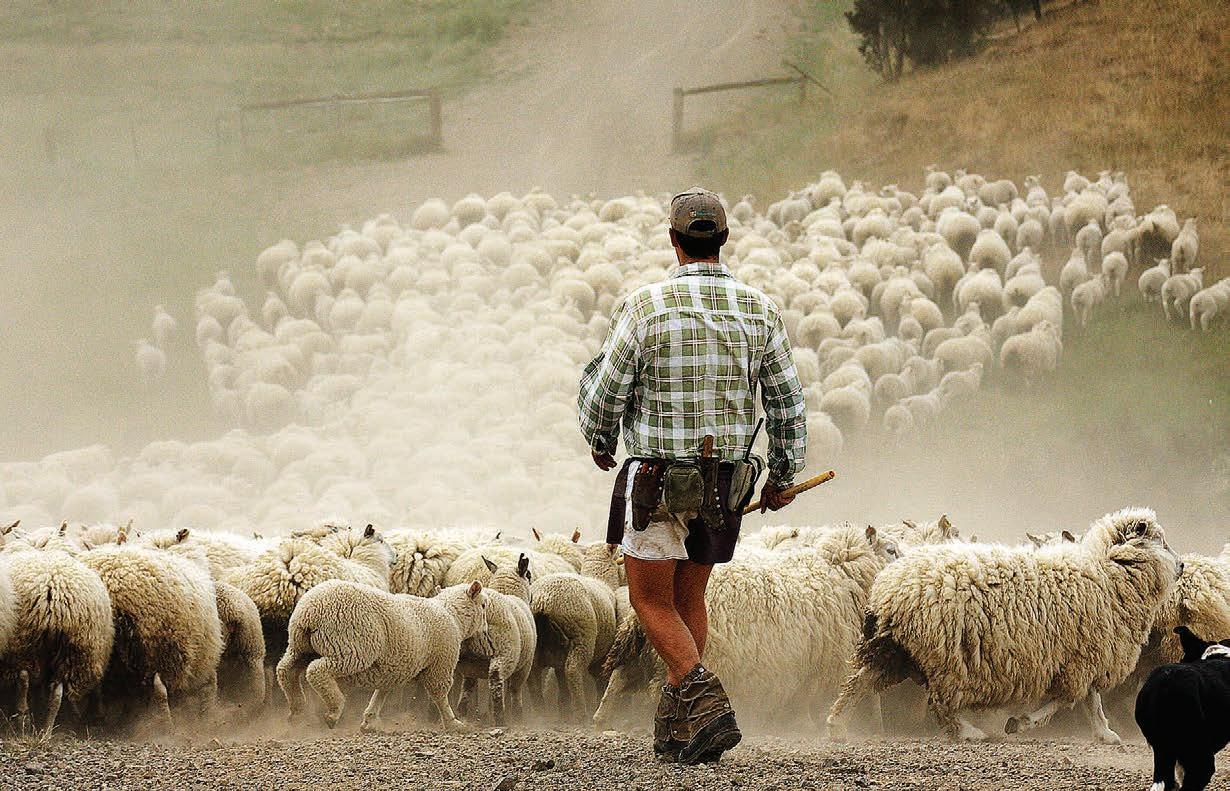
Based on responses from 1000 farmers across all sectors, the July survey also found farmers’ belief that they will make a profit this year has slumped since the last survey, in January, with 74% believing farm profitability will worsen in the next year.
Eighty-one percent considered the current economic conditions to be bad, a jump of 23% since the survey recorded six months earlier.
The dark outlook is firmly linked to poor profit prospects for the sector, with only 2% reporting that they were making a profit currently, down a massive 26 points from January when 28% reported making a profit.
Expectations are that the figures are likely to have only worsened since the survey was conducted, given that it did not capture the latest decline in Fonterra’s payout, which has sliced a $1/kg milksolids from income and left the majority of dairy farmers barely breaking even.
Even without that news included, dairy farmers reported the second largest decline in their perceptions of the general economy, down 23% on the last survey, with arable farmers the worst at a 30% decline.
The report highlights that farmers’ predictions about farm profitability have been steadily
Continued from page 1
to) or Category 3 (cannot be returned to).
“It is putting some in limbo. Some are happy to accept C3 and move on. We know overseas sometimes people can continue to farm or grow on the land but they just can’t live there.”
He knows of one grower who moved himself and his family to Napier while still continuing to run their orchard block out of town.
“Once people have certainty and know what their future is, they can talk to their bank and insurance company. They will be in a better space then.”
Brydon Nisbet, chair of the Hawke’s Bay Fruit Growers Trust, said while the government’s longterm loans are welcome for those needing them, the time taken for

declining since July 2017, hitting their low point in this survey.
Federated Farmers president Wayne Langford said the biggest concerns for farmers are debt, interest and banks, regulation and compliance costs, and climate change-Emissions Trading Scheme (ETS) policy.

“This is the second successive farmer confidence survey to set a new record low with a steep decline over the last six months – so we’re sounding the alarm,” Langford said.
The steep decline in profitability captured by the survey reflects the continuation of last year’s combination of falling commodity prices and significant increases in on-farm costs, particularly agrichemicals. Add in staff shortage costs, and a 50% hike in interest rates has only compounded those earlier pressures.
With the slide in predicted profit is coming the certainty of farm expenditure taking a far tighter path.
This does not bode well for provincial service towns. Farmers’ spending is expected to slump over the next 12 months with 45% of respondents expecting to reduce spending, and only 19% to stay the same.
Spending had been moving upwards over January and July last year, largely in response to soaring farm costs for essential supplies. But lower profitability expectations are seeing wallets firmly shut this year, even after adjusting for inflationary price rises. The survey had dairy farmers still likely to be the larger spenders despite taking a net drop, but their cuts are only likely to be
them to arrive seemed lengthy given that growers had passed relevant information on damage and losses to the government in March.
Those growers who acted early in removing silt are in a strong position heading into springtime, with plants starting to recover and prospects good for budding over spring.
Deciding to stay or go is complicated by lease orchard arrangements. In some cases
This is the second successive farmer confidence survey to set a new record low with a steep decline over the last six months – so we’re sounding the alarm.
Wayne Langford Federated Farmers
exacerbated by Fonterra’s payout cuts since.
Reduced profitability and soaring farm costs are playing into higher debt levels, with 30% expecting
the landowners have wanted to exit, leaving the lessees out of an orchard.
The cost of rehabilitating orchards and valuable cropping country has proven eye-watering for many.
Nisbet said having 30,000 cubic metres of silt removed from his 5ha orchard cost almost $100,000 a hectare – and he classed himself at the lighter end of the inundation. For those on flat country northwards in the Gisborne
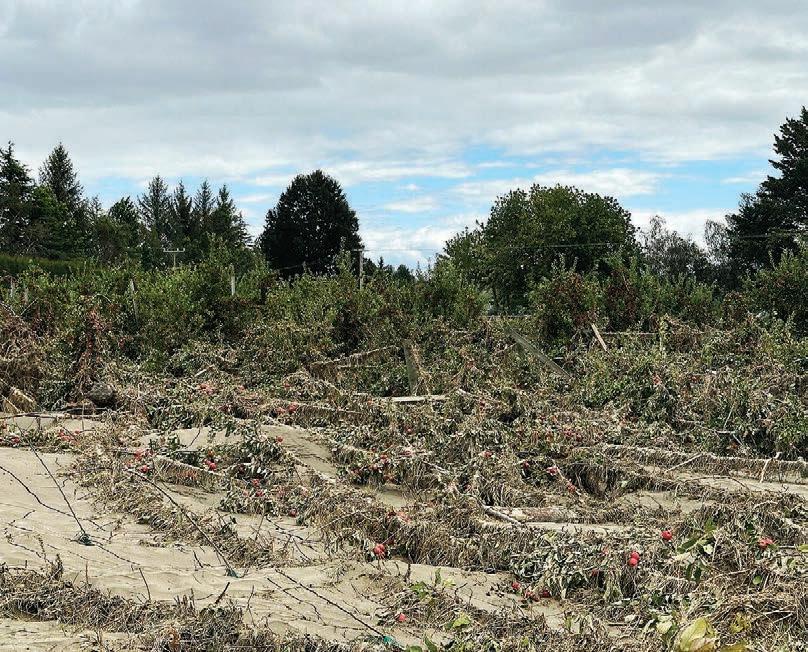
their debt will increase, and 42% expecting it to stay the same.
Since July 2016 more farmers have expected to reduce debt than increase it, but this has reversed in the past two surveys. The positive net debt score of 14% increasing debt reflects more farmers borrowing to weather the lower revenues and higher operating costs they are experiencing.
Overall, the concerns around debt and interest have leapt in prominence, taking out first place in farmers’ concerns in the survey.
Regulation and compliance costs are the second most concerning. Reflecting the lower profile of policies such as He Waka Eke
district, the silt challenge was compounded by also having to move forest waste.
AgFirst consultant Peter Andrew said he has a client at Tolaga Bay with 1000ha and 700 individual piles of slash waiting to be burnt on their property alone.
“We have only had windows of opportunity up until now. We have seen a lot of work done by forestry companies, but these are big machines and need solid ground to work on.”
The shared legacy for rural communities the length of the coast is a shattered roading system some doubt will ever be fully restored.
Federated Farmers WairoaGisborne president Toby Williams said in future some roads may be best cared for by having their maintenance management folded into resource consents for forestry companies to oversee.
In Hawke’s Bay, Bell said the State Highway 50 bridge at Tikokino remains out and is likely to stay that way for months. It had turned a 15-minute trip to town into an hour and a quarter for farmers on the wrong side of the bridge. North of Napier, he fears for when Glenbrook Road at Putorino will be restored. Since the cyclone the five farms it serves have had to re-supply by crossing the river by tractor.
Noa in recent months, ETSclimate change has dropped to third greatest concern. As global conditions have worsened for returns, farmgate commodity prices have jumped from sixth to fourth.
Langford said the survey’s results have implications that will flow right through the economy. This point was reinforced last week when it was estimated Fonterra’s cut to payouts sucked $5 billion out of the economy.
Feds has released 12 policy priorities it believes the next government needs to examine to restore farmer confidence in the economy.
Andrew’s concern is whether the political will to restore the region will falter in light of the costs involved.
“The last thing we need is for people to have doubts about farming on the east coast.
“That’s where the goodwill will run out, particularly as we have had to bear the impact of pine trees, which are part of a Wellington policy and are now sitting on our beaches.”
3 FARMERS WEEKLY – farmersweekly.co.nz – August 14, 2023 News 3
PICKING UP PIECES: Many landowners are in limbo awaiting a decision on how habitable their homes on orchards may be, depending on their risk category, apple grower Brydon Nisbet says.
PLUMMETING: Farmer con dence, spending and pro tability all take a hit in the latest Federated Farmers survey.
Once people have certainty and know what their future is, they can talk to their bank and insurance company. They will be in a better space then.
Brydon Nisbet Hawke’s Bay orchardist
ROAD WOES: Federated Farmers Wairoa-Gisborne president Toby Williams questioned whether some roads in the region will ever be fully restored.
Healing from a high country tsunami
With green shoots covering at least some of the silted paddocks of the east coast, Farmers Weekly visited cyclone country to nd out how farmers and growers are faring six months after Gabrielle tore through the region.
Bryan Gibson NEWS Weather
ONE day at a time.
That’s how Pātoka beef farmer Steve Horgan is tackling the job of rebuilding the cyclone-hit farm he’s called home his entire life.
Cyclone Gabrielle was a destructive force like nothing Horgan had seen.
“I’ve lived here all my life. I’ve never seen anything like it,” he said.
“But then, you go and look out that window now and you look at the landscape you think how was that formed? These things have happened before and they’ll happen again.”
More than 30% of Horgan’s farm
has been retired into either pines or natives, which he credits with limiting the damage.
Following the cyclone Horgan’s family and friends turned up to help out and the wider community was on hand to make sure the business of farming could continue, despite the lack of roading.

“We still had about 100 cattle to send away, but through a bit of Kiwi ingenuity our neighbours, Patrick and Izzy Crawshaw, got a hold of a crate and a trailer so we could ford two rivers and get them into town like that.
“It was a bit of a roundabout way, but it worked.”
Izzy Crawshaw, whose farm neighbours Horgan’s, was at the heart of the community response.

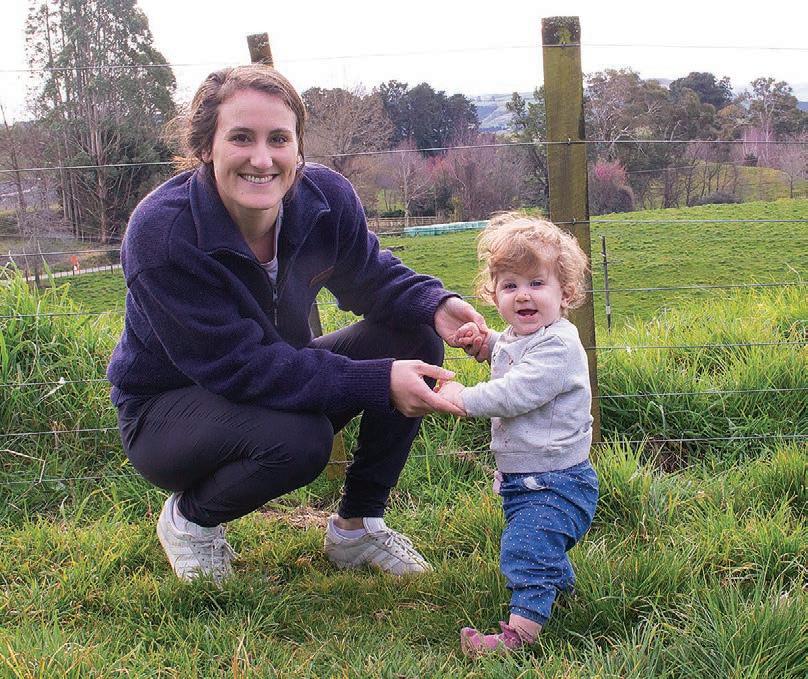
“The first few weeks were a bit like a war zone,” she said.
“We had just under eight weeks of isolation and not being able to get into town, and a few weeks of no power. A heavy reliance on helicopters and community support.”
Community hubs were established to hold resources like food, water and medication.
“It was incredible how the community came together, we’re really lucky with the community we have out here.
“Since the bridge opened up it’s just getting back into business now and trying to make a plan – looking ahead from both the community and on farm as to what recovery looks like.”
Much of the work addresses the very visible scars on the landscape, but Crawshaw said it’s equally important to heal the mental scars as well.
They set up regular events to keep everyone connected.
“Resilience workshops with Rural Support Trust, a women’s night. We’re just trying to make sure there’s a bit of an events calendar and trying to keep everyone connected in a positive fashion – it’s not just about funding workshops.
“Everyone recognises we need to keep everyone connected so everyone’s doing their bit.” What would really help, though, is sunshine.
“There’s just still so much rain. There’s so much water in the soil already so a little bit of rain makes such a massive difference. From that mental wellbeing perspective it’s just trying to get everyone through winter, keeping that
There’s just still so much rain ... From that mental wellbeing perspective it’s just trying to get everyone through winter.
connection with the community.”
Horgan said the key to dealing with the enormity of the challenge is realising the rebuild is a marathon, not a sprint.

“It’s going to take six years. And you’ve just got to accept it, you know?
“We’ve got a big book and we’ve written down where all the slips are. And you know, there’s 30, 40, 50 and it keeps going up every day because you keep finding sections of things that need repairing – lots and lots of trees. A lot. We’re just gradually replanting them and it’s just going to take time.”
It’s a matter of taking it one day at a time, he said.
“You just sort of find ways. You
pick what you can do in a week and what you can’t you patch up.
“Starting tomorrow, we’re putting our water system back. We’ve had a spring that’s been tapped for about 80 years and it dried up. But at least it’s popped out in another place further downstream so we can tap it there. So that’s our mission this week.
“You focus on the things that are important. You look after yourself. And yeah, you look after the animals and feed them well because they pay the bills, and we’ve been able to do that.”
Horgan – who said the water that came through in the dawn hours of February 14 “looked like a tsunami” – reckons there’s a lesson for everyone in the wake of the cyclone.
“Just empower the community, they’ll do a much better job, especially when it’s remote.
“I mean, we expected our roads wouldn’t get opened so we went and opened them ourselves because you know they’ll be too busy down on the flats for that stuff.
“Give us the help when we need it and let us get on with it.”
A long, hard look at what will be sustainable
Neal Wallace NEWS Weather
THEY estimate damage from forestry slash dislodged by Cyclone Gabrielle cost them close to $1 million, but Dan and Tam Jex Blake consider themselves luckier than most.
They still have a business and a home.
Maintaining the 11km access to their Mangapoike Station near Gisborne has been a constant battle since the weather event.
Two farm bridges were destroyed by slash and kilometres of fencing disappeared.
An established 14ha of citrus and a new apple orchard and an adjacent flat finishing property were inundated with slash and silt.
The 5ha rocket crop was planted only last year.
The Jex Blakes farm sheep and
beef on 2000ha of predominantly steep hill country.
On the plus side they fortunately had a digger driver/fencer working for a contractor on the farm when the storm hit and he was able to start repair work straight away.
Dan’s brother also had some heavy cultivation equipment and was able to start work on the downland flat block, on which 150mm of silt had buried a mixed herbage crop.
The couple were away from the farm when the storm hit and once it had passed, they had to helicopter in.
Fortunately all houses had back-up generators and radio telephones, but with 11km of the access road damaged, to get out to civilisation the Jex Blakes had a journey through the back of the farm on a side-by-side and walk down the valley to rendezvous with their daughter.
Loss of bridge access meant
shearing of 3000 mixed aged ewes was delayed from February to July, while any sheep for sale faced an 11km trek to a point where trucks could access temporary yards.
For cattle it was a 16km walk to the closest handling facilities.
Dan said dealing with insurers is ongoing and discussions with forestry companies about responsibility for the damage from the slash has so far not gained much traction.
He said the ministerial inquiry into woody debris has not addressed the forestry issue, responsible for between 75% and 90% of slash.
He also questioned why ratepayers and taxpayers should fund any remedial work caused by commercial forestry companies. One positive to emerge from the disaster has been the creation of the Te Arai Catchment Group, chaired by Tam, but it has also prompted Dan to question what

defines sustainable land use.
“It’s made me sit back and ask if what we are doing is sustainable, if we can do it better and what the future looks like.”
He said he realises it may not be popular but in his view farming and forestry may not be suited to some land on the east coast, and it may need to transition back to native.
One tool, he said, could be the proposed indigenous biodiversity credits, where landowners earn funds for enhancing or improving indigenous biodiversity.
“We can still farm it and be viable but in a manner that is sustainable.”
Another issue is the viability of continually repairing road access.
He said that in their case, with two properties at the end of Paparatu Road, there is commercial justification for investment back into roading.
There are 50,000 stock units farmed and 20 people living
and working there, representing significant businesses and a community.
“This is similar to many communities up and down the east coast, where the councils and the government are facing sizeable repair costs.”
4 FARMERS WEEKLY – farmersweekly.co.nz – August 14, 2023 Special Report 4
FAMILY: Izzy Crawshaw, pictured at her Pātoka sheep and beef farm with daughter Millie, says her children helped her maintain perspective when faced with the enormity of the challenge created by Cyclone Gabrielle.
SMALL STEPS: Pātoka beef farmer Steve Horgan has a big job ahead to rebuild the farm that has been his life’s work, but he’s taking it one day at a time.
Izzy Crawshaw Pātoka
BIG QUESTIONS: Gisborne farmer Dan Jex Blake questions why ratepayers and taxpayers should fund any remedial work caused by commercial forestry companies.
Holding firm on fruit quality as waters rose
Bryan Gibson PEOPLE Weather
WHEN things get tough at home, heading in to work can seem like a bit of a relief. Sheep and beef farmer Tom Lane had no such luxury after Cyclone Gabrielle.
With parts of his Waiwhare farm underwater in February, Lane’s day job was just as challenging – and as general manager commercial at Rockit Apples he had much more to contend with.
“I woke up on the Tuesday morning and noticed quite a bit of water about – more than normal,” he said, recalling the day the cyclone hit, February 14.
“But I didn’t think an awful lot of it until I went out to the pump up on top of the hill.

“It looks down to the pump shed at the bottom. I remember looking down and could only just see about 15cm of the pump shed roof, which made me realise that it’s probably a bit more rain than we’d
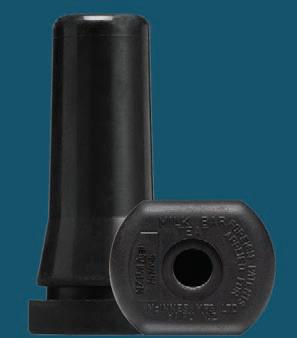

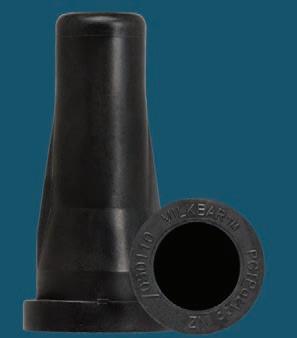

encountered in the past.”
Luckily there was no stock down there, but it took a couple of days to clear slips and make that part of the farm accessible.
“We’ve probably lost about 8km of fencing, 4km of tracks, and we’d be about roughly 40 to 60 acres [16-25ha] of land that we’re tossing up what to do with it; it’s not going to be economical.
“The steeper country is not going to be economic to refinance. But I hate pine trees with a passion so it’s a case of persuading government to do something to actually encourage you to plant natives.”
Lane said Rockit faces the same issues everyone in the broader horticulture industry is grappling with.


“We had a very disparate experience – some people had everything disappear overnight. Other people had a lot of flood damage, but we were still able to harvest above the floodline, which is good. It’s incredibly inequitable the way the damage was allocated.”
But it’s been as incredible to see the resilience, he said, “and probably also the commitment across the industry that we’ve seen”.
For Rockit, the main focus has been on holding the line on fruit quality and food safety.
“There’s always a bit of a temptation, typically when you’ve suffered a catastrophic financial event like a cyclone, to push the line a bit.

“It’s been a real focus on not doing it. And customers had some questions about New Zealand fruit.
“We got them into the country, got them out on orchard and showed them. ‘Yeah, it was damaged, but the majority of the orchards were entirely unaffected, and look at the quality of the fruit coming off.’ That went down really well and there was a huge amount of confidence there. Seeing the quality and seeing the way the industry has responded, that’s great.”
The next challenge is figuring out how flood-hit orchards will respond next season. While it is
obvious that some orchardists will need to replant and others are untouched, those in the middle are playing a game of wait-and-see.
“There’s sort of a middle space which is really unknown. And the big challenge we’ve got is that a number of the nurseries were affected as well. So the ability to have trees available for new developments, and to replace the trees that have died, is quite a challenge.”
Just as rural communities banded together to get everyone through, Lane said, the same sense of community is evident in the business world.
“The industry is really great. At a processing level we’re working with TnG. There’s quite a bit of labour sharing around harvest, even at post-harvest level and people are really working to cover gaps. So it’s good to see New Zealand working together.”
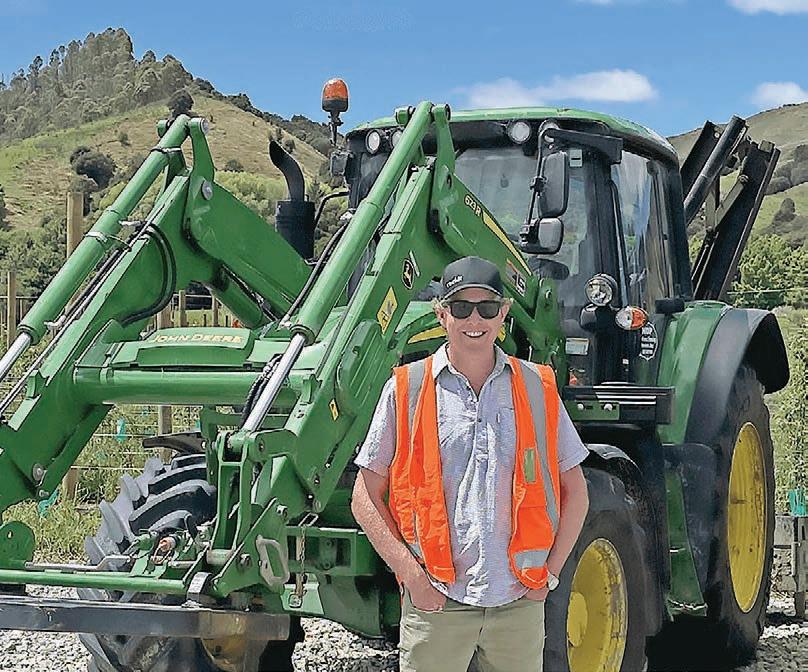
Cyclone lights fire under Land for Life scheme
distinct farm zones were identified on trial farms and mapped for their suitability for growing particular tree species.
CYCLONE Gabrielle has underlined the urgency of farm restoration scheme Land for Life being rolled out on a wider scale throughout the Hawke’s Bay region.
Backed by United States-based conservation group Nature Conservancy, the scheme has been going through an assessment process with Hawke’s Bay Regional Council (HBRC) to determine costs and the benefits likely to come from it.
The scheme is an evolution of the “right tree right place” project developed six years ago, when



Other revenue streams, such as carbon, are included and the remaining productive areas of farms are reconfigured and, in some cases, re-stocked with different stock classes.

Michael Bassett-Foss, HBRC’s project director, confirmed the urgency to get the scheme underway has only grown since Gabrielle, as farmers get a full picture of the damage their land has incurred and grapple with how to fix it.
It is estimated there are about 600 candidate properties on vulnerable soils in the region suitable for the scheme.
One trial farm, owned by Elsthorpe couple Evan and Linda Potter, has enjoyed a good profile among interested farmers. The couple ultimately intend to retire 200ha and leave 520ha in pasture. Bassett-Foss said there are an additional 11 properties that have now had their data assessed and farm environment plans completed for inclusion in the scheme.
He said the challenge for farmers will be how the conversion project will be funded on each farm. The business case has explored a number of options.
Project head Andrew Harrison said this may include looking at how native plantings’ carbon values could be loaded nearer the front of a planting’s life.

Biodiversity credits may also emerge as a funding lever.
“We have had excellent feedback from all participants in this. We can see the potential to have 600 farms getting on board over the next three years. That’s a good proportion of the riskier farms in the region.”

We can see the potential to have 600 farms getting on board over the next three years. That’s a good proportion of the riskier farms in the region.
Andrew Harrison Land for Life
He hopes the business case will be accepted by October by the HBRC.
The Nature Conservancy has built a portfolio of international projects undertaken by 4000 staff across 76 countries aimed at building land use resilience in the face of climatic challenges.
Other projects it is working on in NZ include restoring shellfish ecosystems in Hauraki Gulf.
The Hawke’s Bay project intends to focus on a “flood plains by design” process.
Land is reshaped to enable broader river passages during flood events, removing some of the velocity from water flow while also reducing water losses off steeper country through replanting and vegetation.
5 FARMERS WEEKLY – farmersweekly.co.nz – August 14, 2023 Special Report 5
DISPARATE: Tom Lane has seen the gamut of damage on the farms that supply Rockit Apples, from complete devastation to being left with a harvestable crop.
Richard Rennie NEWS Land
With John Deere oils, excellence is what matters. It’s not just an ingredient. It’s the result of relentless hard work, much like our hardworking machines. Developed by our experts for those who demand the best, you’ll experience unparalleled performance that delivers optimal machine longevity, saving you time and money. Unleash the excellence of John Deere lubricants.

Scan to learn more Deere.co.nz/Lubricants
6
Bringing know-how to silt battleground
Neal Wallace NEWS Land
TIM Jefferd is testing his agronomy skills.
Cyclone Gabrielle deposited silt of varying depths on about 120ha of prime, fertile flats on the family’s two Tolaga Bay livestock and cropping farms.
Mechanical removal was not an option and in places the silt was too deep to work into the topsoil, but using skills acquired from working in the seed and fertiliser industries, Jefferd believed there could other options.
His parents Bruce and Nicki endured Cyclone Bola and Jefferd has complemented their knowledge by tapping into advice from professionals to develop a plan that he hopes will reduce the disruption but also turn adversity into opportunity.

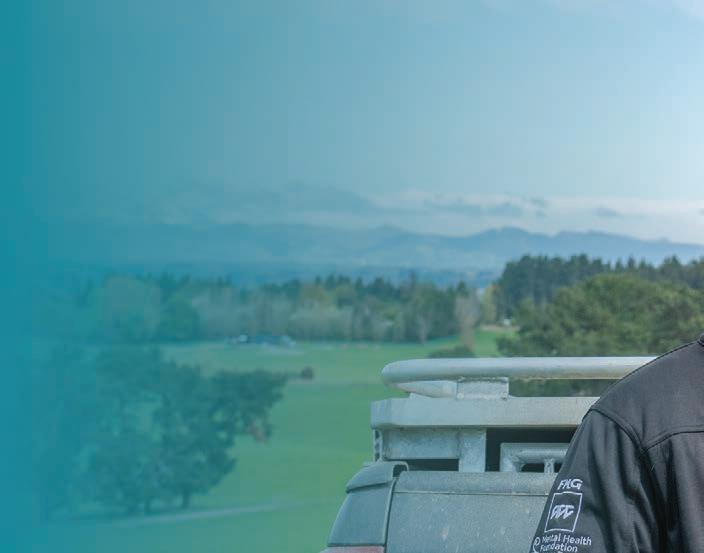
Where the silt is sandy and the depth is shallow, he lightly worked it and in two paddocks has sown the perennial variety, Reason AR37, on which he is lambing ewes, although he has had to apply fertiliser.
In paddocks with deeper silt cover he is planning to introduce lucerne or red clover in spring –deep rooting plants that will tap into nutrients in the now-buried topsoil.
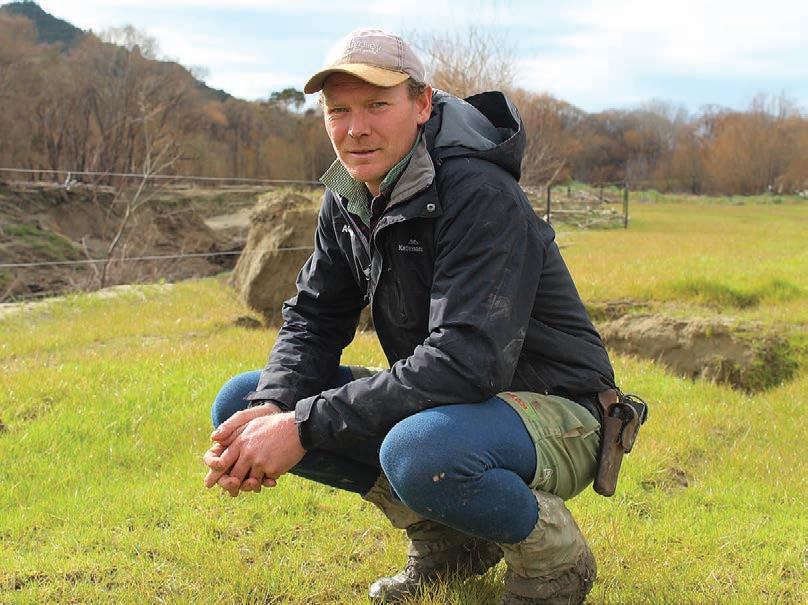

“The sandy texture of the silt will have no rooting depth limitations and these paddocks will dry out faster, therefore will be well suited to lucerne,” Jefferd said.
The farm is summer dry and together with increased drench resistance these forages could be of assistance while also providing new grazing management options. Ultimately the nutrient value of these crops will dictate any future role.
Fertility testing of the siltcovered paddocks reveals pH has lifted from an average of six to eight, Olsen P has fallen from 24 to five or six, and potassium has fallen from 14 to six.

Destroyed fences are being realigned with new structures that are two or three wire with widespaced waratahs or posts, so when the next flood comes they are less vulnerable and less of a barrier for slash and debris.
After a horror two years, the impending arrival of their second
child and the start of lambing are providing Tim and wife Lucy with a milestone as they restart their farming career.
“We’re looking ahead.”
The family lost about 20ha of corn and about half their 40ha maize crop to flood waters and silting.
They only finished harvesting maize in the first week of August,

Gabrielle puts farming priorities in perspective
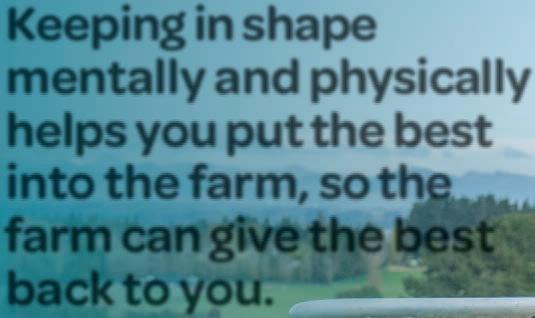
certainly nice to be home and get back in touch with the kids.”
once ground conditions had dried. Jefferd said the disaster has not dampened his energy and enthusiasm but he admitted that could change if the farms are once again inundated with another deluge of water and slash. The response from friends, associates and strangers who have donated fencing equipment and baleage and boosted morale with
The sandy texture of the silt will have no rooting depth limitations and these paddocks will dry out faster, therefore will be well suited to lucerne.
Tim Je erd Tolaga Bay farmer
phone calls and visits has been invaluable, but Jefferd said what his region really needs is restored infrastructure and a solution to the slash issue.
Without reliable roads, services and communication, he fears farmers will struggle to attract staff, especially those with families, which will undermine communities.
Forestry companies have provided heavy machinery and drivers to clear up the slash, but they are not admitting full liability and have been unwilling to discuss the cost of the lost production. Meanwhile the community knows there is further slash sitting in the headwaters ready to be washed downstream.
TIM Nelson and his mates had been planning the fishing trip of a lifetime for several years and the Puketitiri sheep and beef farmer was in Queenstown, all set to head for Fiordland, when he had second thoughts.
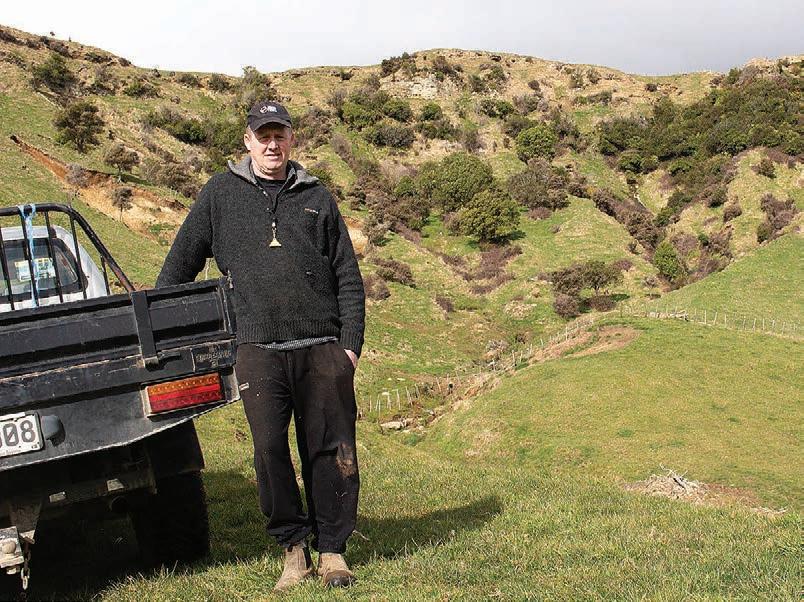

A sleepless night in a hotel as Cyclone Gabrielle swept through Hawke’s Bay brought the realisation he’d better turn for home.
That was easier said than done, with airports and roads closing all over the country, but Nelson was home with wife Alice and their children within a day or so thanks to a flight, a tiny rental car and a friend’s helicopter.
“They were all safe. But yeah, it was still the unknown of how bad it was before I got home. It was

Once the waters receded, it was those same mates that took up the tools and got to work getting the farm back into shape.
“I was very lucky. We have some amazing friends all around the country.
“We had a couple of guys, a bank manager and a good mate, come in pretty early on for a couple days’ fencing and we had my brother in law and a couple of his mates from down south.
Not much worries me anymore – I used to be a bit of a perfectionist, but I’ve learnt that little things can wait, you know?
Tim Nelson Puketitiri
“They came in and started fencing, which was incredible, huge. We got heaps done.”
There was a lot of work, with the farm essentially one big paddock after the fencing network was wiped out.
“But I suppose we were lucky with the season that we had. We had quite a lot of grass, which helped.”

There is still a lot of work to do, but Nelson looks back and can see how far they’ve come.
“The ewes all scanned well and everyone’s been fed pretty well. So we’re just looking forward to spring.
“I’d like to think more or less this time next year everything should be back up and running.”
Nelson said the Puketitiri community has worked tirelessly to make sure everyone is okay.
“We’re all pretty good mates around here and everyone knows each other. We’re lucky to have

like to think more or less this time next year everything should be
a bit of forestry machinery up here and the forestry boys flew in and cleared the roads and all the farmers helped them and all of a sudden the road was cleared into Reddington and everyone was sort of getting around and that was good.”
As for the future, Nelson said he’s optimistic as spring approaches – “as long as it doesn’t happen again”.
“At the time it was daunting. I thought it was all over and we could never fix it but we just took little steps. Not much worries me anymore – I used to be a bit of a perfectionist, but I’ve learnt that little things can wait, you know?
“It will never be exactly the same again, I don’t think, there will always be reminders of the cyclone, but we will get it pretty close.”
find out what works for you and ‘lock it in’, visit farmstrong.co.nz
To
Sam Whitelock Farmstrong Ambassador
7 FARMERS WEEKLY – farmersweekly.co.nz – August 14, 2023 Special Report 7
Keeping in shape mentally and physically helps you put the best into the farm, so the farm can give the best back to you.
GRASS FROM SILT: Perennial pasture grows on a paddock that was covered in silt after Cyclone Gabrielle on Tim Je erd’s Tolaga Bay farm.
Bryan Gibson PEOPLE Weather
LOOKING AHEAD: ‘I’d
back up and running,’ says Tim Nelson.
‘Adult conversation’ due on India trade
THE red meat sector wants to have a “proper adult conversation” about how New Zealand can develop its trade relationship with India.
Discussion about whether a NZIndia free trade agreement (FTA) is viable and how NZ should develop the relationship came up multiple times at the Red Meat Sector Conference in Auckland this week.
In the past year, NZ has signed FTAs with the United Kingdom and European Union. The UK deal was applauded by the red meat sector, but the EU deal was labelled “poor quality”.
India has also recently signed two FTAs, with the UK and Australia. In Australia’s case, dairy was excluded from the preliminary trade deal.
The previous National government started talks with India but they did not go anywhere due to the significance of the dairy sector in both countries.
India is among NZ’s top 15 trading partners, with two-way trade in goods and services worth nearly $2.2 billion.
Trade with India came up during the political debate at the conference on Sunday evening.
Trade Minister Damien O’Connor somewhat downplayed what could be done with India. National’s Todd McClay said a high-quality FTA with the country would be a priority if his party got into power after October’s election.
O’Connor said while India was a focus, the government has to be realistic and not “promise you something we can’t get”.
He noted he’d be heading to India in the coming weeks to develop relationships. His office didn’t respond to a request for comment about that trip.
Meat Industry Association chief executive Sirma Karapeeva said in an interview that trade with India should be a priority and a “proper adult conversation” is needed – “we can’t ignore it as a fast-growing economy with a huge middle class which is increasing in wealth”.
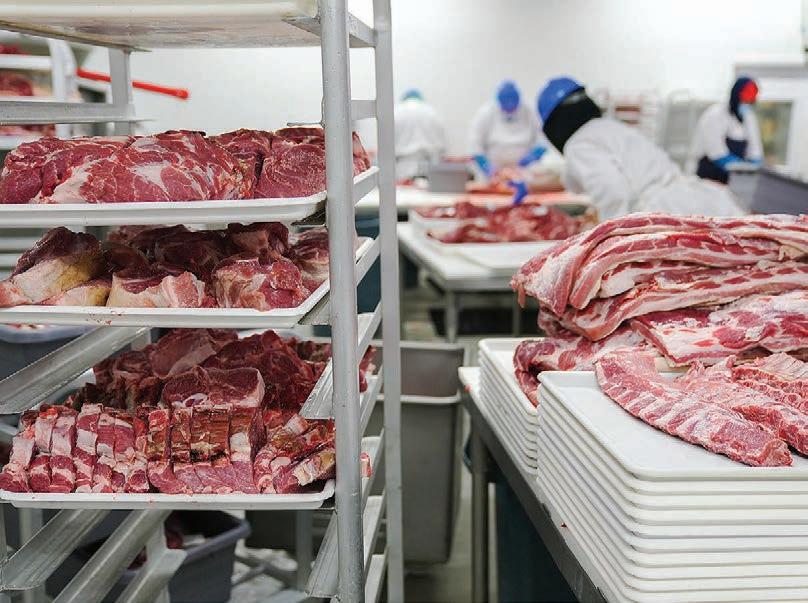
Karapeeva travelled to India last year and was surprised at how focused the country was on growing its economy and putting itself on the global map as a “powerhouse”.
“So, we can’t ignore India.”
India is a “very particular” country and NZ needs to think creatively about how to approach the relationship.
“I think it really falls on our shoulders to start investing and building up that relationship now,

OPPORTUNITY: Because of religious beliefs in India, NZ’s beef is clearly off the table, but Sima Karapeeva says sheepmeat is where the opportunity is.
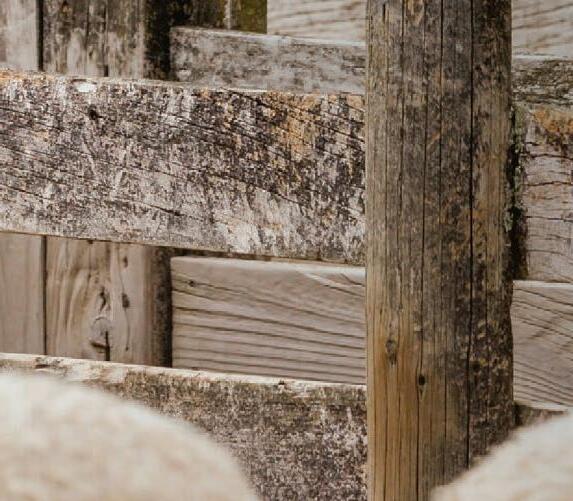
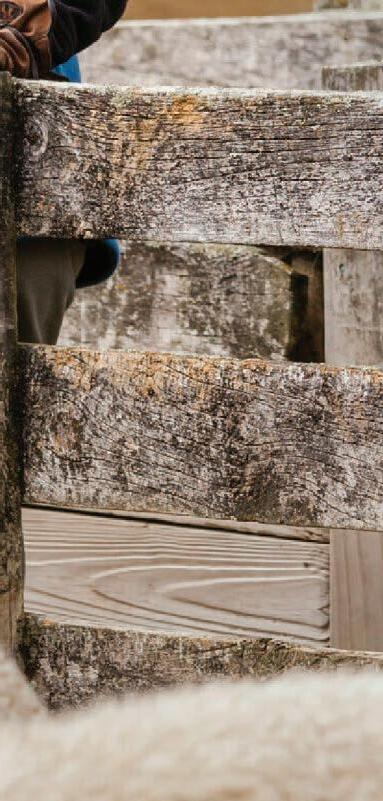
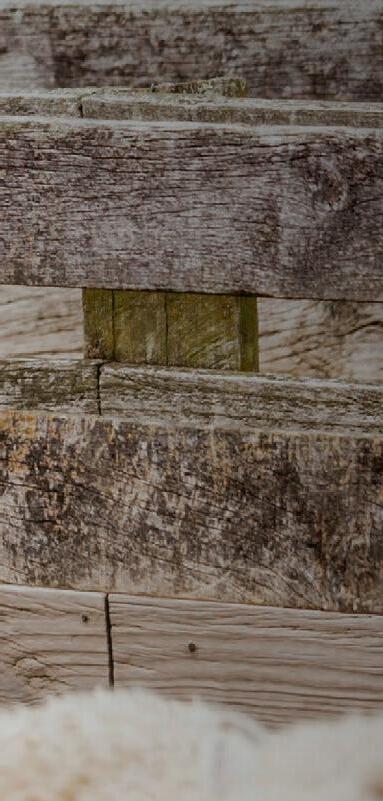
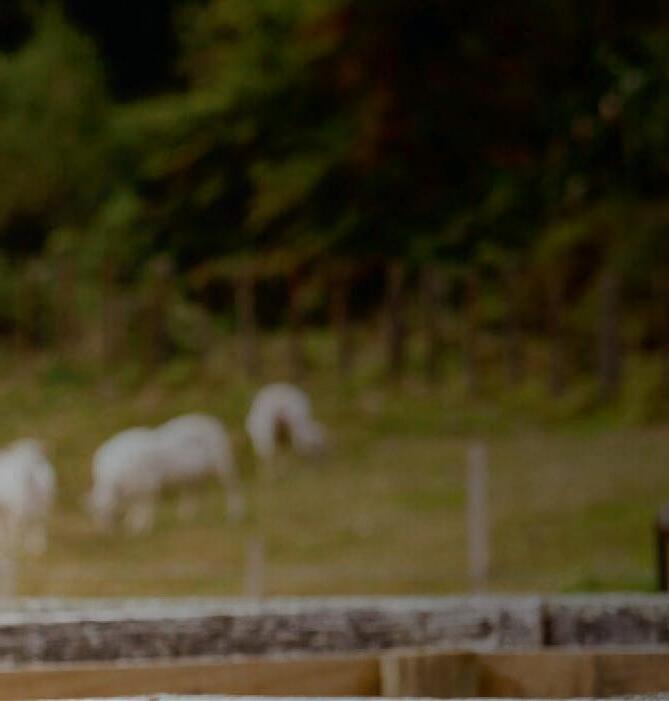

so that some time in the future we can actually get round the table and discuss trade issues.”
Karapeeva said she understands O’Connor’s comments that he can’t promise an FTA.
“I don’t think anyone’s asking him to promise an FTA from today to tomorrow. What the sector is really interested in is a long-term strategy on how we tackle this market.”
Because of religious beliefs in India, NZ’s beef is clearly off the table, but Karapeeva said sheep
meat is where the opportunity is.
Currently, it faces a tariff of between 30% and 33%.
Karapeeva said the MIA had one company that exported with that tariff applied and had been very successful in targeting high-end restaurants and hotels.
During the debate at the conference, O’Connor misquoted Karapeeva saying she’d backed up a comment by another sector leader who said NZ should progress without dairy.
She said talking about whether
to negotiate with or without dairy was putting the “cart before the horse”.

“My position is that we should have a proper adult conversation about how we tackle this market and what the strategy is.
“I think the strategy is building up those relationships, building up the trust in the Indian system. Once there is that trust, the pathway to talk about trade issues will be very different to the ones we’re facing at the moment.”
Ministry of Foreign Affairs and Trade deputy secretary and chief negotiator Vangelis Vitalis said both India and the United States should be at the top of the list for NZ.
Currently, nearly 75% of NZ’s exports are covered by “legally binding enforceable agreements”, but to get to 90% NZ needs two big agreements.
“One is clearly the United States and the other is, of course, India.”
Those two are big challenges considering neither is particularly enthusiastic about a negotiation with a country such as NZ.
“An open market, offering very little immediate benefits, but bringing a whole lot of sensitive issue to the table for them ...
“We are going to have to ... find a way to work with India.”
MORE: See pages 15 and 20
TRACTA65982_ AUGUST 4 MONTHS_FW Enjoy 4 months half price when you sign up to a Farmside RBI Broadband plan for 24 months. Great great big broadband rural at a discount. *Ts & Cs apply. RBI Wireless Broadband 200GB per month for the first 4 months per month for the first 4 months $47.99 RBI Wireless Broadband 400GB $62.99 RBI Wireless Broadband for rural Kiwis. Call 0800 32 76 74 or visit farmside.co.nz 8 FARMERS WEEKLY – farmersweekly.co.nz – August 14, 2023 News 8
BusinessDesk MARKETS
Meat Industry Association
First Hawaii trays off in iwi kiwifruit push
IWI kiwifruit growers have shipped their first container load of kiwifruit to Hawaii in what they hope will become a wider marketing initiative for not only iwi orchardists but the entire kiwifruit sector.

The first container-load of kiwifruit bound for Hawaii was loaded after a short ceremony at EastPack’s Te Puke cool stores, for shipment via South Korea. The 20t load consisted largely of SunGold fruit and was the first of three intended to be sent this season.
The shipment is the first initiative of Māori Kiwifruit Growers (MKG) under a collaborative marketing plan that gives the group the rights to sell Zespri-branded fruit into the Hawaiian market. Zespri offers collaborative marketing opportunities in niche or emerging markets around the world to 15 companies.
MKG general manager Amy Tocker said with iwi ownership now contributing about 10% of crop volume, building relationships at a marketing level through such agreements is an opportunity for iwi to have more skin in the game.
The initial container comprised fruit from a variety of orchards, but organisers are working to source fruit specifically from iwi-owned orchards for future dispatches.
“We become exporters in our own right, bearing the costs and risks that go with that, and if we do a good job on volume and value, that will also benefit all growers.”
The first Hawaiian shipment marks the completion of two years of hard work for Tocker and her colleagues.
They have aligned the group with Aloun Farms Hawaii, a company specialising in growing quality seasonal produce in Hawaii that also has a strong focus on employing locals, community pastoral care and working with indigenous groups.
As a market, Hawaii is far from the biggest for Zespri fruit, accounting for about 80,000 trays a year.
But Tocker said given the Aloun company’s values, and the relative small size of the market, it is a good place to start such an initiative.

She said the market provides a good opportunity to leverage off shared values and indigenous links including festivals like Matariki, which is starting to be celebrated more in Hawaii, albeit in October.
The Pacific Festival of Arts is another event that could be used for marketing and promotion, and


iwi also have strong links to the University of Hawaii.
“We have a larger supermarket chain up there that is relatively untapped that we would like to build a relationship with. With orchards along the East Coast, it also means we have the potential to sell early fruit into the market.”
Rex Anderson, property manager for Whiritoa Orchards at Te Teko, winner of the 2022 regional Ballance Farm Environment Awards, said it is a credit to Zespri that is has enabled the initiative to take place.

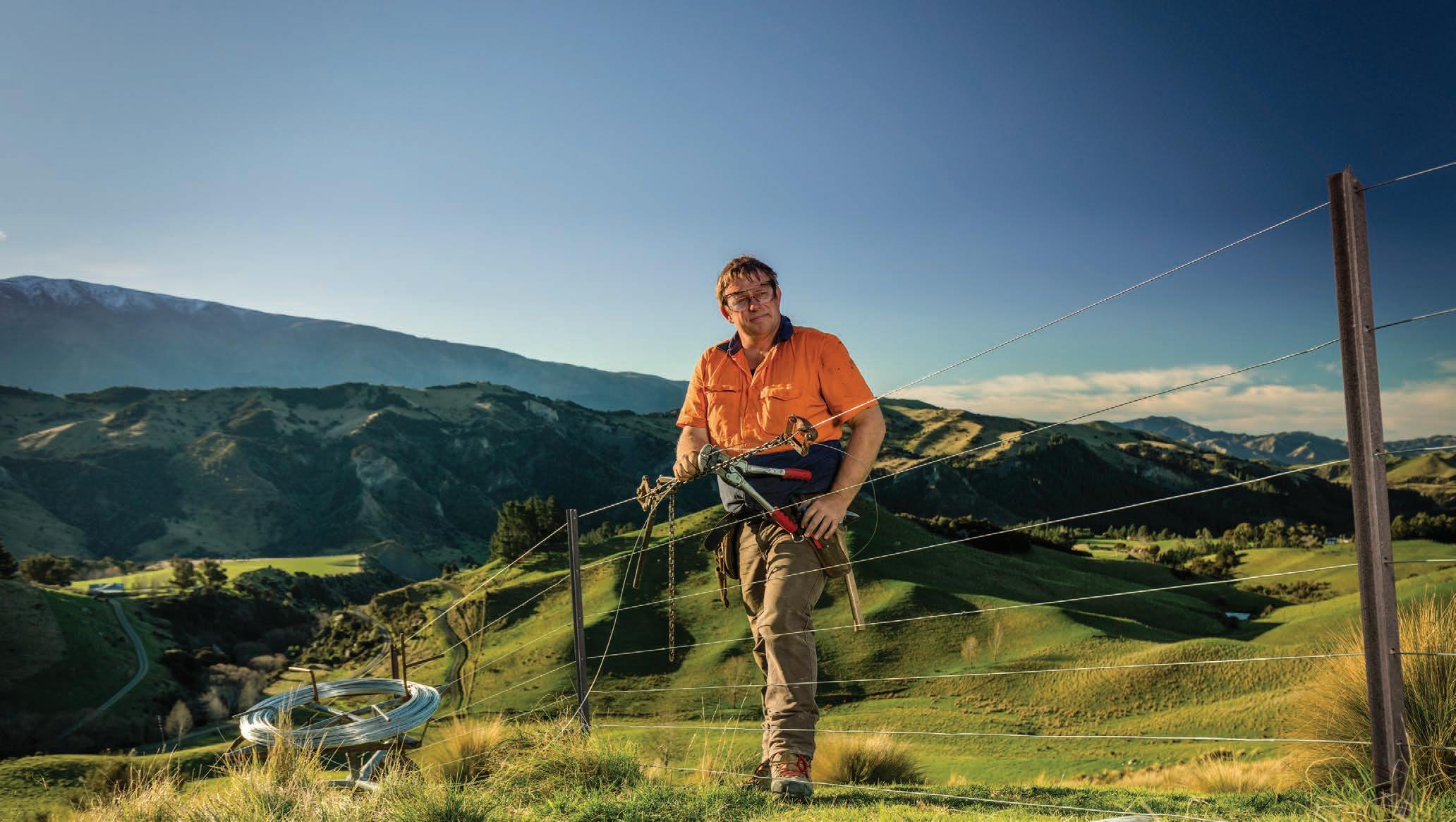
His hope is that the effort will prove to be a springboard into


mainland United States for more fruit.
“Provenance is a big thing for markets overseas. It is a point of difference there and an opportunity for Zespri to look at how to incorporate it into its marketing too.”
He said he hopes the initiative will provide a good start to promote the iwi group’s other products, which include blueberries and mānuka honey.
Tocker said the collaborative effort provides an opportunity to test indigeneity as a marketing strength, with Zespri, as one of the world’s most powerful fruit brands, offering support.
9 FARMERS WEEKLY – farmersweekly.co.nz – August 14, 2023 News 9
Richard Rennie MARKETS Horticulture
BLESSED: Iwi elder Turi Ngatai blesses the rst consignment of kiwifruit headed to Hawaii under the Māori Kiwifruit Growers initiative.
Photo Jamie Troughton Dscribe Media Services
Teens cast fresh eyes on farming’s future
BUSINESS inspiration comes in many forms.
For a group of North Island teenagers it was huhu grub protein powder, alpaca milk, micro-green capsules and a skin-soothing ointment made from kawakawa and flax.
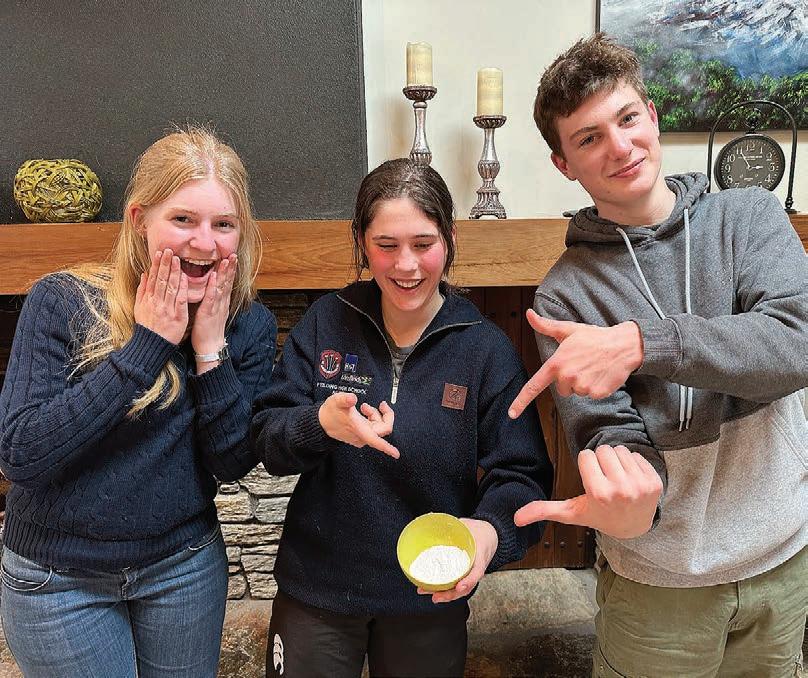
These were the products presented by the teens at AgriHQ’s Ag&Ed Innovation Challenge, held in Feilding.
The challenge was the culmination of a six-week Ag&Ed education programme, which featured in Farmers Weekly, in partnership with the Ministry for Primary Industries (MPI).
Twenty pupils from the lower North Island were selected for the challenge, and 13 were able to attend the challenge weekend.

Ag&Ed project manager Dave Craig said the aim of the challenge was to develop an export-quality product or service, using 4.8 hypothetical acres of land with Class B soil.
The first customers for the products had to be based outside New Zealand.
The Year 11-13 students gathered on Friday evening and were put into teams. They had until Sunday to develop their product and pitch it to a team of judges.
Throughout the weekend
industry experts James Stewart of Stewart Dairylands, Mat Hocken of Grassmere Dairy, Sarah Lockhart of Rabobank and Gareth Evans of MyFarm held fireside chats with the contestants, offering their experience, inspiration and some direction.
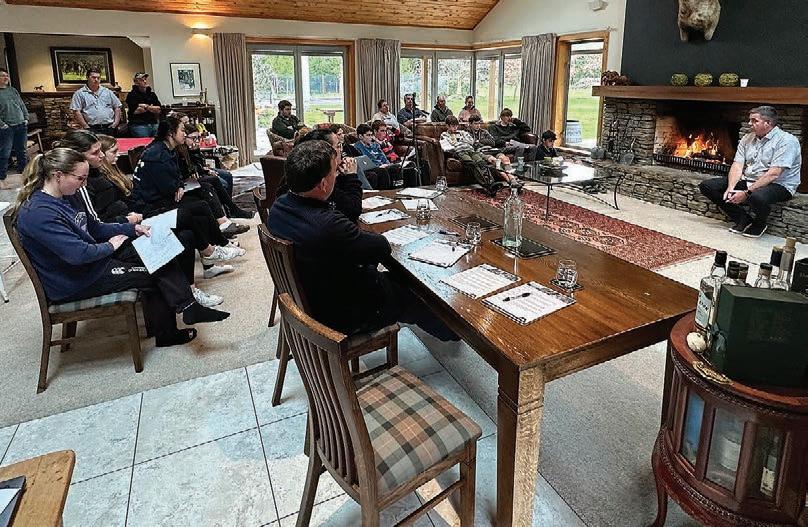
“The aim of the speakers was to show [the development process] from grass to investment. You could work on the land, or help people work on the land, or you could invest to help people work on the land,” Craig said.
“There are all these different aspects as to what the ag sector is.”
or swallowed in capsules were developed for the United States market, and farming alpacas and selling their milk to Brazil was another idea. The animals’ wool could also be used to produce high-end jerseys.
Craig said after much deliberation the huhu protein powder was chosen as the winner because it was a “niche product, innovative, and they had done their homework around the customer market”.
Adelyne Patrick, Jade Askin and Harry Oliver made up the winning team.
Craig said he and others at the event were blown away by the ideas the teens came up with.
“The word that I have is ‘inspired’,” said Craig.
“Every time we do something like this with young people I’m always blown out of my boots.
The teams came up with a wide variety of ideas for products.
One planned to farm huhu grubs, which have 30% more protein than chicken, and develop a huhu protein powder to target the Asian market.
Another proposed growing kawakawa and native flax and creating a natural ointment to sooth sunburn, targeting Australia.
Micro-greens that could be ground up and spread on food
“The way that they worked together, the way that they talked to each other, the way that they problem-solved ... It’s a really beautiful process to watch.”
Craig said the winning team will be taken to Wellington to pitch their product to MPI staff. The winners will also visit tech businesses in the capital and farms in the lower North Island.
The aim is now to grow Ag&Ed and the innovation challenge with a view to holding two events next year, timed to coincide with National Fieldays in Hamilton and Central Districts Field Days in Feilding.
“One of the biggest successes out of the pilot was that teachers started to use the Ag&Ed doublepage spread in Farmers Weekly as a proper teaching resource.
We have created modules in agribusiness that they could literally pop out and use.”
The response to the innovation challenge from those involved was amazing, he said.
“I had one parent say that the farming sector in New Zealand is sometimes seen as doom and gloom, but seeing this gave them
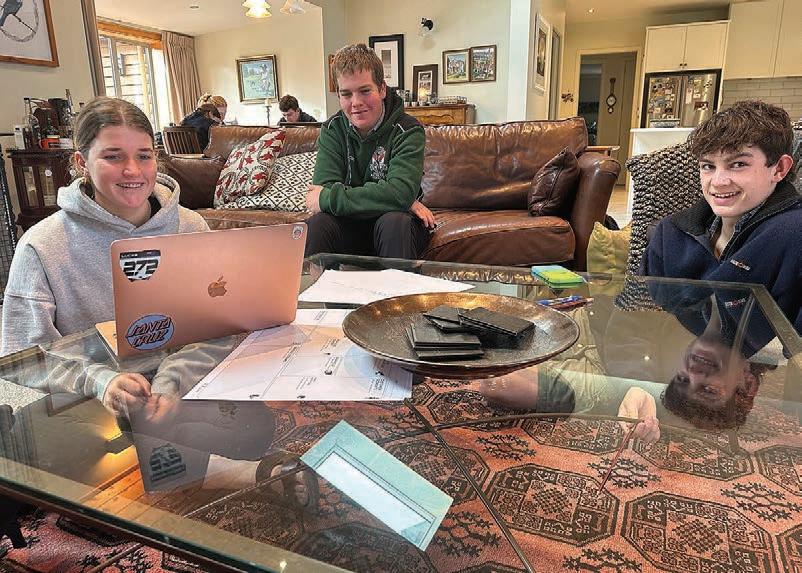
hope that the next generation is going to keep the sector cranking.
“That’s pretty cool to hear.
“It’s crucial for us to keep our kids engaged. Projects like this give a big eye-opening experience to kids about ag. It’s not just dairy and sheep, it’s ag tech and all the different aspects that make up the industry.”
Bovaer clears first NZ hurdle
THE Environmental Protection Authority has approved a feed additive to reduce methane emissions in livestock.
DSM Nutritional Products (DSM) applied to import or manufacture a substance containing 10-25% of 3-nitrooxypropanol (3-NOP, the active substance sold under the brand name Bovaer) – a chemical that is new to New Zealand.
DSM said 3-NOP can reduce methane emissions from ruminant animals, including cows, sheep and goats, by 30%.
“Substances for climate change mitigation are still new to New Zealand and are important for meeting New Zealand’s international obligations under climate agreements.
“This is the country’s first application for a methane
inhibitor, so it was important to confirm how 3-NOP would be used and the information we required to carry out an appropriate risk assessment,” Dr Chris Hill, general manager of hazardous substances and new organisms, said.

“To ensure this was a robust assessment, the application was subject to a number of requests for additional information.
DSM also put the application on hold for around eight months, so they could compile further information for the risk assessment process.”
In concentrated forms, 3-NOP can pose significant risks to people and the EPA has put in place rules for safely using the substance.
This application does not cover lower concentrations of 3-NOP likely to be added in the final products used in agriculture or by farmers, and some formulations may require separate EPA approval.
The EPA is working with the Ministry for Primary Industries on the regulation of methane and nitrogen inhibitors, with the aim of streamlining the EPA’s application and assessment process for these substances.
New Zealand Food Safety (NZFS) deputy director-general Vincent Arbuckle said it has not received an application from DSM to use Bovaer in animals here under the Agricultural Compounds and Veterinary Medicines Act, and it’s the company’s choice when to make one.
“It’s important to note that the product is mostly used in housed feeding situations overseas, which differ from New Zealand practices,” he said.
NZFS has recently engaged with DSM to discuss timing for an application to register Bovaer for use in animals, which is separate from the EPA’s role to assess its risk assessment for human health and the environment.
10 FARMERS WEEKLY – farmersweekly.co.nz – August 14, 2023 News 10
WINNERS: Adelyne Patrick, Jade Askin and Harry Oliver claimed top prize in the Ag&Ed Innovation Challenge.
ENGAGED: The contestants took part in a series of ‘fireside chats’ with industry experts.
Craig Page PEOPLE Innovation
DOWN TO BUSINESS: Lucy Allomes, Mason Woodhouse and Baxter Twist work on their innovation challenge pitch.
RELAXED: Haylee Baker and Davina Zhang are are all smiles at the innovation challenge.
Staff reporter NEWS Feed
Every time we do something like this with young people I’m always blown out of my boots.
Dave Craig Ag&Ed
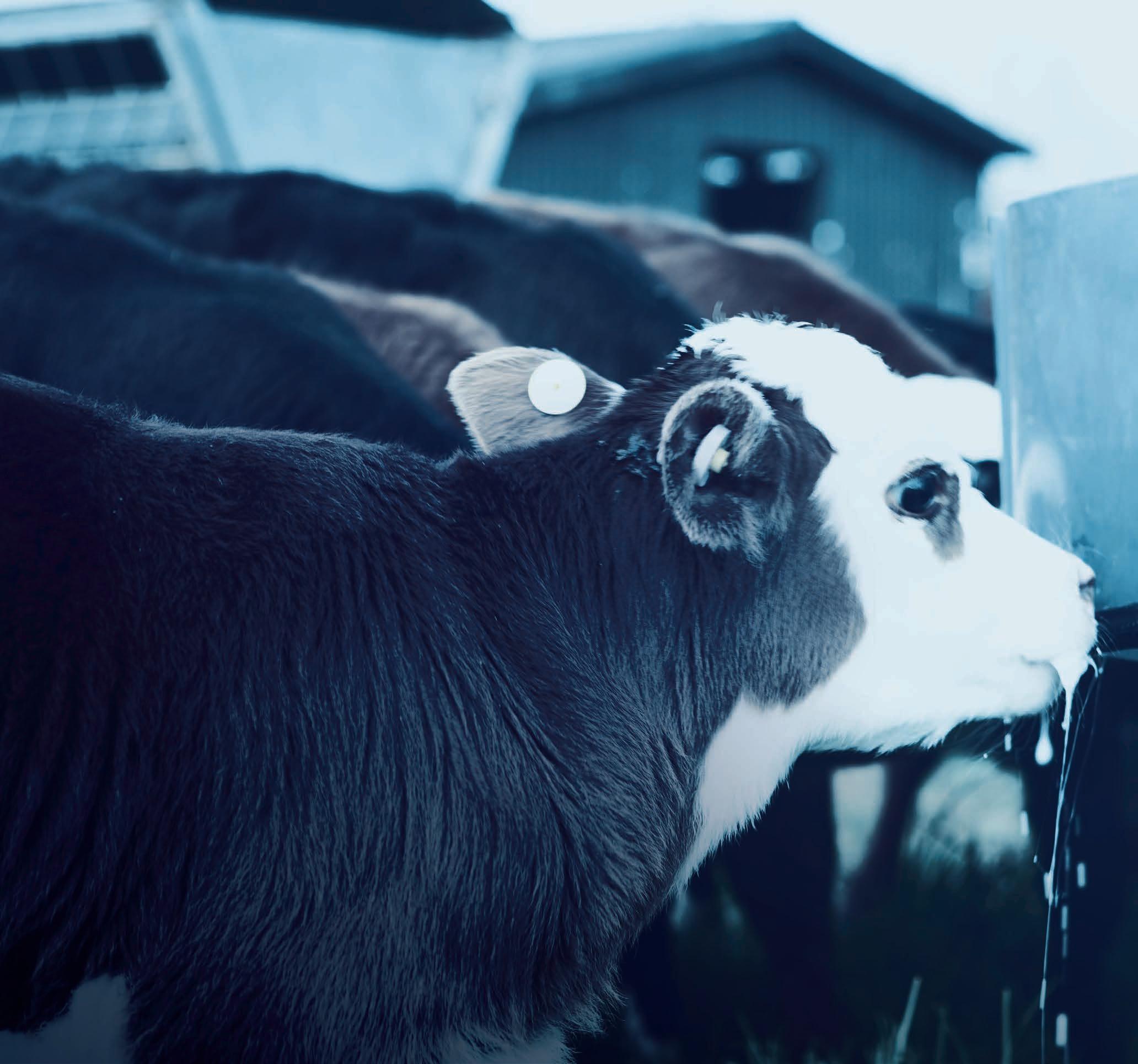











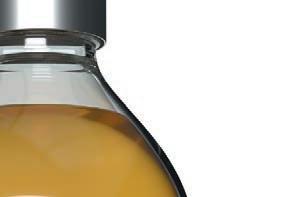
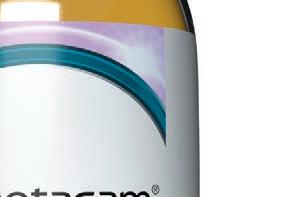









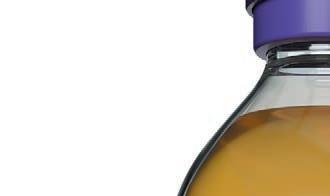
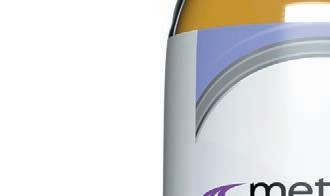













11
Forestry growing even faster than feared
forestry interests in 2021,” he said.
THE scale and pace of sheep and beef land being purchased for forestry is even higher than first thought, a new report says.
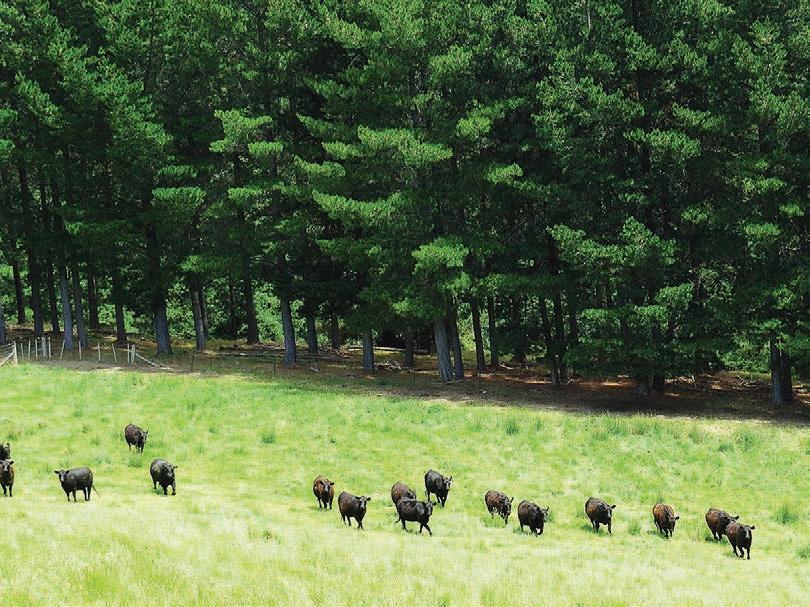
An updated Orme & Associates report on land use change from pastoral farming to large-scale forestry shows the amount of land sold in 2021 soared 66% compared to the previous year.
Beef + Lamb New Zealand (BLNZ) CEO Sam McIvor said the report will be alarming for farmers, rural communities and New Zealanders in general, who are already concerned about the conversion of food producing sheep and beef land into carbon farming.
“The Orme & Associates report was commissioned by BLNZ two years ago to track the amount of land purchased for afforestation and taken out of pastoral production.
“It initially showed more than 52,000ha of land was purchased for
“However, the latest revised data shows that figure to be more than 63,000ha, a 66% increase on 2020 and up from 7000ha in 2017.”
Uncertainty over policy changes led to a decrease to 36,000ha in 2022, but McIvor said this figure is likely to increase because there is a backlog of applications sitting with the Overseas Investment Office (OIO).
“This takes the total to more than 200,000ha of sheep and beef farms bought over the last five years, which is a significant concern for the sheep and beef sector and rural communities,” he said.
McIvor said the scale of change is far more than what is recommended by the Climate Change Commission and will have a negative impact on rural communities, food production and export income, which affects all New Zealanders.
“New Zealand is one of the only countries in the world that allows fossil fuel emitters to offset 100% of their emissions,” he said.
“The government is currently
CONCERN: Sam McIvor says the scale of forestry change is far more than what is recommended by the Climate Change Commission and will have a negative impact on rural communities, food production and export income.
consulting on changes to the Emissions Trading Scheme, and it needs to act.
“BLNZ is not anti-forestry, there is absolutely a place for it and for some offsetting. We know many farmers are interested in integrating trees into their farms,
Committee seeks review of animal welfare legislation
Staff reporter
NEWS
Animal welfare
THE government has been asked to hold a “prompt and substantive review” of the Animal Welfare Act 1999.
The request comes from a Regulations Review Committee, headed by National MP Judith Collins, and follows a report into how secondary legislation, such as codes of welfare, is handled under the Act.
The committee’s report, Briefing on Animal Welfare Secondary Legislation, stems from a hearing in September last year with the New Zealand Animal Law Association (NZALA) regarding its report, Farmed Animal Welfare Law in New Zealand: Investigating the Gap between the Animal Welfare Act 1999 and its Delegated Legislation.
That report concluded there is a gap between the standards of animal welfare envisioned by the Animal Welfare Act 1999 and the standards set in the codes of welfare and regulations made under the Act.
The NZALA believes the secondary legislation failed to ensure that the physical, health
We need to wait and see what this review looks like, but this could be a game-changer for animals.
Debra Ashton SAFE
BLNZ is not antiforestry, there is absolutely a place for it and for some offsetting.
June 2022, a drop of 400,000 from the previous year, with numbers likely to fall further due to new plantings.
The Ministry for Primary Industries’ Afforestation and Deforestation report, which focuses on larger scale planting, supports BLNZ’s findings.
“While whole farm sales seemed to have slowed last year, new plantings continued at pace with another 64,000ha of new forestry planted in 2022,” said McIvor.
and behavioural needs of animals are met, as required by section 10 of the Act.
Following that hearing, the Regulations Review Committee opted to prepare an overview of secondary legislation relating to animal welfare that “we and previous iterations of the Regulations Review Committee have considered”.
The committee found the volume of complaints regarding inconsistencies between secondary legislation and the Act highlighted the need for an investigation.
As a result the committee has asked the government to conduct “a prompt and substantive review” of the process for developing secondary legislation under the Act, and look into whether all existing secondary legislation, particularly codes of welfare, are consistent with its objects and intentions.
SAFE chief executive Debra Ashton welcomed the review, saying the animal welfare framework in NZ is overdue for a shake-up.

“We need to wait and see what this review looks like, but this could be a game-changer for animals,” Ashton said.
“Take colony cages for example, which SAFE has been calling to be banned for years. They’re still in use, even though they breach the Animal Welfare Act. Clearly, the process right now for developing codes of welfare is deeply flawed.
“NZALA and SAFE had to go to court to challenge the use of farrowing crates, which should never have needed to happen. Small cages where animals can’t even turn around are not in line with the intentions of the Act, which requires that animals have the ability to express normal patterns of behaviour.”
but there is a need for some balance.”
McIvor said the impact of land use change is now being reflected in livestock numbers with Statistics New Zealand’s 2022 Ag Census data showing the national sheep flock to be 25.3 million as of
“MPI have also surveyed foresters’ intentions for 2023 and estimate a further 88,000ha of new planting in 2023. This data reinforces how quickly farms are being converted.
“The government must urgently work with the sector to implement limits before it’s too late.”
Massey team scoops animal welfare award
Staff reporter TECHNOLOGY
Animal welfare
DEVELOPING a database that acts as a communication tool for researchers to improve animal welfare has landed a Massey University team a national award.
The team, comprising Neil Ward and his colleagues, is the recipient of the 2022 Aotearoa New Zealand John Schofield 3Rs Award in recognition for providing a platform that fosters collaboration, and that can reduce animal involvement in research, testing and teaching.
The award was jointly presented by the National Animal Ethics Advisory Committee (NAEAC) and the Australian and New Zealand Council for the Care of Animals in Research and Teaching (ANZCCART).
“The concept of the 3Rs (replacement, reduction, and refinement) is to improve animal welfare and replace and reduce live animals where possible, refine study design, handling, and housing of animals to improve life experiences,” NAEAC chair Professor Nat Waran said.
The Palmerston North-based team within the Tāwharau Ora School of Veterinary Science, and Information Technology Services demonstrated their commitment to the 3Rs through their development of a webbased database application to enable teachers and researchers to share samples for use in
research, testing and teaching. The web page acts as a communication tool that facilitates connection between researchers within Massey. While the tool is currently only available for Massey University staff, Ward hopes to complete the process to open the platform to all users in NZ.
“The purpose of the site is to provide a communication portal to link donors of samples with requesters who may wish to make use of suitable material,” Ward said.
The purpose of the site is to provide a communication portal to link donors of samples with requesters who may wish to make use of suitable material.
Neil Ward Massey University
Teachers and researchers can join the community on the website and subsequently post surplus samples available at the end of their project, or search for other donors to make a request to share.
“Through this database, we hoped to develop a practical and easy to use solution that aligns with the 3R principles,” Ward said.
This is the second time Ward and his team have won the award, and they are the sixth Massey recipient since 2003.
12 FARMERS WEEKLY – farmersweekly.co.nz – August 14, 2023 News 12
Staff reporter NEWS Land use
Sam McIvor Beef + Lamb New Zealand
A GOOD LIFE: SAFE chief executive Debra Ashton believes the animal welfare framework in New Zealand is overdue for a shake-up.
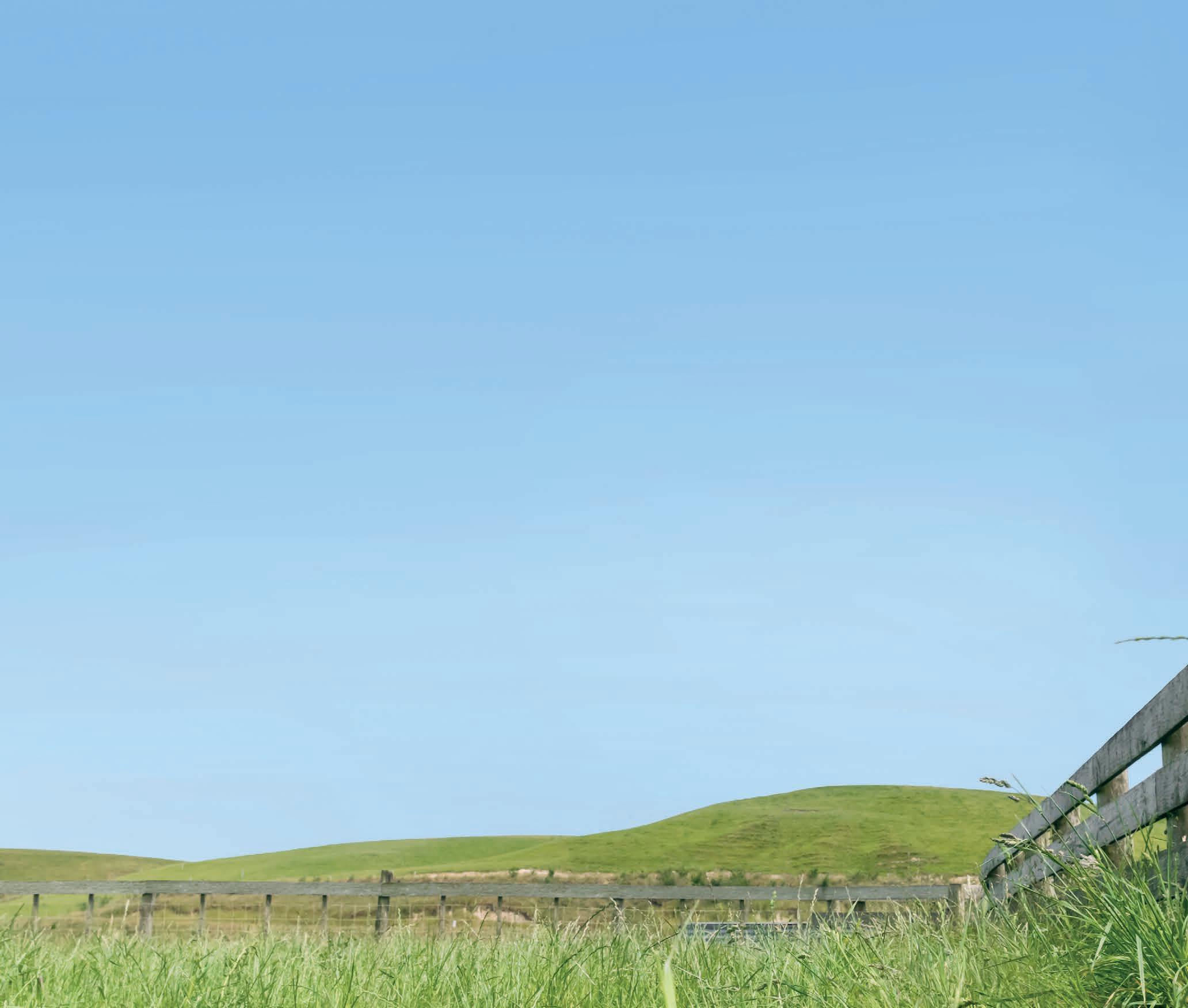
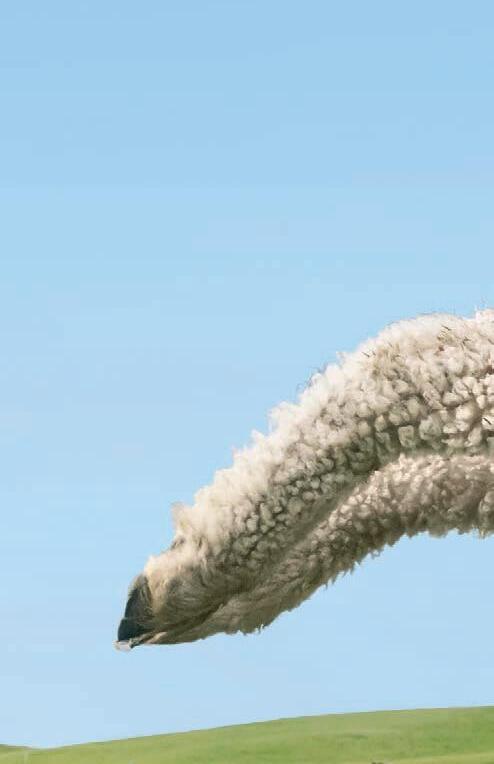


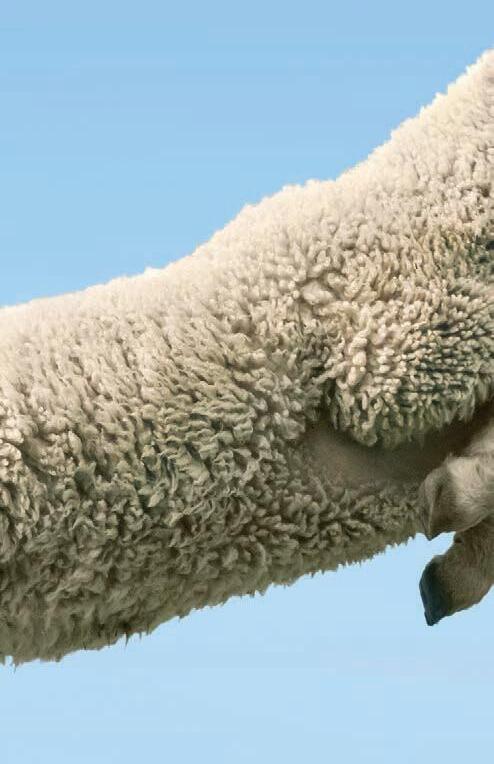

























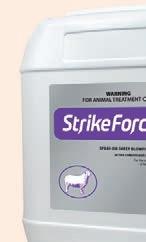

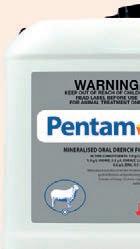

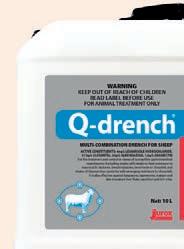










13
Plummeting milk price ‘will cost NZ $5bn’
would record a loss of $54,600.
Journeaux said at $7/kgMS, that deficit worsens to $138,000.
he can weather the storm, he feels for new farm owners who have high debt levels.
AN ESTIMATED $5 billion has been wiped off of the economy with recent news that Fonterra has reduced its forecast farmgate milk price midpoint from $8 to $7kg/MS.
AgFirst economist Phil Journeaux said the $1/kgMS cut will reduce farm incomes by about $1bn, and the economic impact to the country will be about $5bn.

Farmers said they had been expecting a drop in the farmgate price for the coming season, but the magnitude has surprised them.
Fonterra said its forecast farmgate price range for the coming season is now $6.25$7.75/kgMS, with a midpoint of $7/kgMS, down from $7.25-$8.75/ kgMS, with a midpoint of $8/kgMS.
Journeaux said he was surprised by the size of the reduction, which will have a significant impact on farmers.
“Things are going to get bloody serious very quickly.”
An AgFirst financial survey of dairy farms in the Waikato and Bay of Plenty calculated a break-even point of $8.29/kgMS.
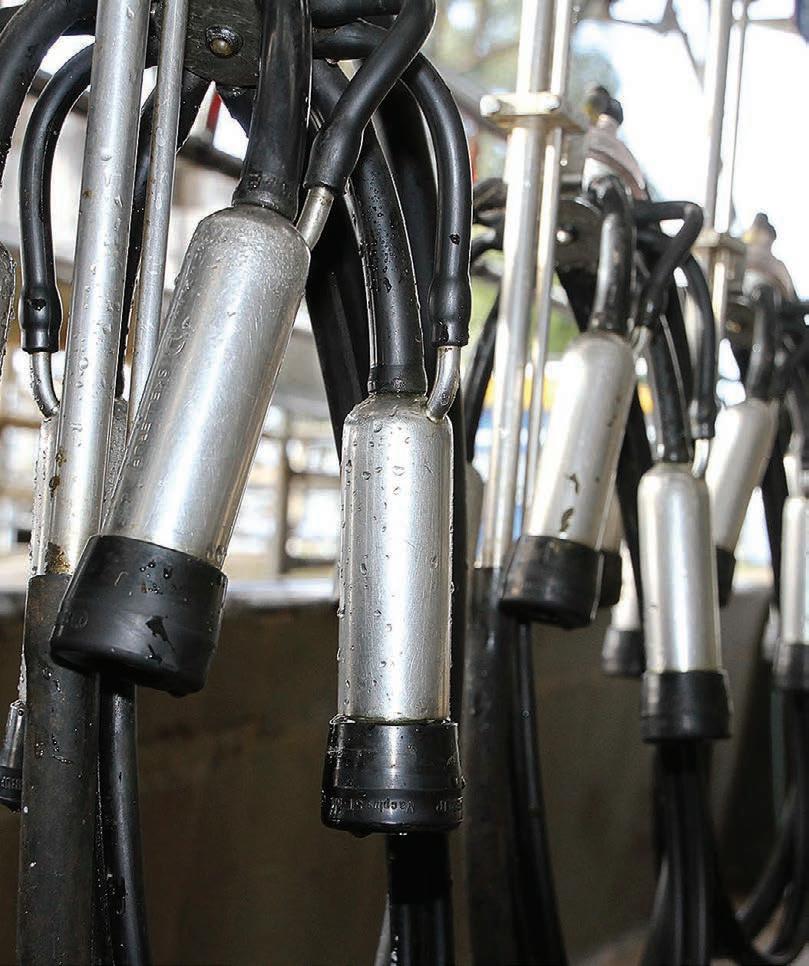
At a payout of $8.10kg/MS, AgFirst calculated those farms
Fonterra shareholders will be able to offset that loss with dividend payment and capital distribution, but that is not available to sharemilkers and nonFonterra shareholders.
“Basically it will mean slashing any farm working expenses, debt repayment, capital expenditure, cutting repairs and maintenance and fertiliser.”
Phil Journeaux AgFirst
Southland dairy farmer Robert Kempthorne said his goal is to prevent the fiscal impact compounding by containing it in one season.
He is resigned to not making any capital investments, making only essential repairs and maintenance and being strategic with fertiliser use.
“We knew it was possible but it will definitely send a shock wave, [not only] through rural communities but NZ as a whole in terms of how fragile things are.”
Bay of Plenty farmer Darryl Jensen said while he is confident
The price forecast follows a wet year for many farmers in the north of the country, in which they incurred extra costs in addition to sharply rising costs and interest rates.
“There is real pressure on our businesses.”
He predicts plenty of conversations between farmers and their banks.
Fonterra chief executive Miles Hurrell said confidence in May that Chinese demand would lift had not been realised.
Since then, Global Dairy Trade (GDT) whole milk powder prices have fallen 12% and China’s share of GDT events has been below average.
“This reflects a current surplus of fresh milk in China, resulting in elevated levels of local production of whole milk powder, and reducing near-term whole milk powder import requirements.”
Information provided by Fonterra shows the forecast advance payment for the coming season will be between $5.25/kgMS and $5.80/kgMS, down from $5.70/ kgMS to $6.75/kgMS for the same period last season.
Rabobank Agribusiness Monthly report notes that most dairy prices are below five-year averages as
NORTH ISLAND AGRICULTURAL ONLINE BIDNOW AUCTION


producers wait for China to reenter the market.
Northern hemisphere milk
production is flat due to hot weather, and cow numbers are falling as farmers reduce costs.
SOUTH ISLAND AGRICULTURAL
STARTS:
• Unused New Holland Megacutter 860P Mower
• Unused New Holland Duradisc F300 Mower
• New Holland Square Baler BB1290 Plus
• New Holland Square Baler BB9060
• New Holland Square Baler BB950A
• New Holland Roll Baler 135 Combi Bale Wrap
• New Holland Roll Baler BR6090 Combi Wrap
• New Holland Roll Belt 150 Cropcutter Baler
• New Holland Roll Belt BR740 Cropcutter Baler
• Lely Roll Baler 245 Combi Bale Wrapper
• McHale 991B Trailing Bale Wrapper
• Hustler Bale Feed Out Unrolla LM105
• Hustler Soft Hand Bale Grab
• Fella SM 2460 3Pl Disc Mower
• Robinson Super Comby Feed Wagon
• Giltrap MSX100 Feed wagon
Tractors
• New Holland T4.100F 0hrs, Narrow
• New Holland Boomer 50, 0hrs & Loader
• New Holland Boomer 35, 0hrs & Loader
• New Holland Boomer 25, 0hrs & Loader
• New Holland T7-185 5,910hrs & loader
• New Holland T7-165 1,086hrs & Loader
• New Holland T6-175 3,883hes & Loader
• New Holland T6-175 7,323hrs & Loader
• New Holland T7050 9260hrs & loader
• New Holland T6070 4,170hrs Cab
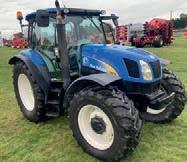
• New Holland T6050 4,074hrs & Loader
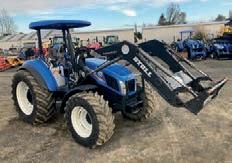
• New Holland T6050 5,140hrs & Loader
• New Holland T6030 3,195hrs & Loader
• New Holland TS135A 8726hrs & loader
• Horsch Simba Pronto DC6 Disc Seeder
• Horsch Simba Pronto DC6 Disc Seeder
• Monosem NG4 plus Vac Planter 12 Row
• Kverneland Monopill SE 18 Row Planter
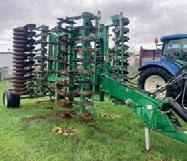
• Taege 300EDW 3mtr Tyne Seeder
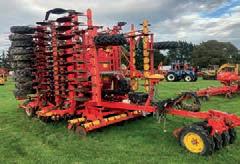
• Aitchison Roller Drill 20row Seeder
• Alpego RK350 Power Harrow Disc Seeder
• Jean De Bru Monoliner VRV36 Offset Disc.
• Simba Great Plains SL500 Cultivator
• Amazone Catros 5501-T, 5.5m Speed Till
• Lemken Diamante Reversable Plough 7 Farrow
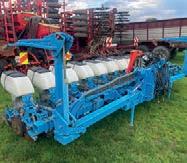
Hay Equipment
• Unused Khun 8131 Hay Rake
• Unused New Holland ProTed 690 Tedder
M7152 691hrs & Loader
• Kubota M7151 868hrs Cab
• Kubota M7171 2,765hrs & Front 3PL
• Kubota M135X 6,272hrs & Loader
• Kubota M126X 6,742hrs & Loader
• Kubota M100GX 4,650hrs Cab
• Kubota M9540 3,363hrs & Loader
• Massey 5445 2381hrs & loader
• Case IH JXU105 4620hrs & loader
• Case IH CX70 6,780hrs & Loader
• Claas 640 Arion 7731hrs Cab
• Landini Ghibi 90 3901hrs & Loader

• Unused Quickie C13S loaders & 4in1 Hay Equipment
Holland
• SIP Star 850/26 & Spider 900/8 Rakes Tillage & Seeders
• Unused NH Mouldboard 5 Plough
• Unused NH Mouldboard 4 Plough
• Kuhn Multi-Master 123 5 Plough

• Gaspardo Gigante 4mtr Disc Seeder
• Breviglieri 3mtr 3Pl Rotory Hoe
• APV PS250 Seeder & Tyned Weeder
• Hustler Katipoi 890 3PL Sprayer
• Vaderstad RX450 Roller Trailing
• Maschio Powerharrow DMR3000 SD
• Aitchison Cambridge Roller 3m
• Sam 5 Tonne Trailing Spreader ATV & Lawn Mower
• Kubota RTV-X1120 Side by Side
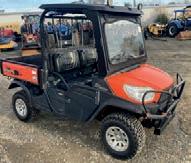
• Kubota RTV-900 Side by Side
• Kubota F3680 Lawn Mower
• Kubota GR1600 Lawn Mower
• Kubota BX2670 Lawn Mower
• Cub Cadet Lawn Mower
• Kubota M7171 2,295hrs & Loader
• Kubota M135GX 6286hrs & loader
• Case IH MUX135 5,400hrs & loader
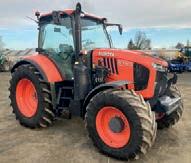
• Case IH CVX1190 8,990hrs Cab
• McCormick MC105 & loader
• Deutz K610 3,398hrs & Loader
• Massey Ferguson 6,368hrs 8680 duals
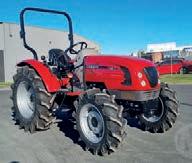
• John Deere 6620 & Loader
Grape Harvester
• Braud 9060L SP 4,495hrs Harvester
Tillage & Seeders
• Unused NH Mouldboard 5 Plough
• Unused NH Mouldboard 4 Plough
• Vaderstad Rapid RDA800S Disc Seeder
• Vaderstad Rapid RDA600S Disc Seeder
• Vaderstad Rexius RS 820 Roller
• Unused New Holland ProTed 880 Tedder
• Unused New Holland C820 Rotor Hay Rake
• Unused New Holland Megacutter 860P Mower
• Unused New Holland Duradisc F300 Mower
• Gowell Roll Baler F1 F125 Combi Bale Wrap
• Gowell Roll Baler G5020 Trailing Wrapper
• Massey Ferguson 187 Square Baler
• Kongskilde GSX3206 3Pl Mower
• Kongskide VM22-2 Mixing Wagon
• Giltrap RG21 Side Feed Out Wagon
Extras
• Mailleux Loader Frame MX T10
• Agris Quip 3Pl Spreader
• Husqvarna R216 Ride on Lawn Mower
• Husqvarna TC342 Lawn Mower
• Tyre & Rims, GP Buckets
ONLINE BIDNOW AUCTION Contact: Bryan McNeilly M: +64 273 580 432 Contact: Bryan McNeilly M: +64 273 580 432 Location: 11 Athy Pl, Wiri Auckland and 155 Flygers Line, Palmerston North. Inspections: Mon 28 - Thu 31 between 9am - 4pm STARTS: FRI 25 AUG AT 2PM ENDS: THU 31 AUG AT 7.30PM Scan QR code for more information Scan QR code for more information Tractors • Merlo TF35.7 2496hrs Telehander • Case IH Farmall 60B, 0hrs ROPS • New Holland Boomer 25, 0hrs Loader • New Holland Boomer 25, 0hrs Loader • New Holland TD5.90, 0hrs Cab • New Holland T4.95F, 0hrs Narrow • New Holland Boomer 25, 0hrs Loader • New Holland Boomer 35, 0hrs Loader • New Holland T7-290 HD & front 3PL • New Holland T7-250, 7,571hrs & Front 3PL • New Holland T6-180 1331hrs Cab • New Holland T5-105 6736hrs & Loader • New Holland T4-105, 2,703hrs & Loader • New Holland TS110A 6334hrs & Loader • New Holland T6050 4856hrs & Loader • New Holland T6030 4252hrs & Loader • Kubota
• New
FR9080 Forage Harvester • New Holland 8 Row Maize Front • Unused Kuhn GMD 310 3pl Mower • Unused New Holland ProTed 690 Tedder • Unused New Holland ProTed 880 Tedder • Unused New Holland C820 Rotor Hay Rake
FRI 25 AUG AT 2PM
THU 31 AUG AT 7PM Location: 81 Branston Street, Hornby South, Christchurch Inspections: Mon 28 - Thu 31 between 9am - 4pm
ENDS:
Buyer’s Note: This is an Online BidNow Auction only and is to be conducted on Manheim website only. You must register to Bid on www.manheim.co.nz or click on QR code for registration. 14 FARMERS WEEKLY – farmersweekly.co.nz – August 14, 2023 News 14
Neal Wallace NEWS Dairy
Things are going to get bloody serious very quickly.
SURVIVAL: Bay of Plenty farmer Darryl Jensen says while he is confident he can weather the storm, he feels for new farm owners who have high debt levels.
‘Golden weather’ for NZ trade policy over





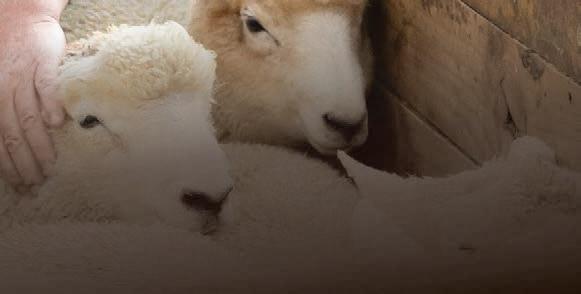
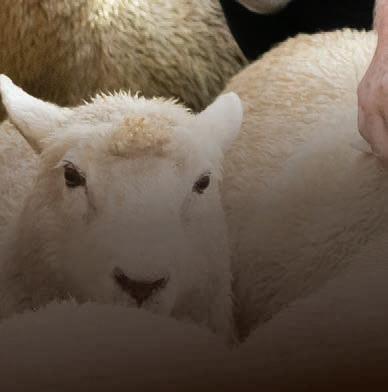
BusinessDesk MARKETS Trade

THE “golden weather” for New Zealand’s trade policy is over, one of the country’s top negotiators says.
But, even though things are going to get harder, Vangelis Vitalis said he is optimistic NZ has the right strategy to “manage and mitigate the turbulence and challenges out there”.
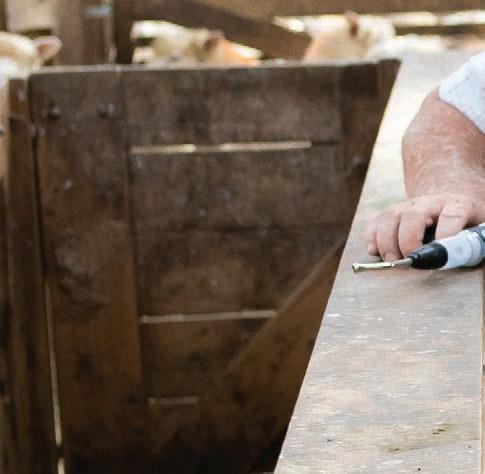
Vitalis, deputy secretary and chief negotiator at the Ministry of Foreign Affairs and Trade, made the comments at the Red Meat Sector Conference in Auckland.
He has been the chief negotiator on multiple free trade agreements (FTAs), including the NZ/European Union deal, Comprehensive and Progressive Agreement for Trans-Pacific Partnership and ASEANAustralia-New Zealand FTA.
He was also a member of the negotiating teams for the NZ/China FTA and the TransPacific Strategic Economic Partnership or P4 agreement.
Vitalis told the conference the “golden weather” started in 1995 with the establishment of the World Trade Organisation, which saw agriculture brought into the international rules-based trading systems.
That meant NZ could take other countries to court for not fulfilling their obligations.
“The rules worked.”
Another two components of the golden weather was that protectionism would decline – instead it is back up and rising – and the belief that trade is a good thing in NZ, providing “prosperity, productivity, employment and incomes”.
“That was the golden weather. The golden weather is now over.”

Vitalis said the rules NZ depended on at the WTO are no longer fit for purpose.
“We can still take cases, but their foreseeability now is really in question because you can no longer hear appeals to the case.”
Vitalis said geopolitics is back in a way “that we have not experienced previously”, particularly between China and the United States, which is “intense and difficult”.
“Don’t get caught in the crossfire,” he said. “If you’re in any doubt about how challenging and bruising this can get, just ask Australian wine exporters, just ask Australia barley exporters, just ask Australia coal exporters.”
As recently as this month, Australia withdrew its action against China at the WTO after it dropped tariffs on Australian barley that had been in place for three years. Australia is, however, still pursuing its action on wine tariffs.
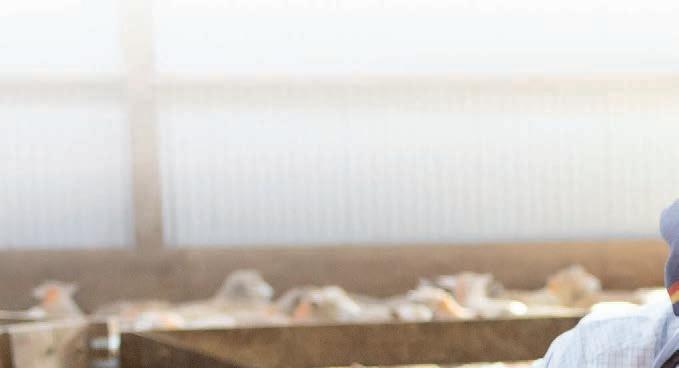
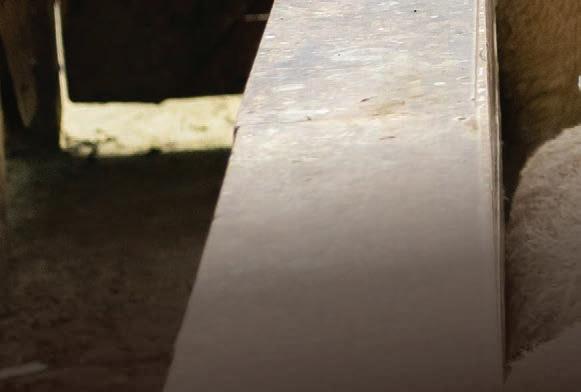

Vitalis said the challenges out there are real and NZ is going to need to think about how it manages and mitigates those risks.
NZ has relied on US leadership in trade policy for big achievements, such as the Uruguay Round, but it is no longer in that space.
“We are having to reorientate the way we


Follow us





think about international trade policy in the absence of that firm and clear leadership that constructed the system on which we depend on significantly today.”
Vitalis said NZ will have to be more creative and start thinking about how the country can work in coalition groups of economies to break down barriers.
Conditions will be getting harder, Vitalis said, but he is confident the red meat sector has the resilience to get through it.
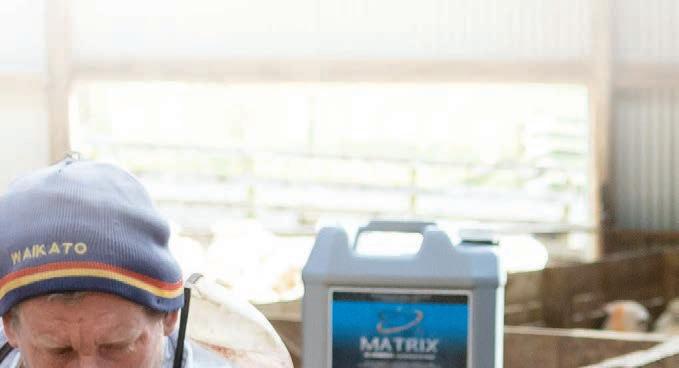
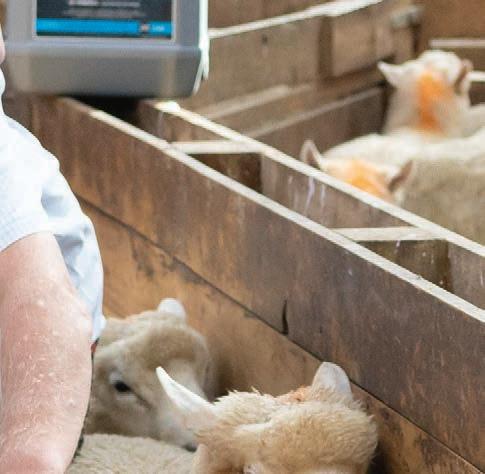
PLANNING: Vangelis Vitalis says the challenges are real and NZ needs to think about how best to manage and mitigate the risks.
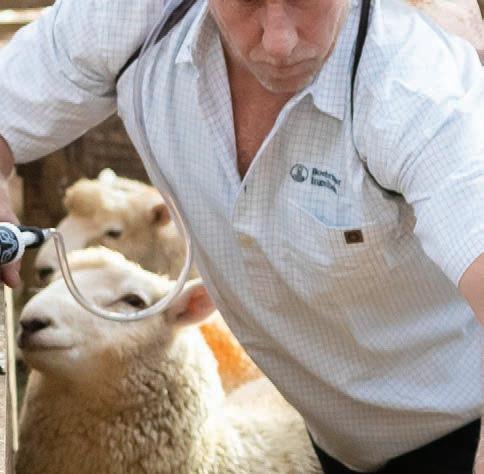
PROUDLY AVAILABLE FROM YOUR LOCAL PARTICIPATING VETERINARY CLINIC. See product label for full claim details and directions for use. Boehringer Ingelheim Animal Health New Zealand Limited. Level 3, 2 Osterley Way, Manukau, Auckland, New Zealand. MATRIX is a registered trade mark of Boehringer Ingelheim Vetmedica GmbH, used under license. Registered pursuant to the ACVM Act 1997. No’s A009390. © Copyright 2023 Boehringer Ingelheim Animal Health New Zealand Limited. All rights reserved. NZ-OVI-0004-2023. Receive a FREE * Degree Horizon Shirt, with every 20 Litre of MATRIX® Hi-Mineral. *While stocks last. For more information, talk to your vet or visit: futureproducers.co.nz MATRIX® Hi-Mineral is back in stock this season, providing a convenient and effective all-in-one triple active sheep drench for your stock. 15 FARMERS WEEKLY – farmersweekly.co.nz – August 14, 2023 News 15
New-look wool marketing seeks partners
Annette Scott NEWS Education
DIGITISATION of wool in schools and the launch of a digital partner portal are set to widen opportunities to connect with New Zealand wool.
The Campaign for Wool New Zealand (CFWNZ), tasked with advancing strong wool education, promotion and advocacy, has unveiled a brand-new online portal and updates to the Wool in Schools programme.

CFWNZ general manager advocacy Tom O’Sullivan said the digital partner portal, housed on the CFWNZ website, allows wool manufacturers, businesses, brands and supporters access to verified consumer and market research.
It also includes a library of professional photography, business templates, a growing directory of wool industry contacts and a range of other resources.
As a not-for-profit organisation CFWNZ will use the annual subscription fee charged to users of the portal to develop and expand its initiatives and programmes.
O’Sullivan said this, in turn, supports NZ’s strong wool industry and NZ wool growers as signalled in its three-year strategy published late last year.

“Wool is the most amazing natural super fibre and in recent years we’ve seen the consumer begin to really recognise this.
“As the climate becomes more and more of a concern, we’re noticing the pendulum swinging strongly back towards wool and away from plastics and other synthetics.
“While that’s great, there hasn’t previously been a way for New Zealanders, other than growers themselves, to support the enormous effort that goes into re-educating consumers and changing behaviour.”
Until now, the organisation was
funded almost entirely by a levy on wool growers for every kilogram collected through brokers that support CFWNZ.
“It no longer made sense for wool producers alone to be shouldering the cost of promotional initiatives and educational programmes especially when so often the words we hear are from those manufacturing these incredible woollen products for local and international markets.”
The CFWNZ board has set a $1000 annual subscription fee for anyone wishing to apply to become a Campaign for Wool brand partner.
Alongside access to a suite of resources, brand partners can use the official CFWNZ brand mark in their own marketing and communications, aligning themselves with a worldwide movement for change.
For those not ready or able to fund the registered charity to this level, the website can also collect donations of any value.
“It’s so exciting to know that any funding we collect from retailers, manufacturers, contractors,
processing facilities, yarn makers, scourers and interested individuals goes directly towards the goal of increasing wool use across the world and in driving effective wool education.”
One such programme is the celebrated Wool in Schools initiative. Co-funding from the Ministry for Primary Industries’ Sustainable Food and Fibre Futures fund has enabled the two shipping containers that travel to primary schools around the country to be substantially renovated and the educational resources that travel with the containers to be fully digitised.
“Our two containers, one each for the North and South Islands, were in dire need of an upgrade. Without the support of MPI and some of our existing wool partners, this would have been a real stretch,” O’Sullivan said.
“It’s been amazing to access over $70,000 in government funding to enable this important work to occur.”
Among the changes to the container interiors are woollen carpeting donated by Bremworth, felted panelling gifted by T&R
Interior Systems, woollen insulation from Terra Lana, seating with upholstery from Nick Radford Rugs and a wall made entirely of tennis balls, which traditionally use strong wool in their outer layer.
“Lots of what you see in the containers is really tactile and we’ve designed everything with kids in mind.”
There are pull-out drawers that show wool through all its stages of processing, from raw wool off the sheep’s back to processed wool.
“We demonstrate a range of woollen products from jumpers to fire-retardant drapes and there are screens so students can access the digital files we’ve created in place of paper resources.”
Hastings-based educators Digital Circus were tasked with making learning materials more accessible to container visitors.
CFWNZ plans to make these resources available to schools across NZ, irrespective of whether they book a Wool in Schools container for a visit.
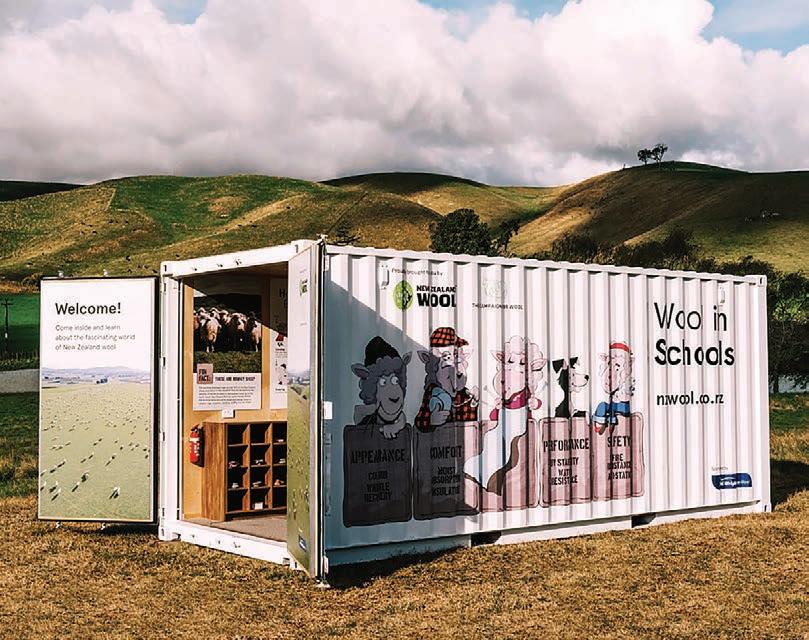
“So far, we’ve reached 30,000 students across the country, but we could impact so many more kids with our fully digitised
It no longer made sense for wool producers alone to be shouldering the cost of promotional initiatives and educational programmes.
Tom O’Sullivan CFWNZ
resources and share our messages even wider.”
CFWNZ is looking to bring more positive change to the wool space this year with the next focus on the benefits of wool in housing and architecture.
“We only unveiled our three-year strategy six months ago, so it’s heartening to see such incredible progress in a short space of time.
“Wool is durable, sustainable and it’s exciting. What’s clear to us is that more and more New Zealanders want to connect with the wonder that is wool,” O’Sullivan said.
MORE:
To learn more go to: https://www. nzwool.co.nz/
Pāmu halfway to its Toitū carbon goal
independent verification of the measurement and reduction of greenhouse gas emissions.
is of value to the wider farming community as we share our experiences and data.”
PĀMU is over halfway towards meeting its goal of 100% of its farms achieving Toitū carbonreduce certification by June next year.
As the largest farming group in New Zealand, Pāmu manages more than 100 farms, totalling close to 360,000ha and spanning sheep, beef, dairy, deer, forestry and horticulture.
To achieve Toitū carbonreduce farm certification, operational greenhouse gas emissions are calculated for each farm, and a plan to manage and reduce them is developed.
The certification, which meets international standards, requires detailed annual data and
Emissions reduction is a key driver for meeting the conditions of the state-owned enterprise’s two sustainability-linked loans.
Pāmu head of sustainability Sam Bridgman said the strategy for reaching its sustainability goals has a two-pronged approach.
“For the first part, the Toitū certification gives us a clear framework and guidelines to work with each farm, to identify emission sources, where reduction opportunities are, and what we can do.
“For the second part, we are fortunate to have the scale and diversity of farming operations across the motu to test and develop longer-term solutions to emissions reduction. This in turn
He said the process so far has highlighted the need to improve data collection and improve understanding of greenhouse gas emissions.
education and engagement sessions on greenhouse gas topics for our business and farm managers.”
Last year, Pāmu farms contributed 0.71 million gross metric tonnes of carbon dioxide equivalent and sequestered 0.3 metric metric tonnes of carbon dioxide equivalent.
Toitū Envirocare Kaiwhakahaere Matua chief executive Teressa Betty said Pāmu is showing real climate leadership by taking accountability and working to understand its impact across farms.
An example of the steps Pāmu is taking to tackle climate change is the partnership, through its subsidiary Focus Genetics, with research and commercial entities including AgResearch, Massey University, LIC and CRV, developing breeding stock that emit lower methane levels. Pāmu is also focused on productivity gains and diversification, and has shifted several dairy farms to organic farms.
“Some of our existing systems have been challenged by the level of accuracy needed. Toitū has driven us to improve.
“In addition, we are running
“Achieving Toitū carbonreduce farm certification requires not only measuring to international best practice but also reflects a firm commitment to reducing emissions as a mandatory part of the programme.”
As part of its commitment to nurturing and restoring the land on which it farms, there is a country-wide programme of retiring marginal land, establishing a mixture of plantation or native forestry for improved carbon sequestration, and extensive waterway fencing and riparian planting.
16 FARMERS WEEKLY – farmersweekly.co.nz – August 14, 2023 News 16
SMARTER LEARNING: CFWNZ general manager Tom O’Sullivan says $70,000 of government co-funding has helped with the much-needed upgrade of the Wools in School programme containers.
HANDS ON: The CFWNZ Wool in Schools programme has reached 30,000 students across New Zealand and now, with fully digitised resources, is set to share its messages even wider.
Staff reporter
NEWS Emissions
Some of our existing systems have been challenged by the level of accuracy needed.
Sam Bridgman Pāmu
New support to back farmers and growers in cyclone recovery
Asubstantial financial support package aims to help farmers, growers, and whenua Māori owners navigate a pathway to recovery in the wake of the extreme weather events that swept the North Island.
Primary producers severely affected by North Island Weather Events (NIWE) in early 2023 –including Cyclone Gabrielle – will get improved access to cheaper lending finance to ensure the longterm survival of critical regional industries.

It is made up of two different schemes, each designed to help ease the pressures and stress facing businesses looking to continue their recovery and provide ongoing employment for their staff.
The schemes have recently opened for applications, and are available to businesses in Northland, Auckland, Waikato, Bay of Plenty, Tairāwhiti, Hawke‘s Bay, Tararua, and Wairarapa.
These measures were developed in consultation with primary producers and will provide relief to key growers, farmers, and businesses.
The North Island Weather Events (NIWE) Loan Guarantee Scheme enables commercial lenders to
provide loans with more favourable terms to highly affected businesses across all sectors.
This scheme leverages the Crown’s financial strength by carrying 80 percent of the credit risk on covered loans, allowing banks to reduce interest rates and offer more flexible terms.
The Government’s underwriting will support loans of up to five years agreed by businesses and their banks of up to $10 million, including the refinancing of existing loans.
Over the five years the scheme is in place, these savings could total between $45,000 and $225,000 for a firm with an average amount of debt, which is meaningful relief for businesses in need of confidence for their immediate outlook.
The loan guarantee scheme is being administered by the New Zealand Export Credit Office, and is implemented by commercial lenders, such as banks.
The North Island Weather Events (NIWE) Primary Producer Finance Scheme targets businesses that have been severely affected by the weather events and have a reasonable likelihood of being commercially viable but cannot currently access commercial lending.
Concessionary loans and equity finance up to $4 million per business
will be provided for eligible landbased primary sector producers from a total pool of $240 million.
To be eligible, a business must have incurred losses of 30 percent or more of their uninsurable productive capacity because of the NIWE and can demonstrate that it has a reasonable prospect of returning to viability with additional support.
This assistance will provide certainty for rural communities by ensuring that businesses that employ thousands of people across cyclone-affected regions are supported to continue operating.
The scheme went live on July 31 and will be open for applications until September 11.
The NIWE Primary Producer Finance Scheme is being administered by the Kānoa Regional Economic Development & Investment Unit.
In other support, the Ministry for Primary Industries recently provided $500,000 in funding to the Post Your Support initiative, a community campaign supporting farmers and growers to repair cyclone-damaged fences and growing structures.
That backing will support farmers and growers to repair and replace essential infrastructure on farms and orchards, with funds going towards materials such as posts and wires.
Substantial support is available to highly affected farmers and growers after the extreme weather events earlier this year. Getty Images
This will ensure essential agriculture and horticulture businesses can get back to their normal mahi quicker.
Rural Support Trusts will also receive $1.9 million to boost recovery efforts, including wellbeing support. It’s part of $35.4 million allocated in Budget 2023 to support rural communities with health and safety, wellbeing, and animal welfare. The funds sit alongside
other support for cyclone-affected primary producers, including $74 million already allocated for farmer and grower recovery grants.
For more information, including details on eligibility criteria, visit https://bit.ly/FinanceScheme https://bit.ly/LoanGuarantee
Crucial boost to reduce emissions M.Bovis change
Research and development into agricultural emissions reduction is getting a boost, with several new promising technologies being funded.
The Centre for Climate Action on Agricultural Emissions was launched in November 2022 to accelerate the research, development, and commercialisation of technology and practices to reduce emissions.
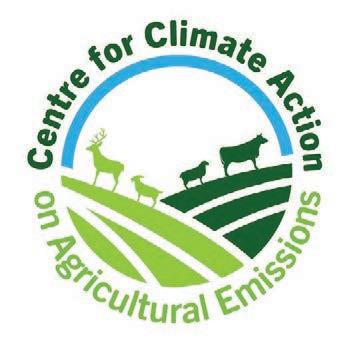
It has two key components:
1. AgriZeroNZ is a joint venture partnership and investment fund between the Government and major agribusness companies - Fonterra, Synlait, Silver Fern Farms, Ravensdown,
Rabobank and ANZCO Foods.
2. The New Zealand Agricultural Greenhouse Gas Research Centre (NZAGRC).
So far, the Centre has invested more than $54 million into new tools and technologies to reduce agricultural emissions. That includes funding to help develop a methane inhibiting bolus, further research into methane vaccines, a project that will increase our supply of low methane rams through genetic selection, and further research on the effect plantain has on nitrous oxide emissions.
To ensure we have a pipeline of new technologies now and in the future, the Centre has also funded urgently required greenhouse gas measurement equipment and infrastructure, and a fellowship and scholarship programme that will support 15 PhD students and 12 post-doctoral students over six years.
The latest project funded is a new greenhouse gas testing facility to be constructed at the Massey University dairy farm in Palmerston North.
These investments will help build momentum in getting tools in the hands of farmers sooner
as we move towards our goal of biogenic methane reduction of 10 percent by 2030, and 24 to 47 percent by 2050.
AgriZeroNZ has confirmed three investments worth more than $8 million. About $1.8 million will go towards Ruminant BioTech, a New Zealandbased start-up developing a slow-release, biodegradable methane-inhibiting bolus, up to $2.5 million to support the methane vaccine and inhibitor research work, and $4 million towards the greenhouse gas testing facility.
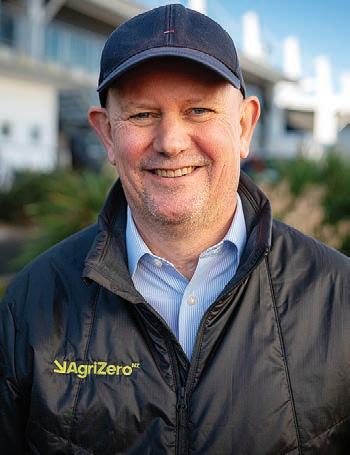
AgriZeroNZ executive director Wayne McNee says the JV is working to ensure all farmers in Aotearoa New Zealand have equitable access to affordable, effective tools to reduce their biogenic methane and nitrous oxide emissions – supporting a 30% reduction of emissions by 2030 and enabling the development and adoption of solutions to drive towards ‘nearzero’ by 2040.
“Our role is to take the pressure off Kiwi farmers. We’ve brought together many of the largest players in industry and government to do this, as well as working with the NZAGRC. Together, we are driven by an ambition to accelerate the reduction of agricultural emissions and we’re focused on getting tools into farmers’ hands to do this.
“New Zealand’s global customers are setting ambitious greenhouse gas reduction targets – we must confront this reality and I believe we can meet this challenge.
“Our success will drive the continued success of New Zealand agriculture, while contributing to New Zealand’s broader efforts to reduce greenhouse-gas emissions.”
• To find out more about the projects funded as part of the Centre go to www.ccaae.govt.nz
• For more information about AgriZeroNZ go to www.agrizero.nz
A proposal is being made to change how the Mycoplasma bovis (M. bovis) Eradication Programme is administered.
As the eradication effort enters a new phase, evolving the programme will ensure it continues to adapt to the work that remains ahead.
While it is expected farmers and rural groups will notice very little difference under the proposed model, we are inviting farmers and the public to give feedback.
Public consultation runs from August 14 to September 25.
More information can be found under the Consultations section of the MPI website, www.mpi.govt.nz.

There are currently zero infected farms.
MPI has launched Primary Matters, a podcast about the food and fibre sector, the people at the heart of it, the efforts to keep it thriving and safe, and to showcase the wide array of interesting roles in the sector to potential workers.
Episodes have focused on young people joining the primary sector, unusual yet crucial careers to protect the sector in Aotearoa New Zealand, and strong wool.
Future episodes will feature new projects, issues, research and people working on the land, at sea and in our forests.
The podcast is available on all major apps, and at https://shows.acast.com/primarymatters/episodes
Primary podcast www.mpi.govt.nz ADVERTISEMENT
Wayne McNee
17
Letters of the week
First state the problem
Neil Henderson Te Karaka

WITH Countdown now calling for farmers to reduce emissions and others calling for He Waka Eke Noa to be implemented, it is well beyond time to have some idea of the level of warming our livestock cause.
The majority of the populace seem to equate emissions with warming and believe that because livestock are supposedly responsible for nearly half New Zealand’s emissions, they are responsible for half its warming.
Beef + Lamb NZ rightly say emissions pricing should be based on warming, but they acknowledged to me in one of their nationwide farmer feedback meetings that they don’t know how much warming our livestock cause.

This is shocking, because way back when the keel of HWEN was being laid in 2019 I submitted this was the necessary first step. The pricing proposal put to the government by the HWEN partners would have farmers paying $130 million per year or $13 billion in a century for their livestock methane emissions.
From the Editor
Building on Gabrielle’s hard-won lessons
work brutally shoved downhill and out to sea.
RUTHLESS news cycles can dictate that even in a country as small as New Zealand a large event like Cyclone Gabrielle passes through the national consciousness quicker than it deserves to.
The lives and livelihoods it wrecked are given the due drive-by media attention, then the rest of the country goes back to its business and routines.
But the routine of living for many along the east coast has been far from that, as the Farmers Weekly editorial team highlights this week.
They spent time visiting and talking to farmers and growers who in many cases have only this month managed to make it back to parts of their properties, six months in Gabrielle’s wake.
For as damaging as Gabrielle proved to be, the La Niña weather pattern that it stormed in on had a long life.
So much so that the Hawke’s Bay and Tairāwhiti regions experienced further deluges of between 200mm and 300mm over June and July that turned sodden soils to liquid.
For many it meant seeing a lifetime’s
Gabrielle failed to discriminate between valuable pasture country and orchard crops, recently planted riparian strips, native afforestation and exotic forests.
But history has proven land and slips can repair and heal, providing the land can dry out.
Many along the coast are quietly hoping for a dry summer to give more momentum to the repairs that need to be made. In a case of being careful what you wish for, El Niño may well oblige them this year.
The hope is the scars of Gabrielle will fade, thanks in part to nature, and to the practicality and realism of those who suffered them on their orchards and farms. Government assistance, though some say it took longer than liked, has now arrived in the form of silt and slash removal payments. Practical, low-interest loan offers also deliver a hand-up to enable farmers and growers to put their plans for recovery into action.
On the steep country, the lessons of Bola’s flawed recovery plan to blanket the landscape in pines are recognised this time around.
Encouraging progress is being made in Hawke’s Bay with the Land for Life project, which will work with farmers to reconfigure
their farms, retiring land that may be better suited to native or exotic plantings.
Further up the coast, forestry companies are compelled to take a hard look at planting and harvesting practices, with real discussions on where natives may be more suited.
How can anyone say this is value for money if we don’t know the warming being caused?
So how about a calculation based on the Intergovernmental Panel on Climate Change’s (IPCC) own data? Starting with the top-of-the-range RCP 8.5 scenario that has something like 5degC of warming this century, multiplying it by this country’s share of global emissions and multiplying that by the supposed share of livestock methane in our inventory, we find that if our farmers got rid of every last molecule of methane out of our livestock tomorrow, the difference to global temperature 100 years from tomorrow is the staggering figure of 0.003degC.
That is a grossly overstated figure because the IPCC has said that the RCP 8.5 scenario significantly overstates possible warming.
On the flats, orchardists and croppers have been surprised at the land’s ability to recover from sediment inundation.
As with their hill country counterparts, the loss of orchards and vines is prompting a rethink on how to go forward, in some cases pulling out lower valued fruit to replace with a higher value variety.
On the hills or on the plains, what is clear is these hardworking, quiet and practical food producers are not walking away from their life’s work.
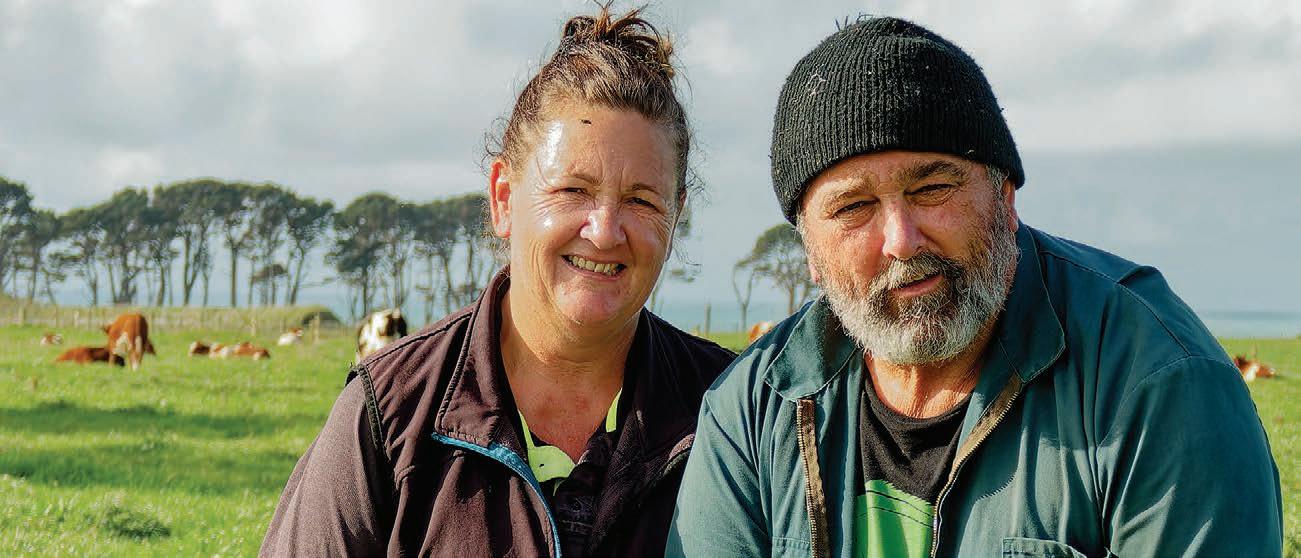
They recognise that, in the wake of Gabrielle’s wrath, there is an opportunity to leave a legacy more resilient and more sustainable than ever before.
Furthermore, our greenhouse gas inventory uses the GWP 100 metric, which the IPCC now admits in its most recent report, the AR6, overstates the warming of methane by at least 300%. So the real figure for the warming our livestock cause would be 0.0005degC at most.
Anyone want to pay $13 billion for that?
Best letter WINS a quality hiking knife
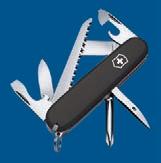
18 editorial
your letter to the Editor at Farmers Weekly P.0. Box 529, Feilding or email us at farmers.weekly@agrihq.co.nz FARMERS WEEKLY – farmersweekly.co.nz – August 14, 2023 Opinion 18
Send
Richard Rennie Senior reporter
Delivered to the farm gate of more than 24,000 Kiwi dairy farmers every month Advertise with us Call 0800 85 25 80
On the hills or on the plains, these hardworking, quiet and practical food producers are not walking away from their life’s work.
We’re here for farmers large and small
Kate Acland
Acland is chair of Beef + Lamb New Zealand
WE HAVE just completed 50 feedback sessions around New Zealand, giving farmers a chance to get things off their chests and share what’s on their minds.
A wide range of issues were discussed, including fair and practical regulations, emissions pricing, production and profitability, farmer input, advocacy, attracting people to our industry and telling our story.
Inevitably some farmers questioned the role and value of Beef + Lamb NZ (BLNZ). That’s fair enough – we are here to serve our levy-payers and we’re accountable to farmers for how we invest their funds, and what benefits we deliver. Every six years, farmers also get an opportunity to vote in a referendum.
A Farmers Weekly correspondent raised this very question, in “What does my levy buy me?” (August 7).
He argued that BLNZ is “always quick to support the government”, “never says no to anything ... and almost seems to be working against farmers sometimes”.
That’s disappointing to hear, and we know we need to do a better job of explaining to every farmer what we’re doing. But it certainly doesn’t reflect the hard work that been going on in the past few years – on the ground, but also behind the scenes in discussions with officials and the government.
We have led the campaign against the wholesale conversion of sheep and beef farms into carbon farms, we’ve been at the forefront of the fight against the National Policy Statement on Indigenous Biodiversity and we have publicly expressed our opposition to regulating Freshwater Farm Plans and the
way the government plans to implement these.
On climate change, we’ve argued that there is no justification for pricing emissions because we are on track to meet the targets.
We’ve been clear that farmers must be recognised for their sequestration, that we must avoid emissions leakage, that there needs to be viable mitigations and equity across industries, and that targets must be reviewed using the latest science that recognises methane’s unique warming impact.
We’ve urged the government to focus on a farm-level measurement and reporting system that is beneficial to farmers and will work in the marketplace.
Clearly, a number of policies have been imposed on us by the government, but we also accept we need to do a better job of explaining why we have taken the policy positions we have.
But our advocacy work is just a modest part of our mission to support sheep and beef farmers in New Zealand.
Farmers at the feedback sessions have told us they value BLNZ’s research and extension investment. At 40% of our overall budget, we’re focused on delivering tangible research outcomes so sheep and beef farmers can increase productivity and profitability.
We’ve helped get the tools and information from this investment into the hands of 15,000 farmers at 500 events over the past year. A further 29,000 downloaded information off our website.
BLNZ’s research portfolio is diverse and includes programmes across animal health, productivity, genetics, environmental health, mitigations (greenhouse gas) and landscape management.
Our genetics programme is world-class and has delivered tangible financial benefits to the New Zealand sheep sector through productivity gains. We’re now
Do you know someone who deserves a story in Farmers Weekly?
It’s important to recognise that while the domestic advocacy work we do gets a lot of the attention, it is just a small part of what we do.
using what we have learnt from our sheep genetics programme to do the same with our beef industry. The ground-breaking Informing New Zealand Beef programme aims to increase the uptake of the use of high-quality genetics in the beef industry.
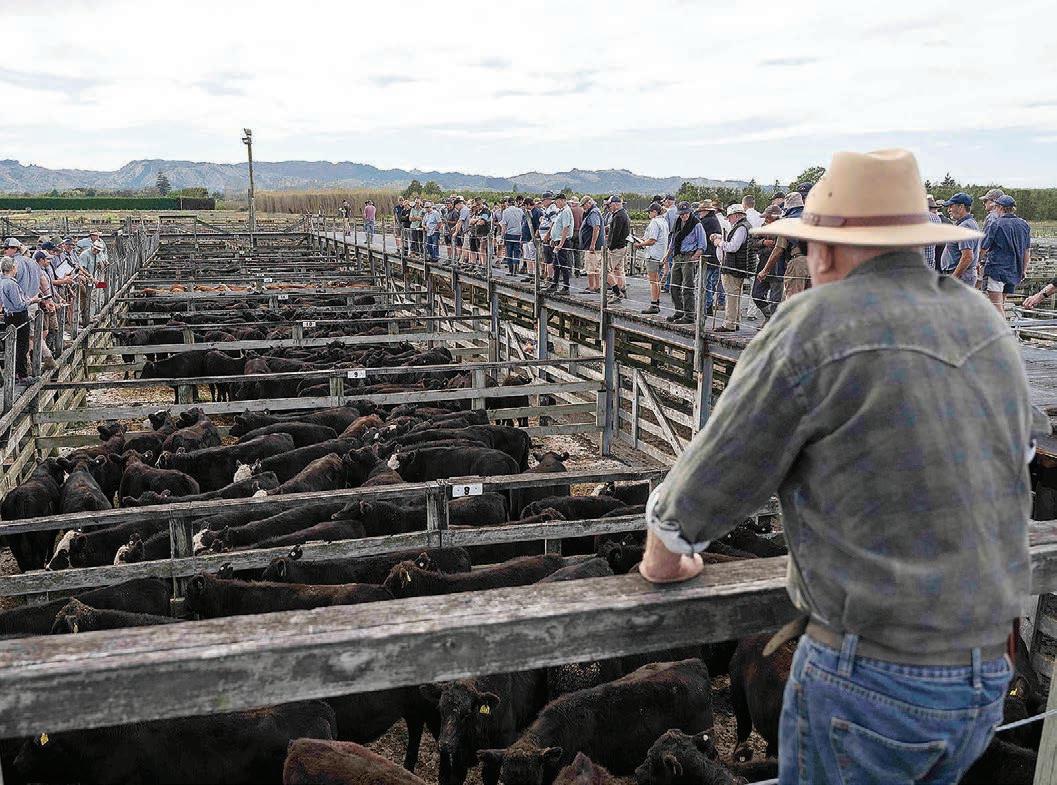
The recently completed Hill Country Futures programme has been focused on future-proofing the profitability, sustainability and wellbeing of NZ’s hill country farmers, their farm systems,
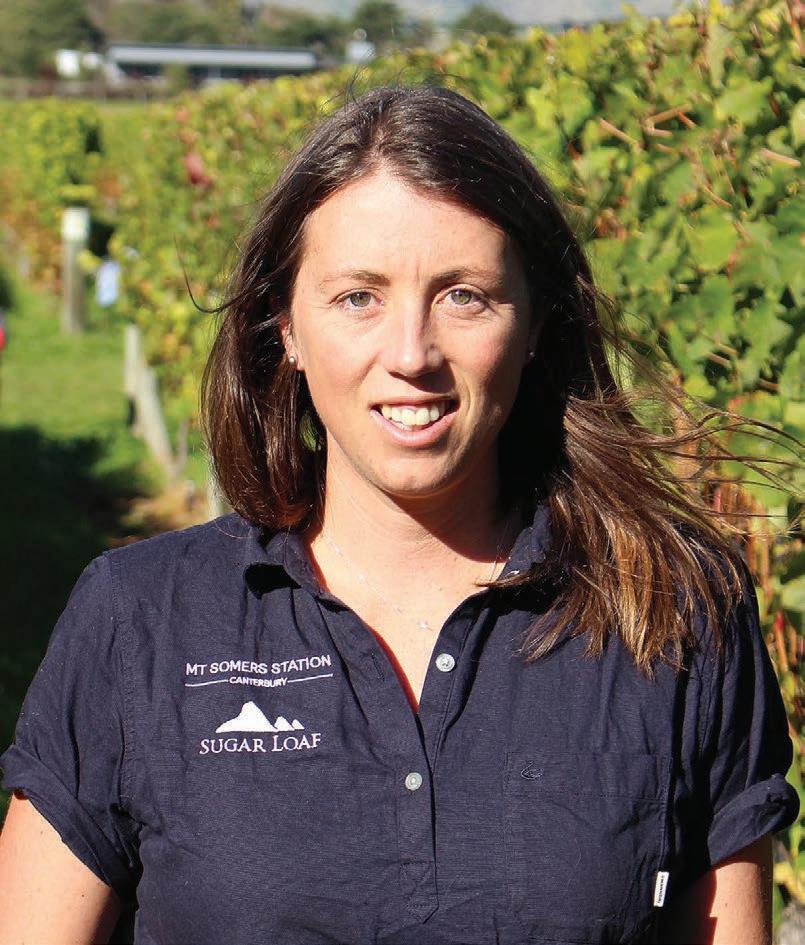
Why not write it yourself?
We’re keen to hear local stories about the innovators, inspirations and characters that keep our communities ticking over.
Farmers tell the best stories and we want to hear yours.
yourstory@agrihq.co.nz
important role red meat plays in a healthy balanced diet.
We’ve also been working on behalf of sheep and beef farmers to improve trade access and that’s paid dividends with the recently signed United Kingdom-NZ Free Trade Agreement.
Our ongoing trade advocacy work helps make sure our global markets remain free and open in an increasingly protectionist world. Our staff in the United States and UK are also working hard to reduce those tariff and non-tariff barriers that impact the returns we get in market and subsequently on farm.
We know that BLNZ can never hope to please every farmer, but it’s important to recognise that while the domestic advocacy work we do gets a lot of the attention, it is just a small part of what we do. Our door is always open for all farmers, large and small, to ask questions and let us know where we can do better.
the environment and rural communities.
This programme included an emphasis on forages and providing decision-making tools to help farmers select the best forage option for different land types and climate.
As well as our own extension activities and courses, farmers’ levies directly support a huge number of initiatives such as Young Farmers NZ, the Growing Future Farmers Cadet Scheme, Primary ITO sheep and beef training and Farmer Time, where our farmers take farms into school classrooms around NZ.
Through our funding of Beef + Lamb New Zealand Inc, beef and lamb is being marketed to Kiwis and a range of nutritional studies are providing us with the very best data to demonstrate the
That’s why these feedback sessions with farmers over the past few months have been so valuable. The meetings have been about listening and generally having a catch up face to face. We’ll be providing farmers with a full summary of the sessions and the actions we’ll be taking.
I encourage anyone with any questions or concerns to get in touch with their farmer director or Farmer Council in their area –they’re here to help.
Got
us and have yours.
farmers.weekly@agrihq.co.nz
Phone 06 323 1519
In my view 19
In my view ...
get
a view on some aspect of farming you would like to
across? We offer readers the chance to have their say. Contact
FARMERS WEEKLY – farmersweekly.co.nz – August 14, 2023 Opinion 19
ON THE GROUND: BLNZ’s high-profile advocacy work – as busy as that keeps it – is ‘just a modest part of our mission to support sheep and beef farmers in New Zealand’, Kate Acland says.
Dispatches from across the Ditch
Alternative view
announced. The outgoing governor, Philip Lowe, made the point that excessive wage outcomes along with productivity growth would further stoke inflation and lead to higher interest rates.
He made the additional point that there was no point increasing immigration if Australia didn’t increase the necessary infrastructure to support it. A fact our National Party ignored last time it governed.
JUST returned from the annual migration to Australia and it has been fascinating. For a start, the news headlines in Australia and New Zealand are similar.
The cost-of-living crisis is huge in Australia and responsible for the current government’s hit in the polls. Having said that, the opposition Liberal-National coalition doesn’t, on current polling, have any chance of forming a government in the foreseeable future.
Interest rates are the other bigticket item, with howls coming from homeowners and the banks as popular in Australia as they are in NZ. That’s despite interest rates in Australia being lower than those here. You regularly read of mortgage sales and homeowners just walking away and that “more Australians are in arrears than at the height of the covid epidemic”.
As with NZ, the Reserve Bank of Australia was in the news with a change of governor recently
Law and order is another major issue but with a different twist to NZ. In Queensland, for example, the well-resourced police are telling the government that “they can’t arrest their way out of the current [crime] crisis”. They complained that “criminals are now so brazen that they run at the police instead of running away from them”. Queensland was further described as “being in a state of lawlessness”. That’s despite having “the toughest laws in the nation”.
The issue, apparently, is the leniency of the courts – and governments on either side of the Tasman can’t do much about that.

Unlike NZ, Australia has a budget surplus for the first time in 15 years, largely due to coal and iron ore exports. There’s an Australian Infrastructure Facility, which was described by the Greens as a “fossil fuel slush fund”.
Climate change mitigation is discussed at length and it seemed to me to be more discussion than action. Coal electricity generators due for retirement have had their lives extended. It is estimated that for Australia to reach its climate targets by the end of the decade will require AU$1.5 trillion ($1.62 trillion) and a workforce of 200,000. The cost,
we’re told, is equal to the cost of the reconstruction of Europe after World War II.
There was considerable commentary on the fact Australia will not and cannot meet its climate change goals.
Inflation was another headline in Australia, although it has started to come down. “Experts” believe it will rise again as Australian wages increased.

So the issues in Australia are little different from those in NZ. In fact many Australian newspaper headlines could equally apply here. Rudimentary research would suggest that they could equally apply in Canada as well.
In addition to those issues we have controversy over cogovernance. In Australia it’s the issue of The Voice referendum, which would give Aboriginal and Torres Strait Islander people a seat at the table.
As in NZ, those in favour of co-governance and The Voice seek to minimise the effect, while those opposed tend to exaggerate. Supporters in both countries tend
to be on the left of the political spectrum while those opposed are on the right.
The Aboriginal people maintain that billions of taxpayer dollars are spent trying to close the gap between them and the rest of the country. That it isn’t working and they want to be part of the discussion.
Interest rates are the other big-ticket item, with howls coming from homeowners and the banks as popular in Australia as they are in NZ.
Their arguments are a lot more rational and reasoned than many back here. What I did find interesting was the Australian Jewish Council telling Australians that The Voice isn’t the Jewish way and then stridently warning Australia not to legitimise Palestine. Fortunately, we don’t have those issues here.
Where Australia is markedly
different from NZ is over China and defence.
There was considerable discussion over the threat from China. That China’s trade block of Australian goods had little effect, that China is a bully, that the PM shouldn’t visit China and that those with sister cities in China should abandon them forthwith. That was coupled with much sabre-rattling on the threat of China along with the strengthening of AUKUS. There was no problem with Australia being set to make hi-tech missiles for the United States and to work to dominate the space defence race. Australia and the US give the impression of being joined at the hip.
I was pleased we aren’t part of that discussion or of AUKUS. On the lighter side, watching a Bledisloe Test with Australian commentators was awful. They appeared intent on trying to convince me that to be an Australian sports commentator you need an IQ in single figures. They succeeded.
A couple of sparks and a fair few laughs
Meaty matters
Conference in Auckland this week, the largest ever attendance.
The event kicked off with a political debate between Agriculture Minister Damien O’Connor and National Party agriculture spokesperson Todd McClay. It was introduced by Beef + Lamb New Zealand chair Kate Acland, who asked that “blood on the floor” be extracted by host Tova O’Brien.
For those who enjoy blood sports, the reality was unfortunately much tamer, with the two politicians behaving in a far more genteel way than we have come to expect from the parliamentary debating chamber.
were the entry of farming into the Emissions Trading Scheme in 2025 if no alternative has been agreed, which the government is clinging to as its default if a price for emissions fails to be adopted into law under the He Waka Eke Noa sector agreement; ways to limit the conversion of sheep and beef land into forestry; the restriction on migrants to bolster essential workforce shortages; the limited value of the European Union free trade agreement; and the failure to negotiate a trade agreement with India.
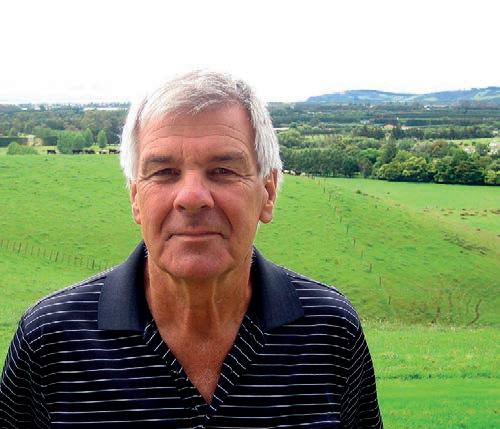
this issue, similar to ACT’s wish to tie New Zealand’s response to that of our five main trading partners.
The minister maintained other countries are ahead of us and technologies already exist to mitigate emissions, but need to be brought up to scale. However, he also protested that the price would only be set at the minimum level necessary to fund industry research, although he did not specify how this figure would be determined.
pastoral grazing system.
There was also plenty of debate on forestry conversions on marginal and good pastoral land with McClay trying to clarify how National would restrict them, somehow without impinging on property or Māori ownership rights.
MORE than 300 people involved in the sector attended the Red Meat Sector
McClay sympathised with O’Connor’s obligation to defend the indefensible, deciding he was in the wrong political party. Their main points of difference
McClay reiterated National’s position of no emissions pricing before 2030 because there are no means yet available for farmers to mitigate their emissions.
O’Brien kept pressing him on National’s apparent wish to keep kicking the can down the road on
There was some esoteric debate about the potential of Bovaer, which has not yet been approved for use in this country, but which has been seen as a silver bullet for controlling methane emissions. O’Connor made the very reasonable point there is no guarantee it can be applied in a
In answer to a question from the floor neither speaker was prepared to say what the carbon offset level ought to be compared with carbon emitters’ present ability to offset the full 100%, whereas all other countries except Kazakhstan set this at around 10%.
The minister argued the government has already introduced adequate restrictions on the sale of sensitive land to overseas buyers for forestry and
20 Opinion FARMERS WEEKLY – farmersweekly.co.nz – August 14, 2023 Opinion 20
SAME BUT DIFFERENT: The issues in Australia are little different from those in New Zealand and many Australian newspaper headlines could equally apply here, Alan Emerson says.
Alan Emerson Semi-retired Wairarapa farmer and businessman: dath.emerson@gmail.com
Continued next page
Allan Barber Meat industry commentator: allan@barberstrategic.co.nz, http:// allanbarber.wordpress.com
Farming by the peasants, for the peasants
Eating the elephant
competitive global markets.
When you sell something that is near identical to another person or country’s product, such as beef, it becomes interchangeable at the retail end, and therefore you must accept the prevailing market price if you want to get paid.
This wouldn’t be a problem if there was a large pool of buyers competing for your stuff, but there’s not. Most consumer choices these days are influenced and controlled by a small group of very large international players who hold massive market power.
To highlight this point, in 2018 the average NZ farmer’s return on capital across all farm types was 2.5%. Compare this to the NZ share market, which has returned an average of 6.5% since 1900. And just for some further context, NZ supermarkets trundle along at approx 13%.
the world over strive to extract as much from their land resource as they possibly can. This is why many of our rivers are polluted, our wetlands are drained and a good chunk of our hillsides are laying in the creek. We may not like regulation, but this is the reason for it.
But as always, there is no free lunch. All these things require us organising ourselves in different ways, taking on even more than we already are, accepting more risk and even putting in capital already in short supply.
It’s no easy feat, especially when so much industry effort goes into developing our skills for life behind the farm gate. But what if that emphasis was keeping us broke?
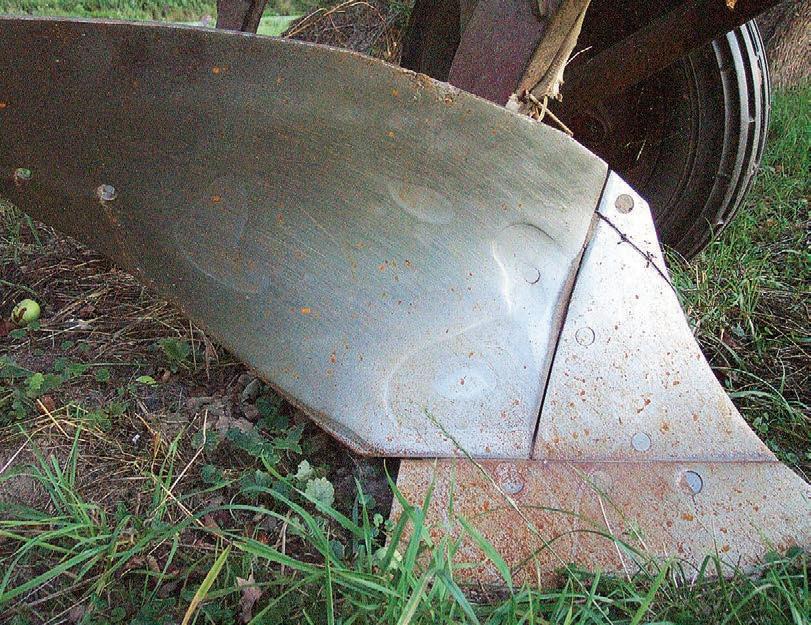
ICOME from a long line of peasants. Our peasantry commenced in Scotland further back than family records reach. It made its way to New Zealand in the 1800s, and other than a short but glorious period of mayoralty, a spot of war and hosting the king for lunch, we’ve been peasants ever since.
I personally don’t mind being a peasant. After all, there’s lots of us out there.
You’d think there would be strength in numbers. But there’s not, and therein I think lies the problem.
You see, and I know that I don’t need to remind you, we farmers are price takers. The reason we are price takers is that we sell for the most part, raw undifferentiated commodity products into
valuable horticultural land for development.
He defended the government’s position on immigration settings in spite of a shortage of essential workers in such areas as halal butchers, which last year cost the industry an estimated $600 million.
These companies influence what you grow and ultimately decide how much you get paid. For North American beef growers this is approximately 15 cents for every dollar spent in the supermarket. For New Zealand beef growers, it’s around 12 cents.
Unfortunately, when you don’t add value to a raw commodity you must accept you will only ever get a very low return. This why a coffee grower who works from sunrise to sunset gets less than 3% of the price you pay for a cup of coffee in town.
This is almost exactly the same value share that NZ’s deer farmers receive for products containing deer velvet sold in South Korea.
As we peasants know, this all plays out in our bottom line, and while an industry executive will point out the big dollar figures from agriculture’s export earnings, this doesn’t actually mean that farmers are doing well financially. Others in the value chain might be, but you probably aren’t.
He said covid has created a shortage of workers in many different sectors and the red meat sector has benefited from changed immigration settings to address some of the gaps. He cautioned against NZ’s continuing dependence on migrant workers to plug these gaps but without any clear idea how to do this.
McClay raised the question of
Yes, there are farmers on the fringes who do well financially, but they are not the average. And when you lift the average income up, the market adjusts accordingly, meaning the average farmer stays on 2.5%. This is because the market will only pay you just enough to keep you interested. The final niggly piece of the puzzle is the green bit. When you are financially on the rivet, farmers
how to incentivise some of the 80,000 on employment benefits to get into work and said National would look at introducing policies to achieve this. There is clearly no short-term fix, so the sector will have to continue training its own replacements.
The EU free trade agreement inspired predictable criticism, both from McClay and from the
So what to do? Can we change the game, wrest back some market power and swap our ploughshares for Range Rovers?
The answer, of course, is yes. I know this because there are farmers doing it already. Whether they are forming co-operatives, or selling directly to their end customers, or adding value to their products to differentiate them in the market, there are a number of options.
audience, while O’Connor tried valiantly to portray it as a major win for NZ exporters, just not beef producers whose access to that valuable market remains at a fractional percentage of the total.
National’s other criticism of the deal is the lack of any provision to renegotiate if another country, for example Australia, achieves a better outcome. That said, the FTA is subject to annual reviews and no doubt this will be brought up regularly at those reviews.
The minuscule beef quota is undeniable and it will for ever be a bone of contention for red meat exporters, while every other sector of the economy would agree it was a good outcome.
Imagine if, for every dollar that our industry bodies spent on maximising productivity, we put another dollar into identifying innovative value chains that farmers could be a part of and profit equally from.
Over the following three weeks, Dave Eade, Dan Eb and Phil Weir will flesh out some of the options available to us. Phil will talk about the status quo world of low risk and low return.
Dan will talk about the middle path of seeking greater margins through moderate risk and effort, and Dave will dive into the less common high-risk, high-effort strategies that have the potential to turn the game on its ear.
MORE:
Visit farmersweekly.co.nz to read more about Ben Anderson’s farming journey.
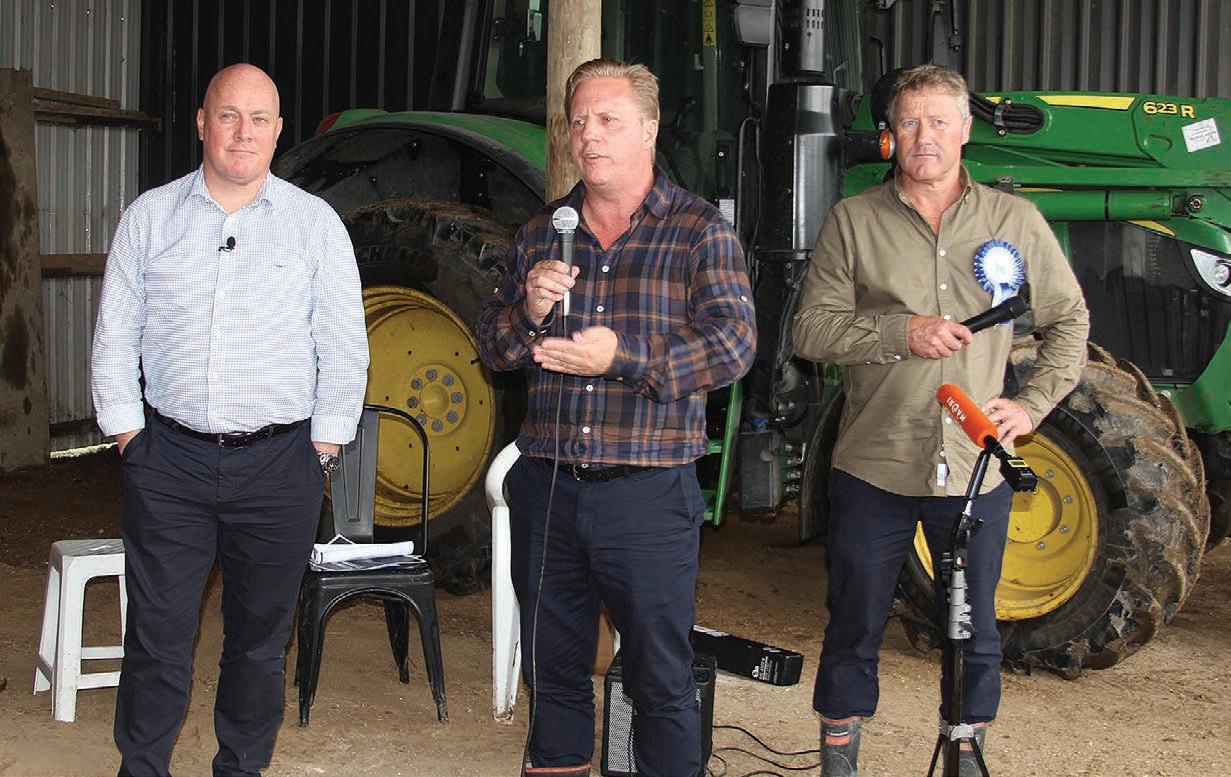

by NZ’s chief trade negotiator, Vangelis Vitalis, for a less politically emotive and more factual discussion.
The biggest laughs during the debate came during question time. A sheep and beef farmer from Eketahuna, subsequently identified as Safer Farms chair Lyndy Nelson, asked how Labour would control the campaign by the Greens and the Māori Party for a wealth tax.
Instead of taking O’Brien’s advice and saying the prime minister has ruled it out, O’Connor got himself into a hole by arguing New Zealanders do not pay enough tax, although a wealth tax is not party policy. O’Brien neatly summarised this by saying paying more tax is not a winning election pledge, which caused much amusement.
The lack of a FTA with India also resulted in a great deal of predictable hot air about why it hasn’t happened, what should have or could have been done by successive governments, and what a new government would do.
Both these topics would probably have been better left to the presentation on the Monday
Alliance chair Murray Taggart asked why NZ insists on maintaining the 100% carbon offset facility, unlike all our other major trading partners. After lengthy non-committal answers from both the politicians, O’Brien asked him whether he was satisfied by them, to which Taggart replied curtly “No”, which again attracted a lot of laughs. The debate finished with each speaker having to say something complimentary about the other.
In summary, the debate produced very little heat, a modicum of light and quite a few
21 FARMERS WEEKLY – farmersweekly.co.nz – August 14, 2023 Opinion 21
Ben Anderson Ben Anderson lives in central Hawke’s Bay and farms deer, cows and trees. eating.the.elephant.nz@gmail.com
A BIGGER CUT: Ben Anderson wants to change the game and swap his primary producer, price-taking peasant’s ploughshare for a Range Rover.
When you don’t add value to a raw commodity you must accept you will only ever get a very low return.
laughs.
The minuscule beef quota will for ever be a bone of contention for red meat exporters, while every other sector would agree it was a good outcome.
Continued from previous page
STANDING FIRM: National’s agriculture spokesperson Todd McClay, centre, pictured here with National leader Christopher Luxon and Northland candidate Grant McCallum, has reiterated the party’s position of no emissions pricing before 2030.
‘Chance to learn’ in FAR watching brief
Arable and livestock farmer Angus McKenzie has been appointed associate director of the Foundation for Arable Research. He speaks to Annette Scott.
MID Canterbury arable and livestock farmer Angus McKenzie, who has been appointed associate director of the Foundation for Arable Research, manages the family’s 1000ha Wairuna farm, a diverse cropping and livestock operation near the coast south of Ashburton.
Integrated with the cropping and small seed production system, the farm also runs a sheep and beef operation, lambing down a ewe flock, trading summer and winter lambs and taking in dairy grazers.
“It’s a pretty diverse operation with the focus on continuing to grow the rotational system that has been the way the family has farmed here while finetuning inputs and tillage and the integration of livestock into the arable system,” McKenzie says. Alongside the farm operation, McKenzie also runs a contracting business.
“It keeps me pretty busy, but I have a great team around me here.”
Adding to the on-farm business, McKenzie is looking forward to his new governance experience with the FAR board.
“It looked like a good opportunity to learn about governance and be involved with the progressive industry organisation that FAR is.
“It’s also my specific farming
interest so I expect I will learn quite a bit that I can put back into the industry.”
As an associate director, McKenzie will observe the workings of the FAR board but does not have voting rights.
“I’m not too sure it means I will be chasing a governance role in the future, but it is a really good opportunity to learn.”
McKenzie attended Lincoln University, leaving with a Bachelor of Agriculture and a Master’s in management of agricultural systems. He was also the recipient of a Lincoln Future Leadership Scholarship.
Growers Leading Change (GLC) discussion group in his district focusing on soil quality, he has hosted a demonstration site of cultivation techniques on his farm and is an advocate of crop health being an indicator of soil health.
McKenzie and his family have also led by example in terms of land stewardship, fencing off a lagoon on the farm where the Wairuna Drain meets the coast and restoring the area with native plantings.
The area is a demonstration site for the New Zealand Landcare Trust managing wetlands as farm assets project.
The lagoon is at the mouth of the Wairuna Drain, which used to be a swamp before the area was drained in the early 1900s. It was once the original boundary of Longbeach Estate at the time Longbeach landowner John Grigg tiled the swamp, transforming thousands of hectares between the Ashburton and Hinds Rivers from swamp into highly productive farmland.
establish a few more wetlands.
“When we first fenced off, we wanted a wetland and nice native area as quick as possible.
“One of the biggest things I’ve learnt from the three-year [Landcare Trust demonstration] project is to let nature do a bit more work.”
native biodiversity corridors.”
After Lincoln, he spent 18 months at FAR from 2014-2015 as part of its graduate programme, providing support for researchers.
As a grower, he is actively involved with FAR and the wider arable industry.
He is also a member of the Hekeao Hinds Lowlands catchment group committee.
As one of the leaders of a FAR
“Our farm and everywhere around us was once a swamp so it makes sense to be managing wetlands as a farm asset as we have 23km of drains on the farm and most flow year-round,” McKenzie says.
The lagoon was fenced off with natives planted in the wetland 10 years ago with the plan being to move up the drain and
McKenzie is keen to learn more about putting the right plants in the right place as he develops further wetlands, managing them as farm assets, transforming paddocks into fenced native areas.
“The wetlands objective is about biodiversity for birds, insects and water.
“We’re also a seed producer and from that perspective we want to support the native pollinators so we are keen to develop more
As FAR associate director, McKenzie replaces Fraser Dymond, a forage and cropping adviser for H&T Agronomics in Waikato, who has completed his 12-month term. Dymond says the board experience was rewarding, “particularly as it was an industry that I am involved with and have a passion about”.
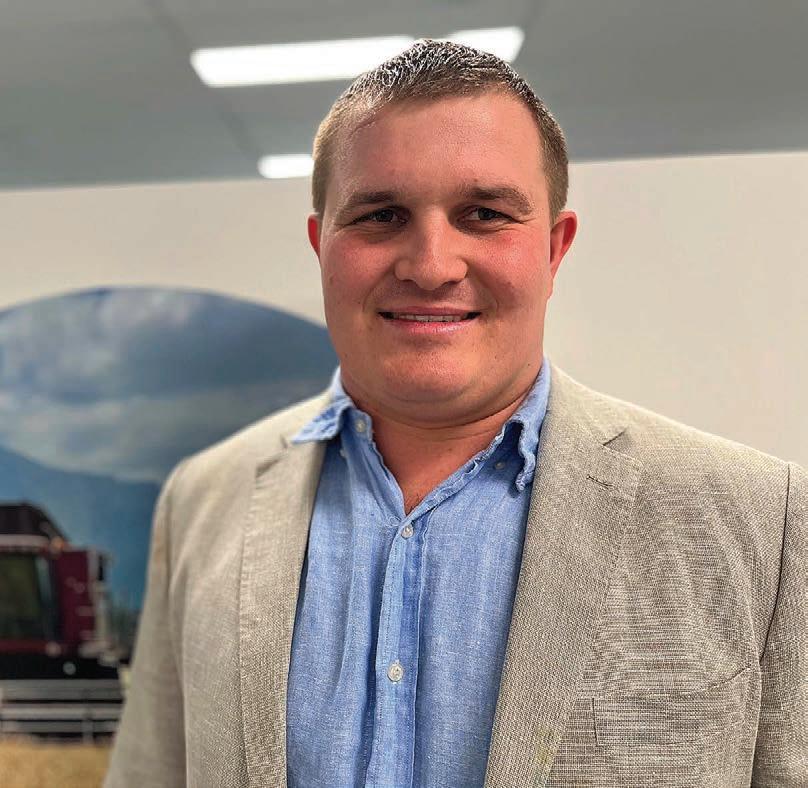
“There is a diverse range of skills and experience on the board and it was great to be part of that.”
Long-term, he is keen to be involved in governance, particularly in agriculture and the arable sector.
Dymond’s next plan is to complete a director’s course and apply for other governance roles as a way to contribute to the industry.
New future director appointed at Scion
will participate in board meetings as an observer.
ZARA Morrison has been appointed to a 12-month future director role at forestry Crown Research Institute Scion.
Morrison, of Ngāti Whakaue and Ngāti Tūwharetoa descent, is the second future director to be appointed and follows Dr Melinda Webber, whose 12-month term finished in July.
Board chair Dr Helen Anderson said she is delighted to welcome Morrison to the role.
“The role of future director is one that fosters talent in the governance space. Dr Webber shared meaningful insights during her term and we’ve greatly valued her contributions. On behalf of the board, I’d like to thank her for her passion and commitment to the role.
“We now look forward to working with Zara Morrison whose background in both science and accounting ensures she brings a wealth of knowledge and also a strong commitment to Māoritanga.”
As a future director, Morrison
Morrison said she is honoured to take up this role at the request of her iwi.
“I will enjoy working alongside Ngā Hapū e Toru to strengthen the partnership with Scion. I also look forward to extending my governance experience and
contributing to what is a worldleading science and commercial entity that is able to recognise the value of partnership with hapū and iwi.”
A chartered accountant for 12 years, Morrison has worked in both New Zealand and Germany, starting her career at Ernst & Young Wellington Tax as a
member of the Māori Sector Services Team (now EY Tahi).
She is currently a project manager at Te Kura o Te Koutu in Rotorua, working in a full immersion te reo Māori environment.
Prior to that she was a senior accountant at GHA – Chartered Accountants & Management Consultants, working for local Māori entities with interests in farming, forestry and geothermal energy. She incorporated te reo Māori into reporting and everyday business communications.
Morrison obtained her Bachelor of Science degree from Victoria University in Wellington, majoring in Biology. During her studies, she worked in the Māori Strategy Unit at what is now the Ministry for Primary Industries. She sat on national biosecurity incursion responses and provided strategic input from a Māori view.
Her governance journey started last year through the Ngāti Whakaue Governance Development programme, which is a Ngāti Whakaue Assets Trust initiative to support aspiring Ngāti Whakaue governors.
Morrison was nominated for this role by the trustees of Ngā Hapū
e Toru – Ngāti Hurungaterangi, Ngāti Taeotu and Ngāti Te Kahu. “Zara is a member of Ngāti Taeotu and we are pleased to walk alongside her as she takes her next steps in governance with this appointment. Her research background and financial acumen lends itself well to this future director role,” said trustees Hoki Kahukiwa and Veronica Butterworth.
“Her commitment to Te Ao Māori, interest in driving equitable opportunities and outcomes for Māori, and her relationship management capabilities ensure that the relationship between the hapū and Scion will continue to grow.”
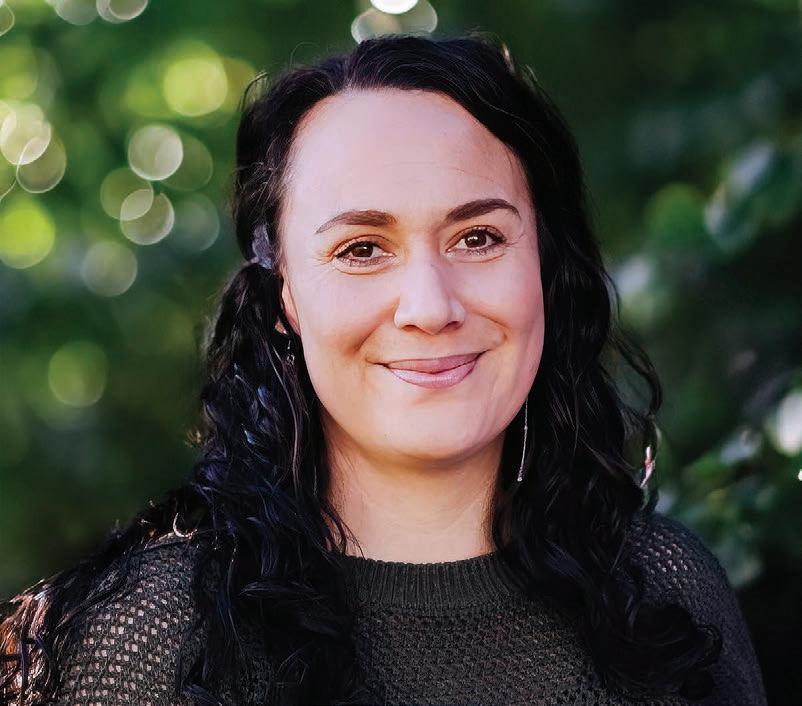
22 People FARMERS WEEKLY – farmersweekly.co.nz – August 14, 2023 People 22
SEAT: Mid Canterbury farmer Angus McKenzie is looking forward to the opportunity to sit at the FAR board table as its newly appointed associate director.
It’s my specific farming interest so I expect I will learn quite a bit that I can put back into the industry.
Angus McKenzie Foundation for Arable Research
Staff reporter PEOPLE Research
FUTURE LEADER: Scion has appointed Zara Morrison a future director.
I look forward to contributing to what is a world-leading science and commercial entity that is able to recognise the value of partnership with hapū and iwi.
Zara Morrison Te Kura o Te Koutu
Machines help read Gabrielle’s impact
Scion researchers have retrained their AI mapper to paint a picture of the cyclone’s effects on forestry, and forestry’s contribution to flood damage. Richard Rennie reports.
SOME smart tech work by Scion researchers has taken AI modelling software developed to count new tree plantings, and tipped it on its head to instead determine tree losses from Cyclone Gabrielle.
As the forestry sector wrestles with its right to operate in catchments severely damaged by forest waste and tree losses into waterways, the work is providing a means to also fully understand and measure forestry’s full impact.
Scion remote sensing scientist Grant Pearse of the agency’s Digital Forest Project team said they were prompted to pivot from mapping tree plantings to mapping Gabrielle’s effects in Gisborne and Hawke’s Bay as forestry damage became clearer.
It is recognised as the first opportunity to use digital artificial intelligence tech to determine the impact of a natural disaster on New Zealand’s planted forest estate.
The tech combines aerial images with AI and deep machine learning programmes that can accurately detect, and map planted forests using RGB (red, green, and blue) imagery technology.
RGB captures natural colours that are visible to the human eye, so provide easily interpreted information within the images it captures.
At present the model targets pine and Douglas fir and can map stands two to three years postplanting, ranging in scale from commercial forestry to small woodlots and even farm shelter belts.
Pearse says the granularity of the technology can be very fine, down to a few trees or even a single tree if resolution is high enough, but
A recent Landcare report highlighted the vulnerability of exotic forest cover as a contributor to landslide risk, particularly through the Gisborne region.
generally forest areas are mapped to around 1500sqm.
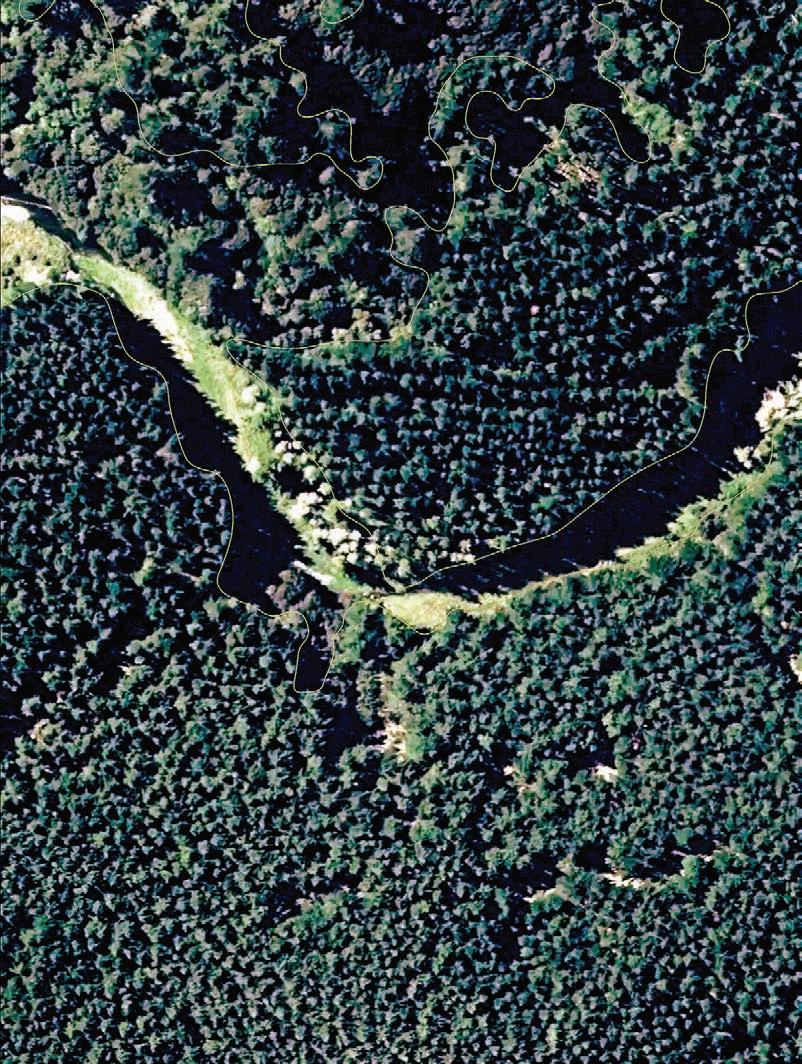
Tairāwhiti was hit hardest by cyclones Hale and then Gabrielle in short succession, with rapid assessment showing many closedcanopy forests suffered significant damage and landslides. Significant amounts of debris remain on slopes or on river margins in the region.
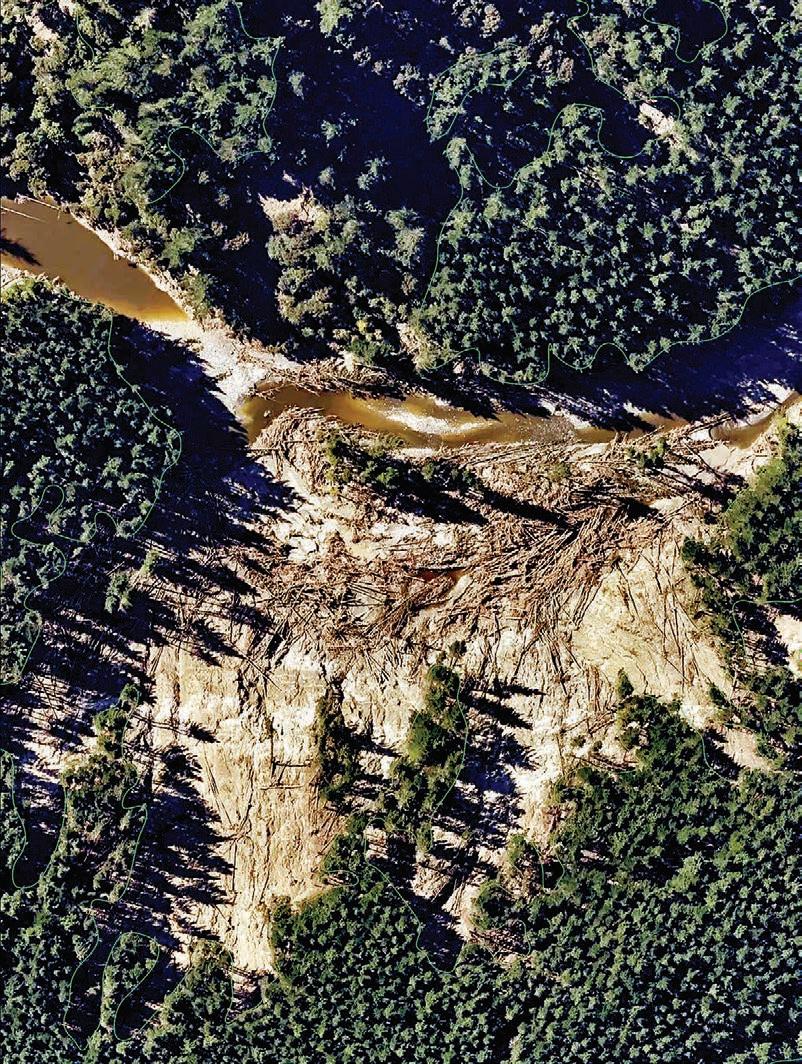
Working with Gisborne District
Council, the researchers can now assess the loss of net stocked area of the region’s forests, given that the normal stock area in a forest is already known.
The resulting difference provides a good indication of the wood debris likely to migrate downstream over time. Establishing the volume enables councils to identify and quantify the risk in specific catchments and plan ahead to mitigate that risk.
The team has just added Hawke’s Bay forests to the dataset. The work has provided insights into where forest was standing prior to Gabrielle, what species were in place and what has been lost.
A recent Landcare report highlighted the vulnerability of exotic forest cover as a contributor to landslide risk, particularly through the Gisborne region.
That work found exotic forests’ ability to reduce landslide risk deteriorated the further north one went from Wairarapa through to Tairāwhiti. In Tairāwhiti exotics were estimated to be only 50% effective at reducing landslide risk, compared to a 90% reduction in risk under indigenous cover.
While repurposed for the cyclone work, the AI model’s original intent remains, namely to develop a digital template of the country’s exotic forest inventory.
Further ahead, the Scion researchers aim to combine their AI tech with LiDAR (light detection and ranging) sensing that uses pulsed laser light to measure distances to the earth.
This will enable them to better determine tree attributes including age class, stand density, timber volume and carbon accumulation.
Gisborne will be the first region to trial this tech package. Partnering with Land Information NZ and its existing LiDAR data warehouse, the country will soon have a national scale “digital twin” of its productive forest estate. From there remote sensing will enable monitoring and mapping of forest health, productivity and carbon capture. Modelling of possible future forest scenarios will also be made possible. Other possible benefits of the tech are combining it with data from other agencies that collect the likes of rainfall data and have soil mapping information that could provide an even broader landscape-based insight to how the land is influencing forests’ behaviour under extreme conditions.
Finding a better way to till for fodder beet
take some of the guesswork out of fodder beet crop management for livestock farmers.
IMPROVED management of fodder beet crops for winter grazing could decrease runoff and reduce methane and nitrous oxide emissions.
Paddocks of leafy green fodder beet are common around the country during winter, but cattle grazing the high-yielding crop can cause environmental damage, with sediment and nutrients ending up in waterways.
Adopting the strip-till methods widely used in arable farming to maintain soil structure and reduce the loss of nitrogen, phosphorus and sediment to waterways may
Tilling a narrow strip of soil about 30cm wide can lead to less soil erosion from wind and rain as most of the soil remains covered. Cultivation, laying fertiliser and seeding are all done with a single pass of the tractor, instead of up to three passes.
After experimenting with strip-till methods for a couple of years on his north Canterbury farm, Jim Earl was pleased with the condition of his paddocks and the yields. This led him to join up with agricultural adviser Meagan Fitzgerald, of agricultural consultancy Tambo, and her team to assess the benefits of the
cropping technique more formally. Funded by the Rural Professionals Fund from the Our Land and Water National Science Challenge, the group plans to measure runoff and nutrient loss from Earl’s strip-till fodder beet paddocks, compared to conventional tillage.
Along with comparing the amount of runoff coming off cropped land using each cultivation method, differences in sediment, nitrogen, and phosphorus losses will also be measured.
Being able to put numbers to the tilling will see any reductions in fertiliser, spray and inputs going into Overseer and onto farmers’ Farm Environment Plans, while
maintaining productive yield.
However, with research lasting just six months through this winter, unfortunately the weather in north Canterbury hasn’t been playing ball, Fitzgerald says.
While the crop is already grown there hasn’t been as much rain. No rain, no runoff.
Meagan Fitzgerald Tambo
“While the crop is already grown there hasn’t been as much rain. No rain, no runoff,” she says. Financial costs, including inputs,
will be compared and a feasibility study will assess whether strip till could be more widely adopted in local farming systems. Getting a handle on what might get in the way of strip till being used more widely will be put under the microscope, including whether agricultural contractors have the right gear for it.
Good fodder beet management practices could also be a bonus for emissions reductions.
Fodder beet is one of just a handful of forage crops that could produce less methane and nitrous oxide when eaten by dairy animals, compared to pasture, but those nitrous oxide reductions can be wiped out if soil become wet and boggy during grazing.
Tech 23 FARMERS WEEKLY – farmersweekly.co.nz – August 14, 2023 Technology 23
BEFORE AND AFTER: AI-generated forest boundaries pre and post-cyclone on a tributary of the Tutaekuri River, Waiwhare, Hawke’s Bay. Illustration by Melanie Palmer (Scion, Remote Sensing & GIS) using imagery sourced from the LINZ Data Service.
Delwyn Dickey TECHNOLOGY Feed
Rocky trade path in more contested world
 Richard Rennie MARKETS Trade
Richard Rennie MARKETS Trade
AFTER almost two generations of relatively stable, favourable global conditions, New Zealand’s place in the world is less assured, standing on ground that is rapidly shifting from accepted international norms.
A recently released report released by Ministry for Foreign Affairs and Trade (MFAT), Navigating a Shifting World, gives the government and exporters an outline of what to expect over the coming decade – and it is not an encouraging picture.
Stuart Horne, the head of MFAT’s Economic Division, highlighted some of the report’s key findings during a recent ministry roadshow with exporters across the country.
He said the report identifies three big shifts from the conventional “rules to power” governance of borders and relationships towards what the report calls a “multi-polar” world, where rules are more contested and relative power between states
takes on a greater role in shaping international affairs.
“It is clear we are living in a more contested world, one we have not seen since the Cold War. Rules-based systems are under pressure, at a time when we need them more than ever to deal with issues like climate change,” Horne said.
The shift includes a move from economics-based relationships to ones reassessed in terms of security and military power.
Meantime the legacy of covid and insecure supply lines has meant stockpiling is in vogue, with importers concerned about access to critical supplies and shipping certainty. The report notes that “just in time” efficiency is giving way to “just in case”.
The authors also note NZ’s traditional sense of remoteness –which has meant the country has been strategically benign – is no longer the case. Pacific nations face shared threats of climate change and greater incursion from large powers.
This includes the shadow of the Chinese government taking a more assertive position in the region, making it a theatre for strategic competition.
The growing pre-occupation with territory and power has meant, internationally, that the ability to cope with existential threats such as climate change is diminishing, exacerbating conflicts over resources threatened for that very reason.
For NZ these tensions are coming as this country’s trade volume that falls under free trade
UK growers feeling a bit blue about berries
BLUEBERRIES may be the second most popular soft fruit in the United Kingdom after strawberries, but growers are struggling to compete with imports.
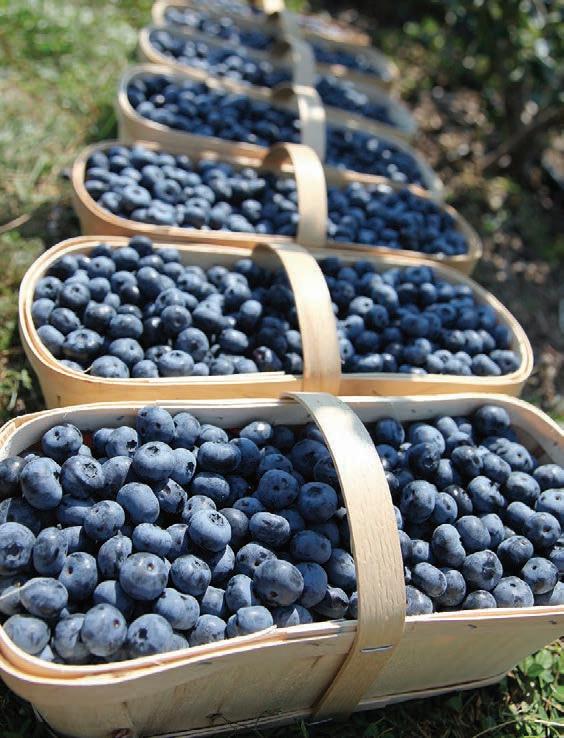
Last year, one of the major Scottish producers left 26ha unpicked because the returns on offer did not justify the harvesting costs.
Other producers have done the same this year, with the once promising sector under pressure.
Speaking ahead of the annual Fruit for the Future field day, Dr Susan McCallum, blueberry breeder at the James Hutton Institute (JHI) in Dundee, said a focus on quality, fruit size and, most importantly, flavour could turn the tables.
McCallum said imports from Peru fill the market year-round, but the quality is not there.
“The fruit is picked slightly unripe and matures during the six-week controlled environment sea journey. The shelf life is amazing but because the berries are maturing without sunlight, the Brix levels [sugars] are low.”
Peruvian growing methods have been refined to close the late summer gap previously filled by UK growers by growing new varieties.
Cost savings have also been made in harvesting, while UK costs have increased.
Mechanical harvesting is not possible due to growing in tunnels, but McCallum suggested the industry reconsiders outdoor production.
One of the challenges of
blueberry production is slow maturity, with bushes taking six years to reach full cropping potential. As well as breeding varieties with better flavour and larger berry size, McCallum is looking at the soil microbiome to see if more vigorous root systems will encourage faster establishment.
Climate change is also providing challenges. Blackcurrant breeder Dr Amanda Moura is now having to focus on selecting varieties that need less winter chilling. Traditionally, blackcurrants have required about 2000 hours of chill over the winter months, but areas in the south of England now struggle to achieve 1500. The
It is clear we are living in a more contested world, one we have not seen since the Cold War.
Stuart Horne Ministry of Foreign Affairs and Trade
diversify the country’s markets further.
Horne said NZ can also ensure it spreads its trade risks through agreements like the lesser-known Indo-Pacific Economic Framework, which captures 14 countries including the United States and India, and altogether affecting 40% of global GDP.
agreements now sits at about 74% of total exports, up from 50% only five years ago.
The ministry provides some outlines on how to navigate an increasingly complex geopolitical landscape.
This includes utilising NZ’s bilateral partnerships to better shore up foreign policy. Implementing recent FTAs will
But the ability to get FTA gains as substantial as NZ has enjoyed recently will be challenged, and even more so by having agricultural products that are now the most protected category on the planet. The US and India remain the two largest FTAs to crack.
“But the US has been very clear FTAs are not a current priority for them. Meantime, India is a longer term aspiration, but remains a future goal for all of us,” Horne said.


Leachman Cattle sells huge stake to URUS
UNITED States cattle breeding company Leachman has sold a controlling interest in the business to URUS Group, the largest cattle breeding company in the world.
LATE BLOOMER: One of the challenges of blueberry production is slow maturity, with bushes taking six years to reach full cropping potential.
result is an extended flowering period and variable maturity at harvest.
Dr Nikki Jennings, who runs JHI’s raspberry breeding programme, is focused on breeding varieties that can be harvested more efficiently. She highlighted the floricane variety, Glen Mor, which was launched in 2020 and has raspberry root rot resistance.
“The same year, we introduced two primocane varieties, Skye and Lewis.
“They are very good long cane producers and can provide a harvest in the late autumn after planting, then a second crop off the same canes the next summer.”
– Farmers Guardian
Principal Lee Leachman, known in New Zealand and Australia as a source of genetics and for speaking tours, said the proceeds of the part-sale will be used to accelerate genetic improvement.
“While there will be a new ownership structure in place, you can expect the same great bulls, semen and data-related services from Leachman,” he said.
He will continue as chief executive and staff members will all continue in their current roles.
Leachman Cattle of Colorado, its official name, has been breeding for nearly 90 years and now markets more than 2000 cattle a year.
It began in Billings, Montana and moved to Fort Collins, Colorado in 2003 under Leachman.
The main genetics are Angus and a composite called Stabilizer, a blend of Angus, Red Angus, Simmental, Gelbvieh and South Devon.
Rissington Cattle Company in Hawke’s Bay has partnered with Leachman for the past 30 years.
Rissington has Simmental,
Angus and a Leachman Stabilizer composite under the name Profit Maker in NZ. It is run by John and Star Absolom’s sons Jeremy, Daniel and Ben. It also offers cattle data and analytical services based on DNA tests from Leachman called $Profit and Inherit Select.
We are excited to bring together our combined expertise and strengths in designing the future of profitable and sustainable beef production for our clients.
Paul Hunt URUS
URUS Group is based in Madison, Wisconsin, and works in dairy and beef cattle breeding and farm management information solutions.
URUS chief executive Paul Hunt said Leachman has the largest private seedstock/ commercial cattle database in the US.
“This provides the scale and ability to respond to performance and market signals with genetic improvement at an unprecedented scale and speed,” Hunt said.
“We are excited to bring together our combined expertise and strengths in designing the future of profitable and sustainable beef production for our clients.”
24 World FARMERS WEEKLY – farmersweekly.co.nz – August 14, 2023 World 24
GOAL: A free trade agreement with India is a longer term aspiration, says Stuart Horne, the head of MFAT’s Economic Division.
Hugh Stringleman NEWS Livestock
Stake your claim in Bayleys’ Country portfolio – New Zealand’s leading multi-channel real estate campaign, showcasing the finest rural and lifestyle properties for sale nationwide.
The start of spring, traditionally the busiest on the real estate calendar, means more eyeballs on New Zealand properties, with the growing season presenting an excellent time to maximise your seasonal advantage as a seller of rural real estate.
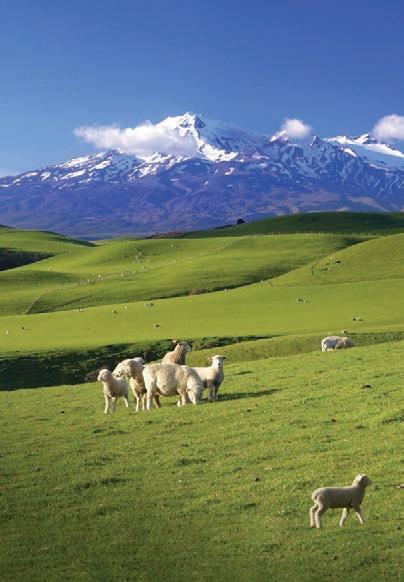
As one of the most effective and exclusive marketing channels Bayleys’ national portfolio, Countryspanning print, digital, social media and direct marketing - reaches further. This provides exposure to our extensive network, and international database of qualified buyers, designed to deliver an ‘Altogether Better’ sales result.
Kiwi-owned and operated for 50 years, Bayleys is innately New Zealand and proud to be the country’s #1 rural real estate brand, consistently utilising innovative marketing techniques to be the difference between a good and great result for the sale of your rural and lifestyle property.
Find out how to realise your rural property’s potential with Bayleys Country this spring.
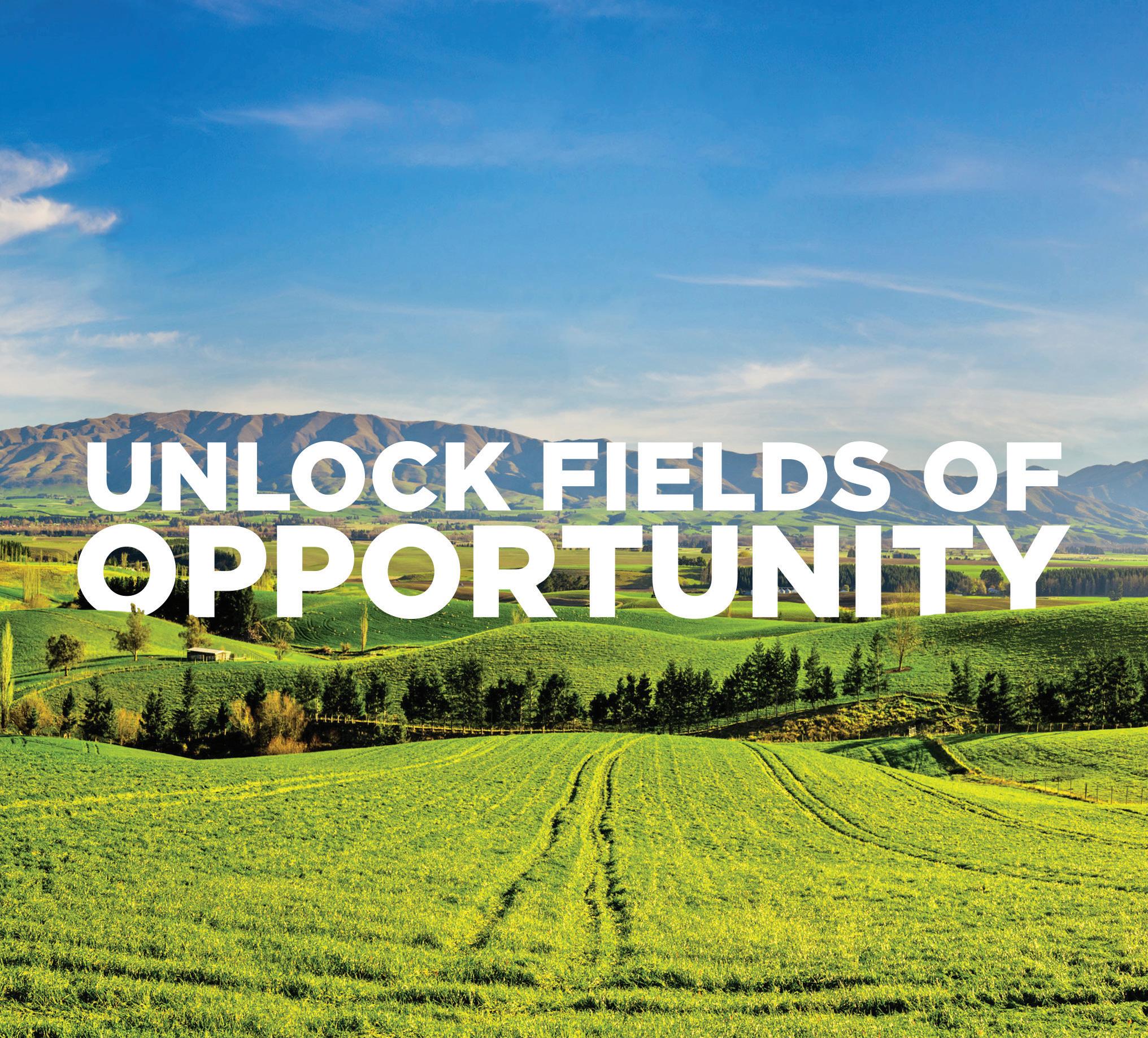
Residential / Commercial / Rural / Property Services
2023 bayleys.co.nz/country-portfolio quality farms, orchards, vineyards, forestry and lifestyle properties for sale more audience reach, more qualified and engaged buyers, and ultimately more sales all in a highly cost-effective model. Be part of Bayleys’ next Country campaign, New Zealand’s leading multi-channel rural property portfolio and we will deliver an altogether better result. CONNECTING PEOPLE WITH PROPERTY LICENSED UNDER THE REA ACT 2008 Call 0800 BAYLEYS or visit bayleys.co.nz/country Real Estate 25
FARMERS WEEKLY – farmersweekly.co.nz – August 14, 2023


Real Estate
Road
Real opportunity here - 112ha dairy unit

This is a well-presented dairy unit, the main dairy farm is 98ha in 6 titles with a 13ha support block on its own title giving a total of 112 hectares in 7 titles. The contour is all flat and it is well fenced into 51 main paddocks accessed off a central race system. Milking around 200 cows, with a 4-year production average of 101,000 kgMS. Milking through an older but very functional 15 ASHB shed with a meal feeding system and 16T silo with a good array of support buildings and a 4 bedroom Huntly brick dwelling.
The 13.49ha support block is located 785m south on Falls Road.
Wairoa 2488 and 2533 Putere Road, Putere

Hunters dream
Located approximately 100km north of Napier Airport, in the picturesque Putere farming district, is this fantastic 524ha hunters paradise and farm. The land comprises approximately 90ha of grazing with the balance of cover being established and regenerating native bush. There is an abundance of hunting available on the farm including red deer, pigs and goats, with excellent trout fishing in the rivers and lakes close by. Te Urewera National Park is also in relatively close proximity. The sound and spacious three bedroom homestead sits on its own 2.0ha fully deer fenced title. Other improvements include an implement shed/two stand woolshed, deer shed, sheep and cattle yards. The 2.0ha house title may be purchased separately. bayleys.co.nz/2853323
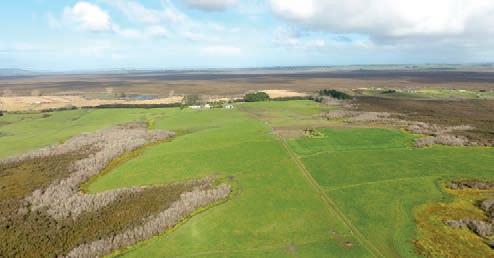


524.9713ha
Auction 3pm, Fri 15 Sep 2023
52 Bridge Street, Ahuriri, Napier
View by appointment
Tony Rasmussen 027 429 2253 tony.rasmussen@bayleys.co.nz

Monty Monteith 027 807 0522 monty.monteith@bayleys.co.nz
EASTERN REALTY LTD, BAYLEYS, LICENSED UNDER THE REA ACT 2008
Runoff / Maize / Horticulture
This appealing north facing block is currently used as a support block for the dairy farm. Growing maize and silage, grazing young stock along with wintering some cows. The property is well fenced and raced with a bore supplying good water to all paddocks. A small shed is great for hay or implement storage.
Tender closes 3.00pm, Thu 14th Sep, 2023, Property Brokers, Morrinsville Web pb.co.nz/MOR165942
Peter Lissington M 027 430 8770
Inspired Executive Lifestyle
116A Mimiha Ridge Road, Matata
Wide seascape extending right from Coromandel to include Mayor, Motiti, Plate, Falkner rocks, and White Island, a closer tree lined rural outlook just adds to an outstanding heart warming and totally unique environment. 1km off Matata white sandy fishing beaches. Single level extensive 4 bedroom home to comfortably house your family, no matter their ages. Tar-seal right to your gate and onto a wide expanse of developed parking catering for whatever you have with wheels, maybe add in a boat, caravan, beach fishing buggy and a ride-on mower. A double garage with internal access. Fabulous, country-size, chef‘s kitchen beyond what one would expect in a modern home. Two ensuites, a large family bathroom cater for all. Start your day with sea views ensuring mental horizons are relaxed. A family dining area and a generous lounge opening up through multi fold doors to a covered dining deck before stretching the length of the home extending to the tepid swimming pool with it’s waterfall feature. Two fenced paddocks for horses or a few sheep, maybe a cow and a bunch of chooks. Rest from farm, business or profession and just delight in a strong connection with your environment that is so easy to maintain. Many buy a house, only the discerning purchase a home with a view like this.

https://www.realestate.co.nz/42291912

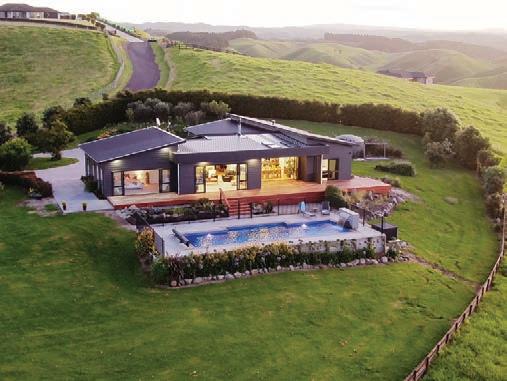


Tender closes 3.00pm, Thu 14th Sep, 2023, Property Brokers, Morrinsville Web pb.co.nz/MOR165942
Peter Lissington M 027 430 8770
Explore your options
This property is situated on Island Block Road with a long road frontage and is flat to rolling contour. Currently a support block which is leased to the neighbouring dairy farmer. Approx 25 effective hectares. There are many options - build your dream home or landbank whilst continuing with the current lease agreement.
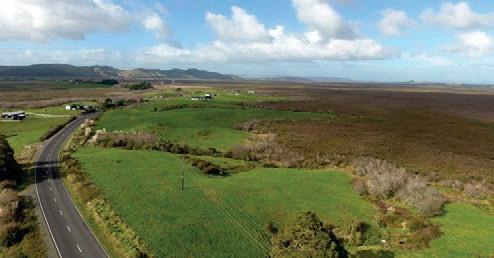
Tender closes 3.00pm, Thu 14th Sep, 2023, Property Brokers, Morrinsville Web pb.co.nz/MOR165942




Peter Lissington M 027 430 8770
PRICE $2,500,000
VIEWING
Open Homes Saturday and Sunday 12:30pm to 2:30pm and any other time by appointment LK0116286©
Ted & Jenny Peacocke
m. 027 485 6062
B. 07 578 1828
admin@peacockes.net
4 3 1 2 Licensed Real Estate Agent (REAA 2008)
Boundary lines are indicative only
NEW LISTING
4 1 2 Property Brokers Ltd Licensed REAA 2008 78 Studholme Street, Morrinsville | pb.co.nz
Te Kauwhata 1058 Island Block Road and Falls
Te Kauwhata 791 Island Block
Road
Te Kauwhata 640 Island Block Road
26
26
(For an OE in rural Hampshire)
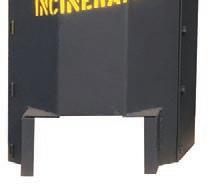




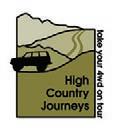
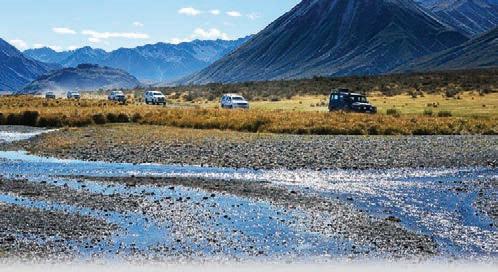


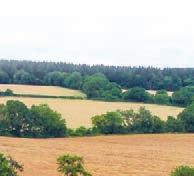
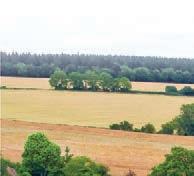
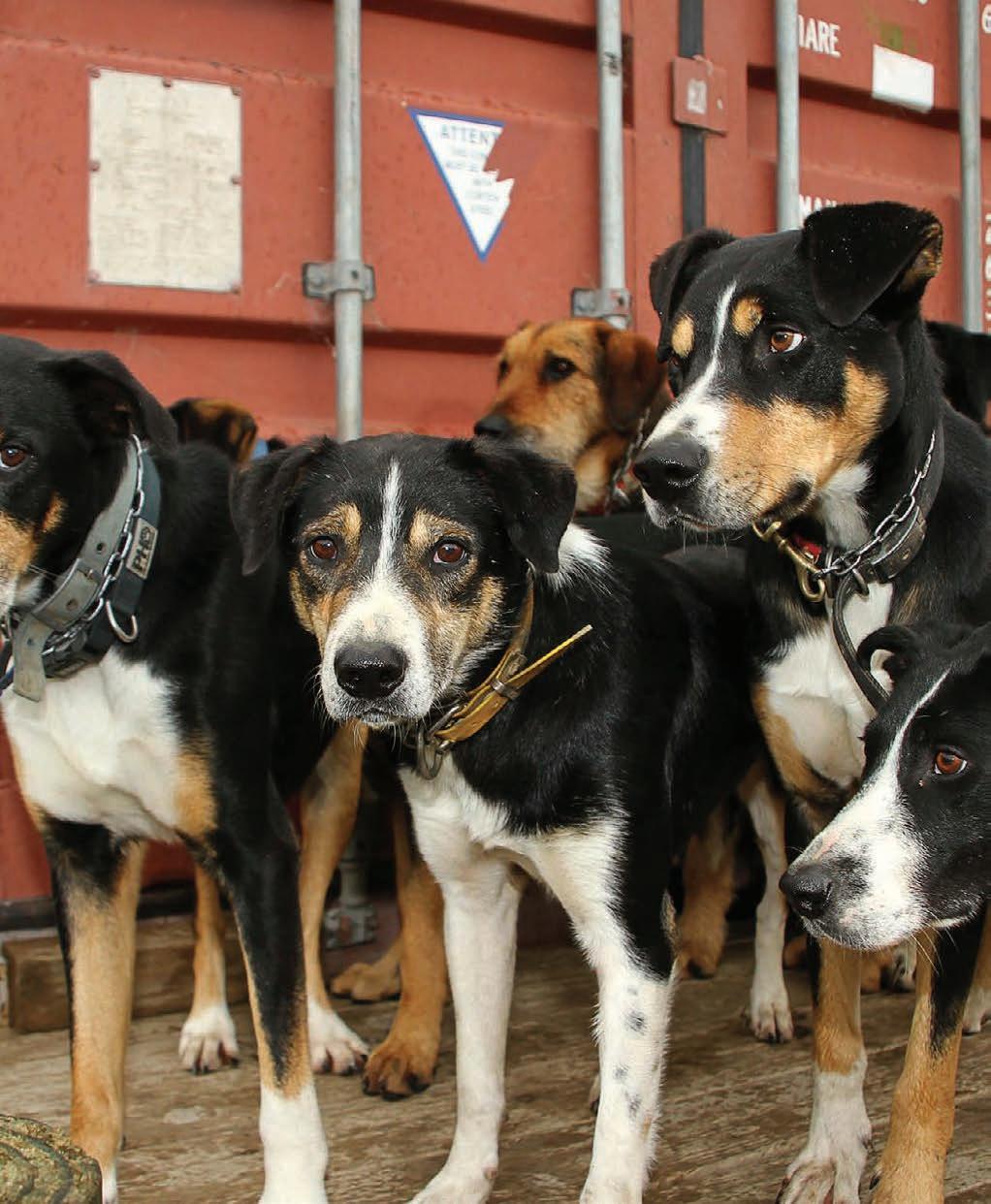

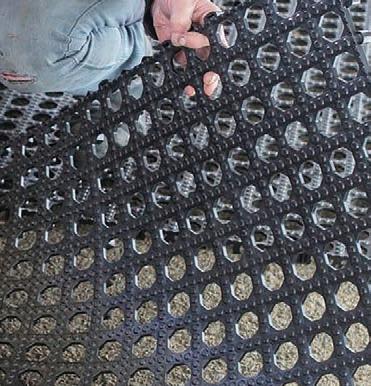
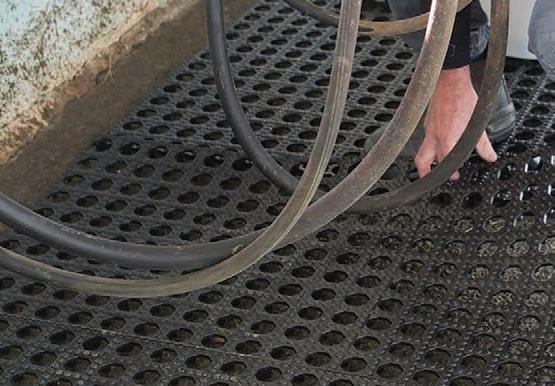
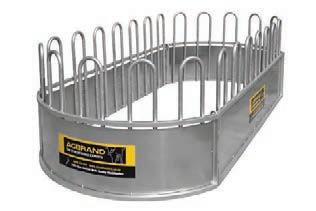
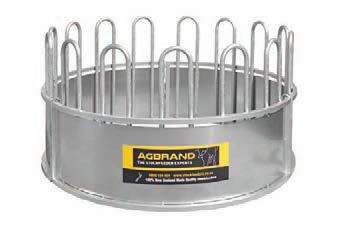
Two girls (1 & 4) need a live in nanny, and their working parents need help around the house (and with their sanity).
‘Mary’ needs to love kids, dogs, and the countryside; be able to cook, clean and drive; be fit and self motivated; and commit for at least a year. Mary would enjoy full board, a large sunny bedroom with en-suite, use of a car, a salary tbc, time off to explore the UK and Europe and the adoration of two gorgeous girls (and a labrador).








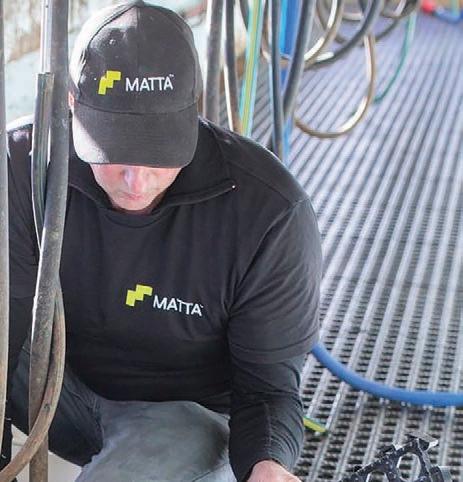
If interested please email a
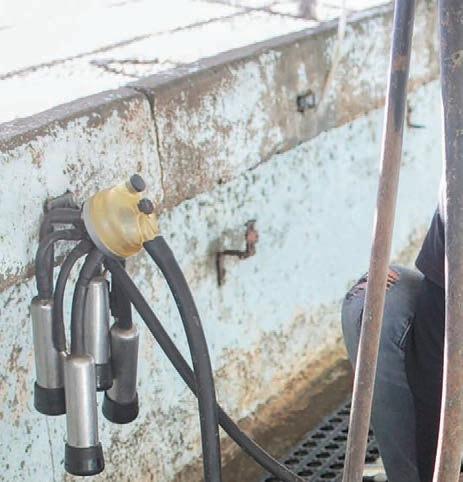
• 1 x 6 foot bale • 2m diameter • 15 feed positions • 15 - 30 animals $1100 Reduce Fatigue and Strain with Work Matta™ Long hours of standing on hard, cold concrete can take a toll on your body. Work Matta Excel is an ergonomic, mid-compression durable ooring solution that is ideal for hosing down and dispersing debris-laden water. Made from 85% recycled PVC material. Available at Farm Source Mattaproducts.com 0800 628 827 Scan the QR code to nd out more ▲ LK0116316© Advertise with us Reach every farmer in New Zealand every week Call Debbie 027 705 7181 Find primary sector vacancies at: farmersweeklyjobs.co.nz To advertise phone Debbie 06 323 0765 LK0115404©
SEEKING KIWI ‘MARY POPPINS’
LK0116302© TWO STUNNING 4WD SELF DRIVE OPTIONS South Island High Country Grand Slam Self drive your own 4WD from Blenheim to Cardona in Central Otago through a network of high country tracks including Molesworth on this 7 day 8 night tour. Both these tours are; Fully guided with radio contact; Fully catered and stay in very comfortable lodge and farmstays; Made up of smaller tour groups (7-9 vehicles) and travel at a quieter pace. NOW TAKING BOOKINGS FOR 2024 SEASON Contact John Mullholland Phone 027 228 8152 • RANFURLY info@highcountryjourneys.co.nz www.highcountryjourneys.co.nz The Great Explorer Self drive from Lake Ohau to Cardrona through the majestic high country and Tussockslands of the Mackenzie Basin, Central Otago and Northern Southland with this 5 day 6 night tour. JW116303© HIGH COUNTRY JOURNEYS Drive from station to station and experience the majestic South Island High Country Front, shiny grill, connecting each end close to indicators. Phone 027 201 7616 WANTED TO BUY GRILL for D-SERIES FORD TRUCK LK0116290© Heavy duty, long lasting incinerators Three sizes available Phone 021 047 9299 irontreeproducts.co.nz JW114362© Marketplace 27 FARMERS WEEKLY – farmersweekly.co.nz – August 14, 2023 Marketplace 27 MARKET REPORT Subscribe from only $100 per month agrihq.co.nz/our-industry-reports
brief note and CV to siobhain_david@outlook.com
MASSIVE VINTAGE MACHINERY, TRACTORS, MOTOR & HOUSEHOLD MEMORABILIA SALE

Eric Greens lifelong collection of vintage memorabilia
Auction Day:
Saturday 19th August 9.30am Start Time
Tetley Coolstore, 93 Tetley Road, Katikati
Viewing Day and Pre-Auction Registration:
Friday 18th August 12pm-4pm
Approximately 400 Lots of Vintage Memorabilia Including:
1941 Farmall WD6 McCormick Deering Diesel Tractor, 1943 Farmall H Tractor, 1954-1956 Farmall 100
McCormick Tractor, 1939-1954 Farmall A McCormick Deering Tractor with Sickle Bar Mower, 1939-1947
Farmall B International Tractor, Complete Milking Plant- Portable Electric- Belt Driven, 2x Complete Shearing

Plants One with Stover’s Engine, Fully Restored and Complete Texaco Petrol Bowser Pump No4, 1930 Carbox
Petrol Bowser, Caltex Diesel Bowser, Beckmeter Bowser and Petrol Pump, Avery Hardell Double Sided Petrol Pump, Bowser Stands, Big Tree Glass 1 Quart Bottle plus Pourer with Lid, Glass Texaco Oil Bottle, Big Tree Memorabilia, Huge Selection of Pumps- Petrol, Water, Vacuum, Ram, Dairy and Piston Pumps, McCormick Deering Cream Separator, Collection of NZ and American Oil and Kerosene Tins, Stationary MotorsIncluding 3 Anderson Motors, 2 Lister, 1 Wolseley, 1 Gardener. Selections of Crosscut saws, Ploughs, Harrows and Seeders, PSD Duncan Horse Drawn Seed Drill, Planet Junior as well as Considerable Assortments of Rare and Collectable Items.
Auctioneers Note:
On behalf of the Green family PGG Wrightson are privileged to offer the lifelong vintage collection of the late Eric Green. There is a wide range of vintage memorabilia on offer for those interested in all things rare and collectable from yesteryear your attendance at this auction is a must. Because of the extensive collection on offer, a viewing and registration day is available on site to the public on Friday 18th of August 12-4pm.
Terms of Auction:
• All items will be sold as is where is.
• 15% GST will be added to purchase price.
All listing information has been supplied to PGG Wrightson by the vendor.



At the fall of the hammer all goods become the purchaser’s responsibility
• Payment terms are strictly EFTPOS on the day or charge to PGG Wrightson. (Full Account holders only) (No Credit Cards).
Telephone bidding available with arrangement made prior to auction.
For more information, photos and a catalogue visit www.agonline.co.nz/upcomingsales
Or phone vendor:
Durelle Green 027 949 3725

Or PGG Wrightson
Simon Rouse 027 492 4805
Luke Renton 027 490 8450
Fast. Efficient. NZ Wide
We can help with container sales, container deliveries and container hires, as well as container removals and container relocations, to anywhere in New Zealand. We work with more than fifty transport providers across the country, which means we have access to the most efficient and cost-effective solutions for your shipping container move.

Contact us today and let’s talk logistics.

Contact: 021 0812 1083 www.containershift.co.nz
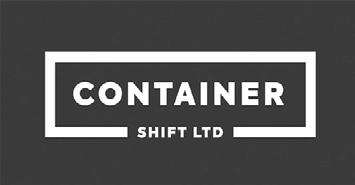
ben@waterhousecc.co.nz 027 559 7168

BRIDGE & STRUCTURE MAINTENANCE
Providing affordable repair & maintenance solutions for your expensive assets. Waterhouse Complex Civil are specialists in repairing & maintaining bridges, stock underpasses, culverts, & waterway remediation.

Farm bridges and structures showing signs of age? Don't let these valuable assets deteriorate any further !
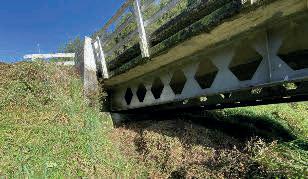

ANIMAL HANDLING
FLY OR LICE problem? Electrodip – the magic eye sheepjetter since 1989 with unique self adjusting sides. Incredible chemical and time savings with proven effectiveness. Phone 07 573 8512 www.electrodip.com

ANIMAL AND HUMAN healer, also manipulation on horses and dogs. Mid South Canterbury, 14th August. North Otago / Dunedin / South Otago, 15th-17th August. Gore / Invercargill / Otautau / Te Anau / Winton, 18th-21st August. West and Central Otago/ Maniototo, 22nd-24th August. Phone Ron Wilson 027 435 3089. CRAIGCO SHEEP JETTERS. Sensor Jet. Deal to fly and Lice now. Guaranteed performance. Unbeatable pricing. Phone 06 835 6863. www.craigcojetters.com
BTZ Forestry Marketing and Harvesting
CONTRACTORS
GORSE AND THISTLE SPRAY. We also scrub cut. Four men with all gear in your area. Phone Dave 06 375 8032.
HORTICULTURE
FORESTRY
WANTED
12-MONTH-OLD heading bitch. Ready to be broken in. Plenty of potential. Phone 027 230 6664. HEADING DOG PUPPIES x3. 5 months old. Parents intelligent, keen, hard working dogs. $300. Phone 021 911 800. YOUNG HUNTAWAYS AND Heading dogs. Top working bloodlines. Check out our website www. ringwaykennels.co.nzRingway kennels. Phone 027 248 7704.
FOR ONLY $2.30 + gst per word you can book a word only ad in Farmers Weekly Classifieds. Phone 0800 85 25 80.
NATIVE FOREST FOR MILLING also Macrocarpa and Red Gum, New Zealand wide. We can arrange permits and plans. Also after milled timber to purchase. NEW ZEALAND NATIVE TIMBER SUPPLIERS (WGTN) LIMITED 027 688 2954 Richard.

NZ KELP. FRESH, wild ocean harvested giant kelp. The world’s richest source of natural iodine. Dried and milled for use in agriculture and horticulture. Growth promotant / stock health food. As seen on Country Calendar. Orders to: 03 322 6115 or info@nzkelp.co.nz
HYPNOTHERAPY
TOO MANY WILD DEER on your farm? Two older experienced hunters looking for a fallow block to hunt regularly in the Wanganui area. Ray Wisnewski 027 553 3729 or contact Steve Hibbell 021 118 1341. BALAGE
DOGS FOR SALE FOR SALE
Re-sharpening available for all makes
436 566
Poplars from Blue Mountain Nurseries – plant for shelter, erosion control and suitable for clay soils. 03-2048-250 or email info@bmn.co.nz to secure bulk buy rates. www.bmn.co.nz NEW HOLLAND tractor with loader. TD5.100, 810 hours. Includes field master mulch mower, hayfork, $68,000 ono. Phone John 0274 855 125.

PROMOTES QUICK PASTURE growth. Only $6.50+gst per hectare delivered. 0508-GIBBGRO [0508 442 247] www. gibbgro.co.nz. “The Proven One.”
GIBB-GRO GROWTH PROMOTANT GIBBOOST
INCREASE PASTURE growth and dry matter. $5.50 per/ha ex store + GST. Phone 0508 733 343. www.vernado.co.nz
GOATS WANTED
FERAL GOATS WANTED.
Pick-up within 24 hours.
Prices based on works schedule. Phone Bill and Vicky Le Feuvre 07 893 8916 / 027 363 2932.
GOATS WANTED.
All weights. All breeds. Prompt service. Payment on pick up. My on farm prices will not be beaten. Phone David Hutchings 07 895 8845 or 0274 519 249. Feral goats mustered on a 50/50 share basis.
HAY FOR SALE
QUALITY RYE GRASS and barley straw. Shed stored and covered stack. Weed free. Round and square bales, Waimate, South Canterbury. Unit loads available, can deliver. Phone Dan 021 760 407.
FARMING FAMILIES, online hypnotherapy support for everyday challenges. Contact Shirley Henderson at shirl@ shirl.nz for a chat. For more info: http://www.facebook. com/handsforhealthnz
LEASE LAND WANTED
DAIRY OR GRAZING FARM wanted. Open to leasing, equity, share farming or developing land in partnership. Rangitīkei, Manawatū or HB areas. Phone Michael 027 223 6156.
PUMPS
HIGH PRESSURE WATER PUMPS, suitable on high headlifts. Low energy usage for single/3-phase motors, waterwheel and turbine drives. Low maintenance costs and easy to service. Enquiries phone 04 526 4415, email sales@hydra-cell.co.nz
RAMS FOR SALE
WILTSHIRES-ARVIDSON. Self shearing sheep. No1 for Facial Eczema. David 027 2771 556.
WORD ONLY
ADVERTISING. Phone 0800 85 25 80.
RURAL MASSAGE
RELAXING FULL BODY massage in rural Ohaupo. Unwind. De-stress. Visit ruralmassage.co.nz for details.
owner
Buyers of
Free quotes • Markets for all species Email: BTZforestry@gmail.com LK116321©
(Obtaining the best profits for our customers) Farmers/Woodlot
Tired of waiting for someone to harvest your trees? We are not committed to one buyer that is how we get our customers the most profit we can. Set up to do the smaller, trickier wood lots. No job too big or too small.
Woodlots and Forest.
Helping grow the country
28 FARMERS WEEKLY – farmersweekly.co.nz – August 14, 2023 Marketplace 28 DOLOMITE
ENGINEERING
LK011627©
For a delivered price call .... NZ’s finest BioGro certified Mg fertiliser 0800
ATTENTION FARMERS electro-tek@xtra.co.nz Phone: 06 357 2454 ELECTRO-TEK
FOR SALE
THIS SEASON’S QUALITY balage. 300 x $70 a bale, including gst. Located central NI. Phone 027 367 7832.
Livestock
SALE TALK
The three greatest swordsmen in the kingdom appeared before the king to settle an argument.
“Oh your majesty”, they cried out. “Which among us is the greatest?”.
After thinking for some time, the king came up with a test.
The King ordered one fly to be released in the room.
The first swordsman swung his sword and the fly fell to the ground in two pieces.
A second fly was then released.
The second swordsman swung his sword and the fly fell to the ground in 4 pieces.
Another fly was then released.
The third swordsman swung his sword... And the fly kept on going.
The first two swordsmen laughed.
“You missed” said the King “Respectfully your majesty, it may look like I missed, but that fly will never have children.”
Spring Service Bulls
We are pleased to announce our first sale of yearling bulls to be held on bidr August 28th – Auction 2503

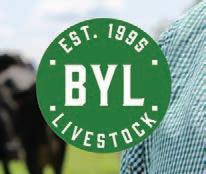
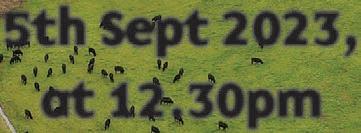
Open day for viewing 20th August – 1pm to 3pm
8 Redford bulls by Injemira Robert Redford Q287
These are the first New Zealand sons available for sale from Australia’s top selling bull Jan 2021 Injemira RR semen packages 2x10, only semen for sale in NZ – release date October 1st.
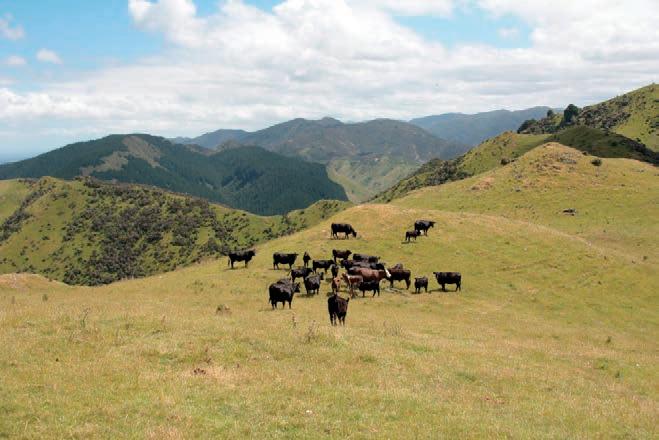

3 Koanui bulls.
1503 Tairua Whitianga Road, Whenuakite Enquiries welcome
and Sue Hooton 021 962 640

STOCK REQUIRED
CLEARING SALE
Wednesday 23rd August at 11.00am
On A/C Greater Wellington Regional Council Queen Elizabeth Park, Paraparaumu. Entry on sale day will be via Poplar Ave, Raumati South.
Due to a change in policy, in conjunction with GWRC we are pleased to offer the following items for sale by auction.
• Approx 120 gates (various lengths and design)
• Over 1200 wooden posts (various lengths and sizes)
• Over 2500 wooden battens (various lengths and sizes)
• 2.5mm HT wire
• Sebco diesel tank and pump (2300l)
• Te Pari cattle crush x2
• Farmquip sheep yards for removal
• Farmquip sheep load out frame and ramp
• Numerous other farm infrastructure items and general farming equipment


For a full list of items please visit www.agonline.co.nz/upcoming-sales
Terms are cash on the day unless you hold a current PGW account.
For more information, please contact:
Alex Stewart (PGW) 027 461 1215 or Jeremy Patterson (GWRC) 027 443 0362
Key: Dairy Cattle Sheep Other

3RD ANNUAL OWNER BRED HEREFORD SALE

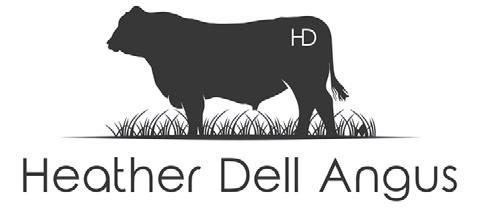
Friday 8th September
• 70 x 2yr Purebred Hereford bulls
• Closed Purebred Hereford Stud Bullsthe way buyers should all go
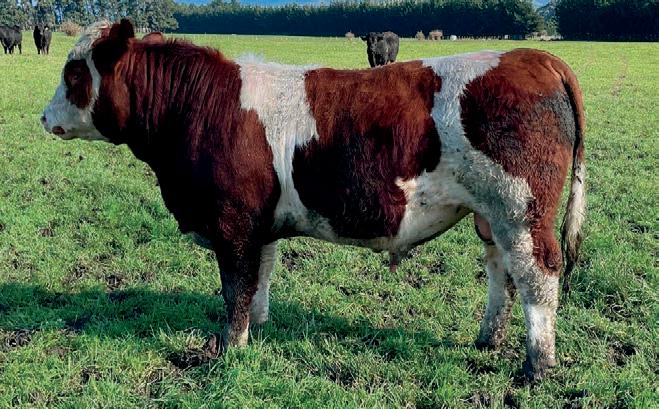
• MBovis tested clear - BVD tested and vaccinated
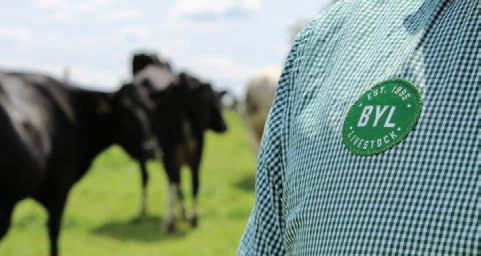

• Deferred payment to help clients and new buyers

• Split payment 20th November, 20th January!
Whitebait Hammersley 027 813 0143
Craig Murray 027 322 0063

CASTLEROCK SPRING CATTLE SALE

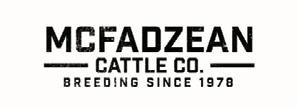
Friday 25th August
Northern Southland Selling Centre Commencing 10.30 am
• Approx: 1000 Yearling Beef Cattle.
• Comprising Angus, Hereford, Charolais. Very good line up of traditional Beef Steers and Heifers.

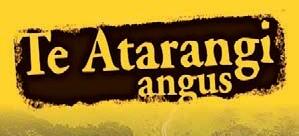
BIDR in operation.
Barry McAlister 0274416432
NZ’s Virtual Saleyard bidr.co.nz



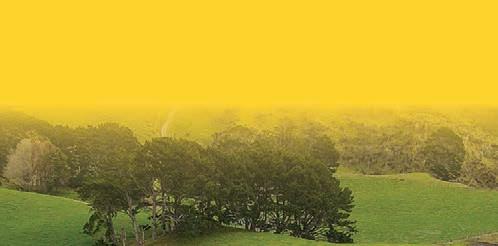
Sale
Heather Dell
Bull
Yearling
focuses on Low Birth Weight, High Growth Rate and Docility.
– 11am
from 9am

Angus
Walk – Wednesday
2023
23 August
– Friday 8
2023
– Viewing
801A Paradise Valley Road, RD 2, Rotorua
September
at 11am
bulls available by GAR Ashland, LAR Man in Black, Heiken Broadview, LT Converse, Musgrave 316 Stunner, Millah Murrah Paratrooper P15 Neil Heather 027 421 4050 – Jon & Nerida Evans 027 490 7783 PGG Wrightsons – Finn Kamphorst 027 493 4484 LK0116237© Chris & Karren Biddles, RD1, Te Kopuru, Northland P: 09 439 1589 m: 021 795 929 e: chris@teatarangi.co.nz Specialising in Ease of Calving and Heifer mating 5th Sept 2023, at 12.30pm 120 YEARLING ANGUS BULLS at our Annual On Farm Sale and Hybrid Auction www.dyerlivestock.co.nz Ross Dyer 0274 333 381
STORE LAMBS: MALE & EWES 33-42kg 1YR FRSN BULLS 180-250kg 1YR ANG HEIFERS 200-250kg 2YR FRSN & BEEF BULLS 420-500kg 2YR BEEF BRED OR FRSN/HERE STEERS 400-500kg E info@rdlfinance.co.nz A Financing Solution For Your Farm
Stud Herefords & Angus 3G Recorded Jerseys, Xbred & Friesian Quietest Bulls in the Country! 12 years experience Tested & Vaccinated For Sale or Lease Herd Lease Bulls from $800 Heifer Lease Bulls from $600 30 minutes west of Hamilton Ph Ben Rowe 022 649 7765 LK0116275© R 1 & R 2 F r i e s i a n B u l l s Richard Seavill, Ph: 021 169 8276 A u t u mn B o r n J e r s e y B u l s Harrison Levien, Ph: 027 496 7410 or Sam Cowley, Ph: 021 263 2019 S T O C K W A N T E D S T O C K F O R S A L E 1 0 0 x 1 1 0 k g + A u t u m n B o r n H e r e / F r s H e i f e r s Richard Seavill, Ph: 021 169 8276 S p r i n g c o n t r a c t s a v a i l f o r 1 0 0 k g m i n F r s B u l l s Chris Kyle, Ph: 027 496 7412 1 5 x H e r e f o r d C o w s A u g c a l v i n g t o H e r e B u l l W l l p r o d u c e t o p c a l v e s Sam Cowley Ph: 021 263 2019 Ph: 0800 827 455 Ema : adm n@byl co nz Webs te www by l vestock co nz M A X I M I S I N G Y O U R R E T U R N T H R O U G H P E R S O N A L L I V E S T O C K M A N A G E M E N T
Bryce
Bruce Orr - Carrfields Stud Stock 027 492 2122 LK0116178© M C F A D Z E A N C R U I Z Y C A L V E M C F A D Z E A N S U P E R A N G U S M C F A D Z E A N M E A T M A K E R Superior weaning weight % Instant impact on calf size growth & muscling Higher carcass yields High EMA scores Strong mi king & maternal traits At least 7/8 s Angus Moderate framed hill country cattle Excellent growth rates and super or muscling Positive fats & high IMF % Strong mi king & maternal traits 100% Registered Angus Positive for calving ease Short gestation Positive fats & good growth Suited for heifer mating Thursday 14th September 2023 at 1pm PLEASE CONTACT US FOR A CATALOGUE AND/OR VIEWING 216 Wiltons Road, Carterton | www mcfadzeancattlecompany co nz Johnie McFadzean 0274295777 | Andrew Jennings PGG Wrightsons 0275946820 Open Day 30th August 2pm McFadzean Meat Maker, McFadzean Super Angus and the McFadzean Cruizy Calve yearling bulls FEATURING 45 Years of Proven Performance • Top Quality Yearling Bulls A L L B U L L S H A V E P A S S E D S E M E N T E S T I N G McFadzean Meat Maker 2413 Sire - McFadzean Meat Maker 0320 Weaning Weight 382kg Yearling Weight 501kg Freephone 0800 10 22 76 | www.pggwrightson.co.nz Helping grow the country
Livestock 29 FARMERS WEEKLY – farmersweekly.co.nz – August 14, 2023
29
Markets



Calf-rearing squeeze shows up in bullpen
IT WAS this week last year that AgriHQ senior analyst Suz Bremner highlighted the decreased number of calf rearers willing to put in the hard yards under increased costs, and how this would impact on the availability of Friesian bulls for finishers.



Now that we are well into the feeder calf season, it is a good opportunity to see if there has been any change in demand. It is also a chance to look at saleyard throughput of Friesian bulls in older age groups to investigate the impact on availability.
It is interesting to note that there was next to no difference in numbers of feeder calves at Frankton last Tuesday, at 1347 head, compared to the same sale last year.
A good gallery of buyers attended, which helped to firm prices for better types, but the bottom tier of smaller crossbred calves were in less demand and a significant number traded at $40 or less.
Prices compared to 2022 are slightly back for the better portion. Top Friesian bulls earned $120-$170, which was another $20-$30 back on the previous year and it was a similar story

for Hereford-Friesian steers and heifers.


On a positive note, last Monday’s results at Manfield Park shone next to the same sale last year, when the Friesian bull market collapsed due to lack of demand. Buyers this year were pushed up to $220 for top Friesian bull calves, a massive improvement from the couple of pens that
struggled to break the $100 barrier in 2022.


Bay of Plenty PGG Wrightson agent Finn Kamphorst noted that demand for Friesian bull calves and better dairy-beef options at his yards is good so far this year, but he expects this to wane by the end of August as their regular large-scale buyers fill up, many of these from out of the area.

“We would like to see a few more wanting to rear 60-100kg calves but there’s just not the margin in it for them.
“There are plenty of guys out there wanting to buy 100kg calves and put them out on grass, but not many willing to get them there due to the cost.”
Some are starting to wonder if last year’s decrease in reared calves is showing up in saleyard
tallies and there are some interesting findings. In the case of Friesian bulls, there are certainly fewer.
The data for five North Island saleyards shows there have only been two months this year when weaner or R1 Friesian bull tallies have been greater than the corresponding month in 2022, these being February and March. In the cases of January, April and July, the decrease in throughput has hovered around 200 head per month.
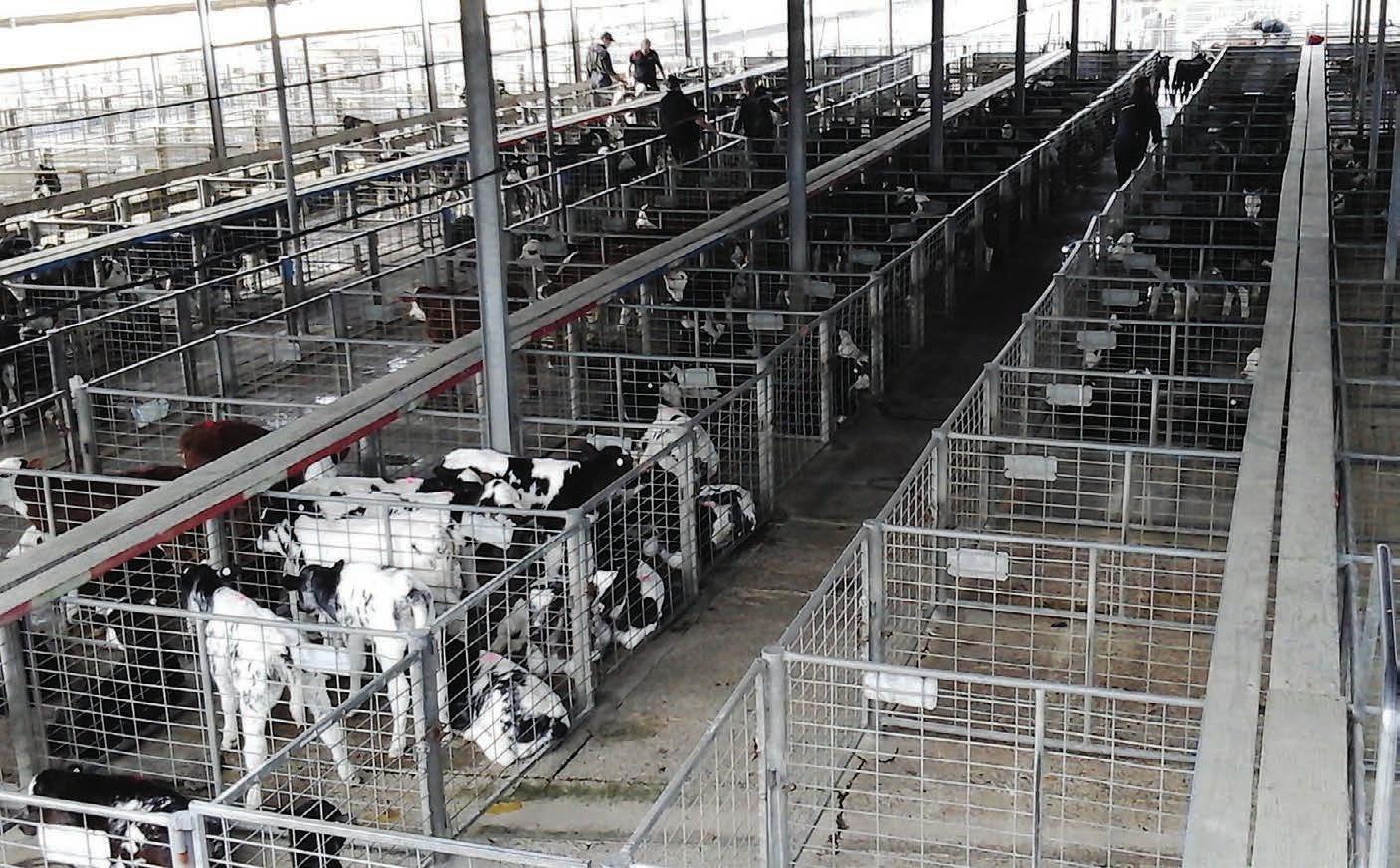

This means, as of the end of July, the availability of weaner and R1 Friesian bulls in these yards has been 17% less than in the previous year.
Given that larger numbers of weaners head to the yards from October onwards, it is likely the
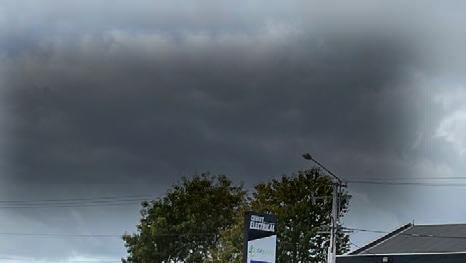
gap will widen, and the percentage will increase as it did last year to a final drop of 25% on 2021 levels. Interestingly, the number of dairy-beef weaner and R1 cattle sold in these same five saleyards is tracking similar to previous years, but on closer inspection the real difference is in the few months from October onwards.
Comparing throughput from October 2022 to now with the 12 months prior shows a drop of 2500 dairy-beef cattle in that first year, or 11% less than the season prior.
A tough winter for many in the North Island is expected to delay the start of the spring cattle season but this should be a reminder that, like last year, the pool of Friesian bulls and dairybeef weaners will be shallower.
“I got 110,000km on a set of Coopers!” - Jared Cowley HEAVY DUTY ALL - TERRAIN 50% ROAD & SAND, 50% DIRT & MUD SUITABLE FOR: ST MAXX coopertires.co.nz | 0800 453 418 MILEAGE GUARANTEED from Cowley Electrical Dairy & Pumps
Purchased from:
30 Markets
Balclutha
Proudly sponsored by
With fewer willing to take on calf rearing there is now, as predicted, a shallower pool of Friesian bulls for finishers.
Fiona Quarrie
MARKETS Livestock
We would like to see a few more wanting to rear 60-100kg calves but there’s just not the margin in it for them.
Finn Kamphorst PGG Wrightson
FLOW-ON: The ow-on e ect of fewer feeder calves being reared is now being felt in the older cattle pens at saleyards.
Weekly saleyards
Store cattle sales are still in winter mode, though for some yards tallies are even lower than usual. Wellsford typically holds its spring cattle fairs at the beginning of August, selling older cattle first and R1 cattle the following week.
But a lack of numbers, due to higher entries earlier in the season and a general decrease in the cattle available, has meant the fair date has been pushed out to August 21. Tallies were also low at Rangiuru, the flow-on effect of fewer calves being reared as well as changes in land use.
31
Kaikohe | August 9 $/kg or $/hd Mixed-age dairy-beef cows & calves 1200 R2 beef-cross steers 2.98-3.07 R1 Angus steers 3.47 R1 Friesian bulls 3.25 R1 beef heifers 3.00-3.05 Wellsford | August 7 | 195 cattle $/kg or $/hd Mixed-age beef cows, RWB Hereford, 482-561kg 1.97 R3 dairy-beef steers, 497-668kg 2.98-3.09 R2 dairy-beef steers, 373-403kg 2.85-2.95 R2 Hereford-Friesian heifers, 315-420kg 2.87-3.03 R1 dairy-beef steers, 220-269kg 700-960 Pukekohe | August 5 $/kg or $/hd R2 Jersey-cross steers 2.66-2.85 R2 dairy-beef heifers 2.60-2.95 R1 steers 502-870 R1 heifers 482-860 Prime cows 1.83-2.27 Prime heifers 2.91-3.13 Tuakau | August 3 | 240 cattle $/kg or $/hd R2 Hereford-Friesian steers, 427-483kg 3.02-3.08 R2 Angus steers, 391-410kg 3.30-3.39 R2 Hereford-Friesian heifers, 432-443kg 2.93-2.96 R1 dairy-beef heifers, 221-254kg 785-790 Rangiuru | August 8 | 190 cattle, 7 sheep $/kg or $/hd R2 dairy-beef steers, 470-475kg 3.11-3.12 Aut-born yearling Friesian bulls, 311-334kg 2.85-3.02 Aut-born yearling dairy-beef heifers, 307-346kg 2.80-2.93 Prime dairy-beef steers, 522-710kg 3.01-3.15 Boner dairy cows, 490-581kg 2.10-2.20 Frankton | August 8 | 160 cattle $/kg or $/hd R2 Hereford-Friesian steers, 413-430kg 3.13-3.27 R2 dairy-beef heifers, 370-426kg 2.89-3.03 R1 dairy-beef bulls, 97-146kg 580-710 R1 dairy-beef heifers, 91-300kg 510-870 Boner Friesian cows, 413-531kg 2.05-2.24 Frankton | August 9 | 571 cattle $/kg or $/hd R2 dairy-beef steers, 460-526kg 3.15-3.33 R2 beef heifers, 408-433kg 3.26 R1 dairy-beef steers, 156-337kg 620-1070 R1 dairy-beef heifers, 210-273kg 3.05-3.35 Aut-born weaner dairy-beef steers, 109-124kg 500-575 Aut-born weaner Belgian Blue-Friesian bulls, 99-151kg 600-700 Aut-born weaner dairy-beef heifers, 99-136kg 490-535 Prime dairy-beef steers, 571-706kg 3.13-3.25 Boner Friesian cows, 458-579kg 2.14-2.40 Te Kuiti | August 4 | 724 cattle $/kg or $/hd R3 Angus, exotic steers & heifers, 490-576kg 3.05-3.17 R2 traditional steers, 422-542kg 3.20-3.34 R2 exotic steers, 430-512kg 3.13-3.27 R2 Hereford-Friesian steers, 478-529kg 3.12-3.30 R2 Hereford-Friesian steers, 414-425kg 3.01-3.09 R2 Hereford bulls, 408-461kg 1460-1860 R2 Angus heifers, tops, 353-463kg 3.07-3.24 R2 Hereford-Friesian heifers, 406-423kg 2.85-2.93 Matawhero | August 4 | 442 sheep $/kg or $/hd Mixed-age Romney ewes, SIL 25/04 182%, good 146 Store mixed-sex lambs, heavy 128 Store ewe lambs, good 100 Prime ewes, 2-tooth 114 Taranaki | August 8 | 618 cattle $/kg or $/hd R3 dairy-beef steers, 447-560kg 2.98-3.12 R2 traditional steers, 450kg average 3.05 R2 Hereford-Friesian steers, 363-416kg 3.20-3.29 R2 dairy-beef heifers, 355-451kg 2.85-2.95 R1 dairy-beef steers, 235kg average 3.83 R1 Hereford-Friesian heifers, 210-258kg 745-850 Prime Hereford-Friesian heifers, 476-533kg 2.98-3.07 Stortford Lodge | August 7 | 729 sheep $/kg or $/hd Prime ewes, very heavy 120-137 Prime ewes, light to medium 70-94 Prime lambs, heavy 147-177 Stortford Lodge | August 8 | 102 cattle, 5668 sheep $/kg or $/hd Mixed-age Angus cows, VIC Angus 20/12, 536-628kg 1575-1650 R3 Hereford heifers, RWB Hereford 20/11, 556kg, one line 1670 6-tooth Romney ewes, SIL Romney 01/04 triplets, one line 172 4-tooth Romney ewes, SIL Romney 01/04 triplets 150-195 Store cryptorchid lambs, medium to good 128-130 Store male lambs, heavy 128-133 Store male lambs, medium to good 94-119.50 Store ewe lambs, heavy 119.50-147 Store ewe lambs, medium to good 96-122.50 Store ewe lambs, light 80-94 Feilding | August 4 | 541 cattle, 5822 sheep $/kg or $/hd R2 traditional steers, 418-583kg 3.19-3.30 R2 Angus heifers, 392-441kg 2.96-3.02 R1 Angus steers, 237-282kg 3.69-3.71 R1 beef heifers, 213-267kg 725-790 Mixed-age Romney ewes, SIL 145%-170%, medium-good 130-146 FARMERS WEEKLY – farmersweekly.co.nz – August 14, 2023 Markets 31
Continued on next page
Know the market
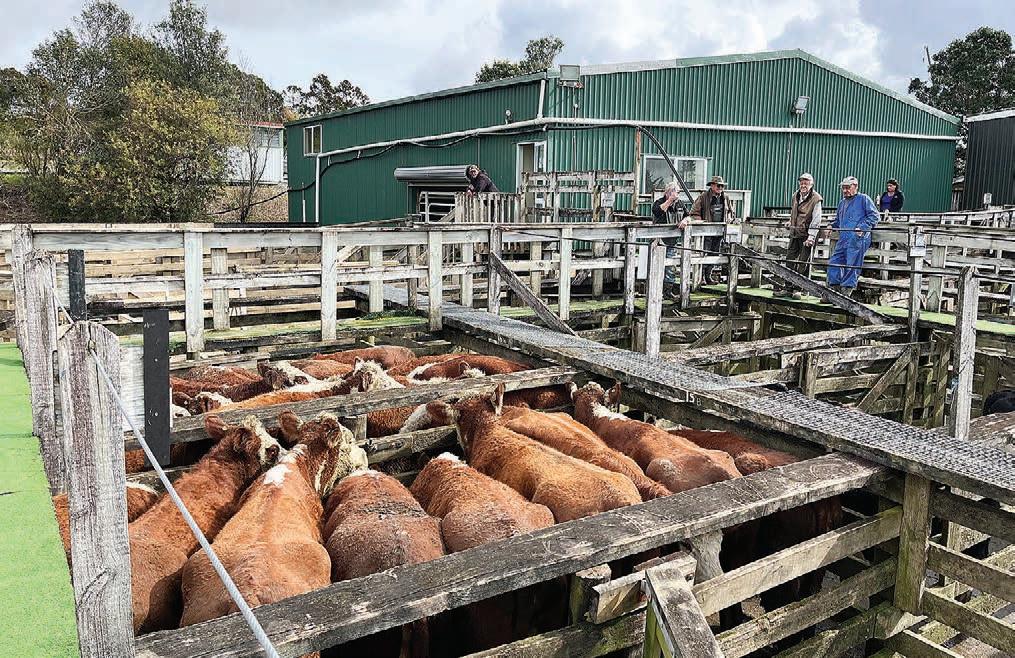
32
–
14,
Markets 32
FARMERS WEEKLY – farmersweekly.co.nz
August
2023
$/kg or $/hd Store whiteface male lambs, woolly, heavy 130-150 Store ewe lambs, heavy 128-140.50 Store whiteface ewe lambs, good 110-130.50 Store lambs, medium 107-114 Feilding | August 7 | 164 cattle, 3485 sheep $/kg or $/hd Prime cows, 517-610kg 2.30-2.42 Prime Hereford-Friesian heifers, 518-539kg 2.80-2.85 Boner Friesian cows, 517-535kg, tops 2.46-2.50 Boner Friesian cows, 513-560kg 2.32 Prime ewes, medium-good 89-112 Prime male lambs, very heavy 180-185 Prime male lambs, heavy 139-179 Prime ewe lambs, heavy 136-163 Prime mixed-sex lambs, very heavy 187-188 Prime mixed-sex lambs, heavy 143-181 Coalgate | August 3 | 309 cattle, 1522 sheep $/kg or $/hd R2 dairy-beef steers, 395-428kg 1200-1310 R2 dairy-beef heifers, 356-448kg 2.80-2.97 R1 Angus heifers, 210-244kg 785-820 Prime beef steers, 501-589kg 2.96-3.16 Prime beef, dairy-beef heifers, 440-580kg 2.94-3.00 Store lambs, medium-good 109-123 Prime ewes, good 88-90 Prime lambs, very good 142-160 Canterbury Park | August 8 | 339 cattle, 4132 sheep $/kg or $/hd R2 dairy-beef steers, 429-438kg 1165-1300 R1 traditional steers & heifers, 125-164kg 3.16-3.20 Prime beef steers, 478-750kg 3.20-3.34 Prime beef, dairy-beef heifers, 440-640kg 3.00-3.26 Store whiteface mixed-sex lambs, good 107-122 Store mixed-sex lambs, medium 80-105 Prime ewes, medium-good 56-70 Prime lambs, heavy 169-182 Temuka | August 7 | 304 cattle, 3674 sheep $/kg or $/hd Prime Hereford-Friesian steers, 495-635kg 2.80-2.99 Prime Hereford-Friesian (red) heifers, 463-555kg 2.90-3.07 Boner Friesian cows, 529-653kg 2.26-2.40 Store ram lambs, heavy 125-168 Store ewe lambs, heavy 138-173 Store mixed-sex lambs, good 118-121 Store Halfbred ewes, good 108-110 Prime ewes, most 55-85 Prime mixed-sex lambs, most 120-145 Balclutha
August 9
sheep $/kg or $/hd Store lambs, all 40-89 Prime ewes, all 20-97 Prime lambs, all 102-160 Charlton | August 3 $/kg or $/hd AD ewes 130-140 3-shear ewes 140-160 2-tooth ewes 190 Store lambs, all 60-90
Feilding | August 4 | Continued
|
| 483
MARKET REPORT Subscribe from only $100* per month agrihq.co.nz/our-industry-reports
A comprehensive, easy-to-read, weekly summary of NZ’s agricultural markets including sheep, beef, venison, dairy, grain, and wool. * Prices are GST exclusive
CHEWING THE FAT: Locals wait for the start of the Wellsford store cattle sale. From left, Tom Whiteford, Henry Fletcher, Bob Skeets and Brian Sharp.
FAR supports the grain, seed and maize growers by:


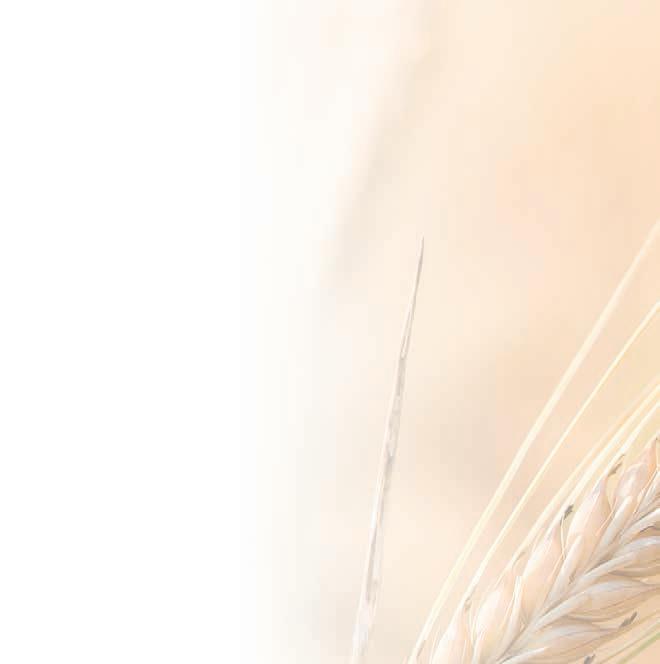
• Providing data to help optimise N use without compromising yield.

• Delivering options to manage disease, and protect cultivars and chemistry.
• Supporting SIRC to scale up seed research, extension and capability.
• Supporting biosecurity responses for velvetleaf and black grass.
• Exploring new crop opportunities for arable rotations.
• Delivering around 80 research trials and 100 extension events every year.
VOTE NOW
the QR code below using your phone camera
Password and PIN number have been mailed to you 33 FARMERS WEEKLY – farmersweekly.co.nz – August 14, 2023
33 Prime ewes, all 40-90 Prime lambs, all 140-150 Lorneville | August 8 $/kg or $/hd R2 beef-cross steers, 419-458kg 1290-1310 R2 beef-cross heifers, 351-358kg 950-1010 Prime ewes, all 50-100 Prime lambs, all 115-155 Feeder Calves | August 3 - August 9 Tuakau | August 7 | 238 cattle $/kg or $/hd Friesian bulls, small to good 95-175 Hereford-Friesian (black) bulls, small to good 145-220 Other dairy-beef bulls, medium to good 70-150 Hereford-Friesian (black) heifers, small to good 50-165 Other dairy-beef heifers, small to medium 20-60 Paeroa | August 7 | 326 cattle $/kg or $/hd Friesian bulls, small to good 65-140 Hereford-Friesian (black) bulls, small to good 70-210 Other dairy-beef bulls, small to good 30-120 Hereford-Friesian (black) heifers, small to good 30-90 Dairy-beef heifers, small to medium 20-50 Frankton | August 8 | 1347 cattle $/kg or $/hd Friesian bulls, medium to good 70-170 Hereford-Friesian (black) bulls, small to good 80-240 Exotic-Friesian bulls, small to good 75-220 Friesian, other dairy-beef bulls, small 15-70 Hereford-Friesian (black) heifers, small to good 70-150 Hereford-Friesian (red) heifers, small to good 20-125 Exotic-Friesian heifers, small to good 80-190 Other dairy-beef heifers, small to good 15-50 Cambridge | August 8 | 765 cattle $/kg or $/hd Friesian bulls, medium to good 70-177 Friesian bulls, small 10-60 Dairy-beef bulls, small to good 75-235 Dairy-beef heifers, medium to good 60-165 Tirau | August 9 | 616 cattle $/kg or $/hd Friesian bulls, medium to good 90-135 Hereford-Friesian (black) bulls, medium to good 180-260 Charolais-Friesian bulls, medium to good 180-260 Friesian, other dairy-beef bulls, small 40-60 Hereford-Friesian (black) heifers, small to good 20-100 Charolais-Friesian heifers, medium to good 80-120 Other dairy-beef heifers, small 20-30 Te Awamutu | August 3 | 444 cattle $/kg or $/hd Friesian bulls, small to good 65-160 Hereford-Friesian (black) bulls, small to good 155-300 Other dairy-beef bulls, small to good 70-220 Hereford-Friesian (black), Charolais-Friesian heifers, small to good 70-155 Reporoa | August 3 | 380 cattle $/kg or $/hd Friesian bulls, small to good 60-130 Hereford-Friesian (black) bulls, small to good 180-240 Other dairy-beef bulls, medium to good 125-152 Hereford-Friesian (black) heifers, small to good 87-125 Exotic-Friesian heifers, medium-good 120-152 Dairy-beef heifers, small to medium 20-87 Reporoa | August 7 | 350 cattle $/kg or $/hd Friesian bulls, small to good 40-120 Hereford-Friesian (black) bulls, medium to good 140-200 Other dairy-beef bulls, medium to good 50-150 Manfeild Park | August 3 | 121 cattle $/kg or $/hd Friesian bulls, small to good 30-170 Dairy-beef bulls, good 170-310 Dairy-beef heifers, good 180-200 Manfeild Park | August 7 | 321 cattle $/kg or $/hd Friesian bulls, small to good 30-200 Hereford-Friesian (black) bulls, small to good 100-300 Exotic-Friesian bulls, medium to good 180-290 Dairy-beef heifers, medium to good 100-200
Scan
Your
Markets
Cattle Sheep Deer
Fertiliser Forestry


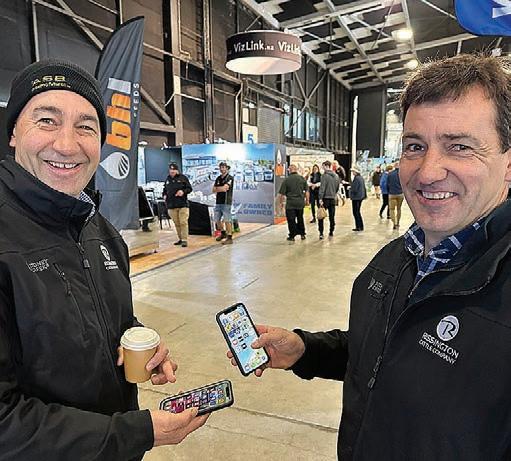

Farmers Weekly fits perfectly in your pocket – save it to your Stay in touch with LK0116304© 34 FARMERS WEEKLY – farmersweekly.co.nz – August 14, 2023 Markets 34
trends Sheep Meat Slaughter price (NZ$/kgCW)Last weekLast year North Island lamb (18kg) 6.959.25 North Island mutton (25kg) 3.306.10 South Island lamb (18kg) 6.959.30 South Island mutton (25kg) 3.156.05 Export markets (NZ$/kg) China lamb flaps 8.9613.35 Wool (NZ$/kg clean) 03-AugLast year Crossbred fleece 2.872.96 Crossbred second shear 2.372.50 Courtesy of www.fusca.co.nz Beef Slaughter price (NZ$/kgCW)Last weekLast year North Island P2 steer (300kg)5.756.35 North Island M2 bull (300kg) 5.656.20 North Island M cow (190kg) 3.754.65 South Island P2 steer (300kg)5.456.25 South Island M2 bull (300kg) 5.256.10 South Island M cow (190kg) 3.954.65 Export markets (NZ$/kg) US imported 95CL bull 8.999.44 US domestic 90CL cow 10.789.34 Venison Slaughter price (NZ$/kgCW)Last weekLast year North Island AP stag (60kg) 8.758.25 South Island AP stag (60kg) 8.758.30 Fertiliser NZ average (NZ$/tonne)Last weekLast year DAP 11971794 Super 449495 Urea 8071340 Urea (Coated) 856Exports NZ Log Exports (tonnes) JunLast year China 1,690,4131,606,553 Rest of world 246,345177,288 Carbon price (NZ$/tonne)Last weekLast year NZU 60.380.3
AgriHQ market
Steer slaughter price ($/kgCW) Lamb slaughter price ($/kgCW) Australia lamb exports (May - Jul, thous. tonnes) Stag Slaughter price ($/kgCW) Australia beef exports (May - Jul, thous. tonnes) Data provided by
Slaughter values are
average gross operating prices including premiums but excluding breed premiums for cattle. 5.0 5.5 6.0 6.5 7.0 Aug Oct DecFeb AprJun North Island South Island 6.0 7.0 8.0 9.0 10.0 Aug Oct DecFeb AprJun North Island South Island 7.5 8.0 8.5 9.0 9.5 Aug Oct DecFeb AprJun North Island South Island 0 10 20 30 40 50 60 70 China Japan S. Korea Rest of Asia US Other Last year This year 0 5 10 15 20 25 Asia (xcl. China) China Mid. East US Other Last year This year
NOTE:
weighted
Extra sunlight a silver lining for many
Philip Duncan NEWS Weather






THE solar winter is now over – that’s the three months of the year with least available sunlight and the shortest day of the year smack bang in the middle of it.




Technically the solar winter ended on August 3, but it’s around mid-August that most people notice the extra daylight with around an hour more light in the north of the country and heading towards 1.5 hours more light for the very south of New Zealand. Of course there is a thermal lag –so just because there’s more light it doesn’t mean an instant lift in temperatures.
Usually July and August are the coldest months of the year but the added warmth in August and September (and sometimes October) can actually make snow storms more likely.
All it takes is a big injection of southerly air into a pool of moisture over NZ and you can have a heavy snow storm. Sometimes the North Island can be in the perfect zone for heavy
snow in spring due to that set-up.
The weather pattern this time a year ago was very spring-like. This year it’s messier, with some people telling us it feels like spring and others saying it feels very much like winter.
Temperatures over recent weeks have taken a tumble, with NZ experiencing a number of days and nights with below normal temps – quite the reverse from previous months, which were a staggering two or three degrees above normal (back in April, May and June for example).
For many the recent cold (and the wet) has put an end to much pasture growth, so now that the days are getting longer I’d expect to see some change in that and an uptick in pasture growth.
Despite the recent cold snaps, soil moisture temperatures are above normal in most regions, including the deep south.
This is mostly due to a distinct lack of frosts this winter –although in recent weeks they have certainly ticked up.
West Coast regions are possibly benefiting more than they normally might in a pre-El Niño set-up. Normally rain would be
quite frequent for western NZ but the rainmakers – like the one we’re seeing this week – are fractured and broken up. Bringing rain and showers to a number of regions but not necesarily hammering one place relentlessly.
Nelson and Marlborough are also showing some hints of a drier pattern showing up. But Southland and Otago and coastal Canterbury are very wet – and while eastern parts of the North Island are better than they were a few weeks ago, they are still very wet too.

Waikato is another very wet region – but is also showing some signs of draining a little better than a couple of months ago. Still, it’s very muddy there and with more low pressure and showers this week we’re not out of the muddy woods just yet.
Highlights this week

• Large low pressure zone for NZ this week
• The low is expected to engulf most of the country


• Rain and showers will be broken up this week

36
sharp and stay in FOCUS with the new weekly podcast from Farmers Weekly. Rich farming news for time-poor farmers. in PODCAST GET THE in FOCUS PODCAST Weather ruralweather.co.nz
Stay
ALL OVER: The upcoming rainfall map shows all regions getting some rain, with the heaviest falls in the western North Island – better than the eastern North Island, says Phil Duncan.






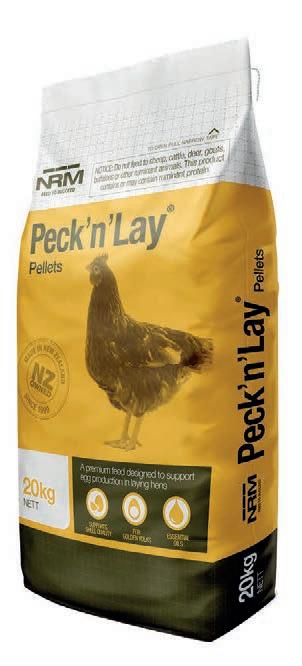
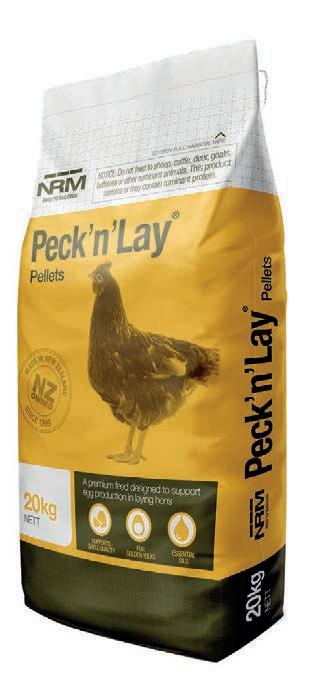

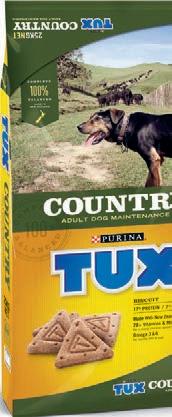
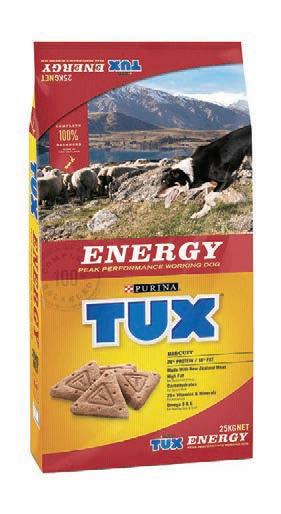






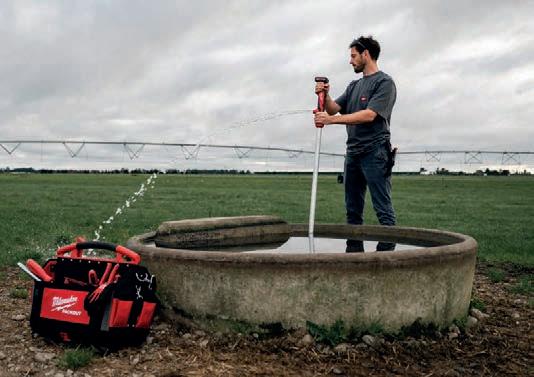
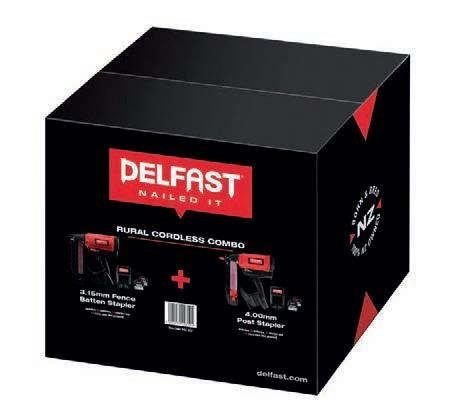
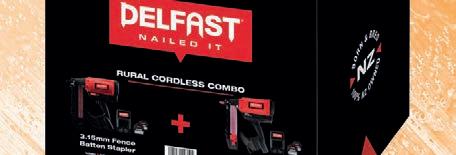

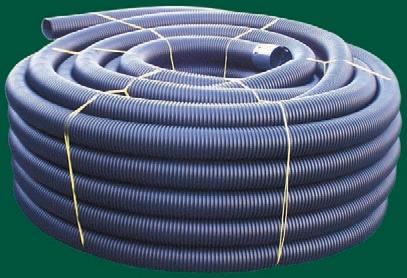


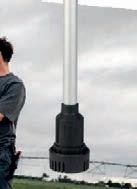






1 FARMLANDS ALL YOU NEED FOR EVERYTHING YOU NEED TO ANIMAL HEALTH JOB DONE AND FEED GET THE NRM Peck‘n’Lay Pellets 20kg 1023203 BUY 2 FOR $59 Reliance Blue Boost Electrolyte 1047737 Reliance Blue Boost Electrolyte 3kg 1050862 Reliance Blue Boost Electrolyte 12kg 15% OFF Cydectin® Pour-On 15L $1,798.00 SAVE $362.00 • Cydectin® Pour-On for cattle and deer is the drench farmers can depend on for healthier, better producing stock. Delivers exceptional worm control for longer. 1001397 A006203 Milwaukee M12TM Stick Water Transfer Pump Tool Only $339.99 SAVE $43.96 • Pumps up to 34 Litres of water per minute Transfers 1,040 Litres on one charge when using a M12 REDLITHIIUMION 4.0 Ah battery pack • Great for clearing flooded troughs and hard to reach areas 1060619 To see these deals and even more check out shop.farmlands.co.nz/trader or shop in-store now. Delfast Twin Pack 3.15mm Batten Stapler + 4.0mm Post Stapler $3,279.95 SAVE $756.06 1056345 Iplex Novaflo Pipe Punched 110mm x 100m $449.99 SAVE $341.01 1004982 BONUS BUY Purchase 11 coils & receive the 12 th coil FREE TUX Energy 25kg $100.00 1012477 TUX Country 25kg $95.00 1012481 TUX Energy Extra 20kg $100.00 1034996 SAVE $20 TUX: 60+ YEARS MAKING QUALITY FOOD FOR KIWI DOGS Betacraft Backroad Fjord Jacket 1024587 Betacraft Backroad Fjord Pant 1024588 Betacraft Backroad Fjord Bib Overtrouser 1024723 BUY ANY 2 BETACRAFT FJORD ITEMS AND SAVE 25% (Navy Only) FAR_10913 EVERYTHING RURAL, LIFESTYLE & MORE! AUGUST TOP DEALS *Terms and Conditions apply. Special prices and offers apply for the month of August 2023 while stocks last. Product range varies by store.
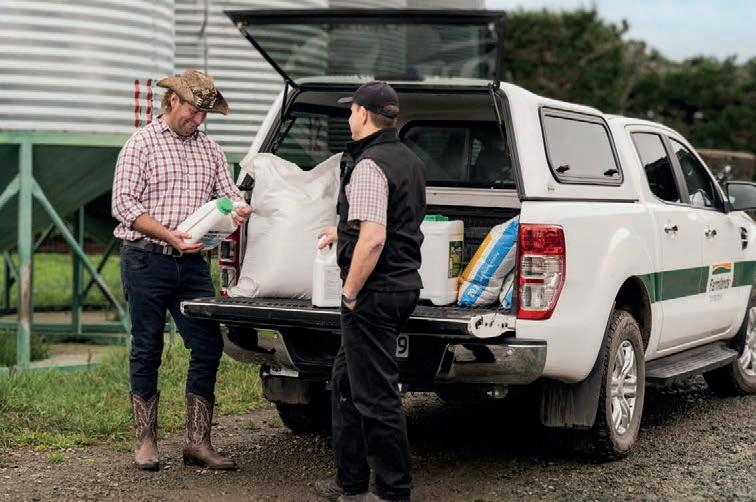







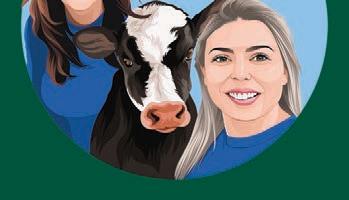

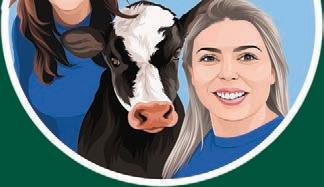

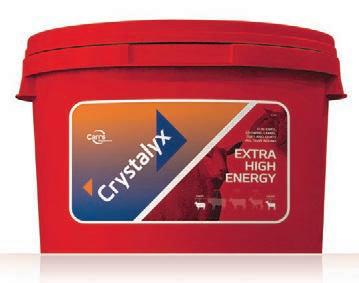








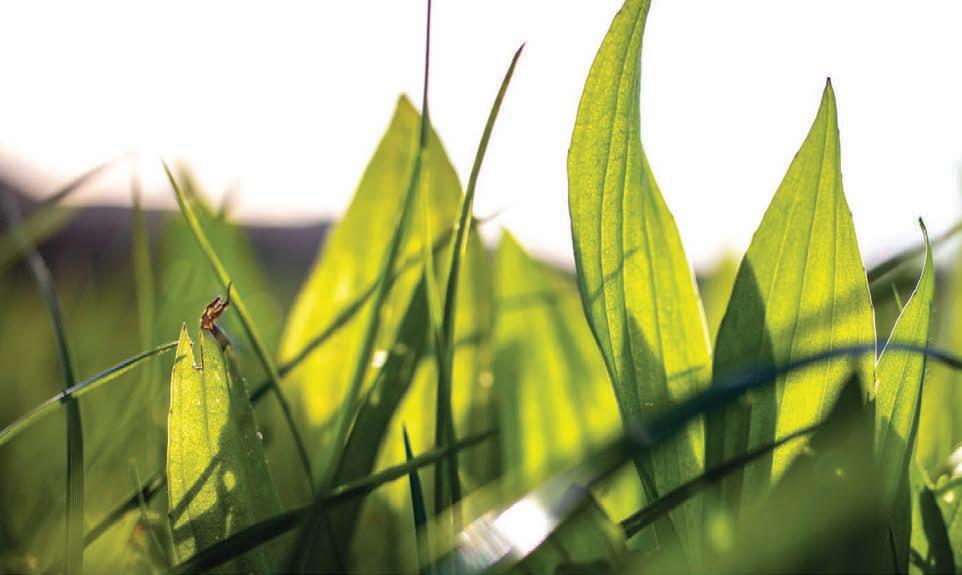
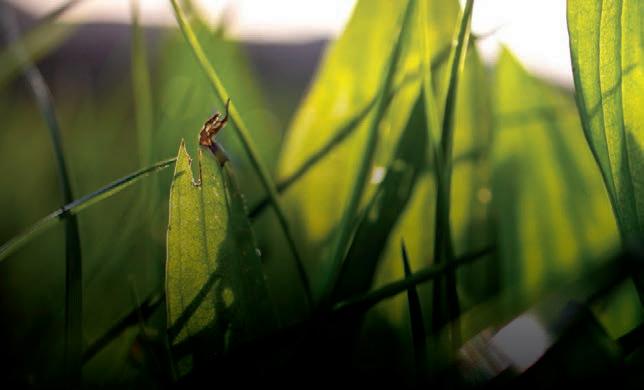
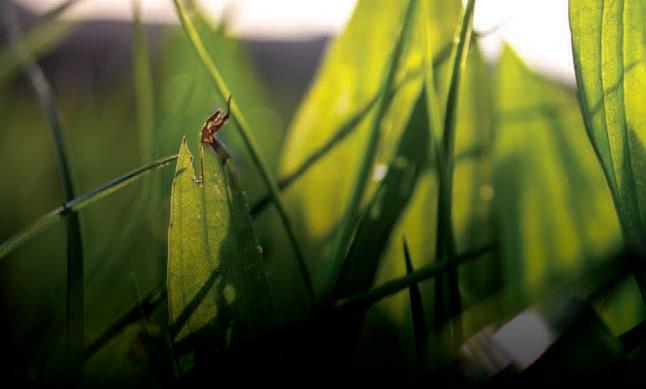

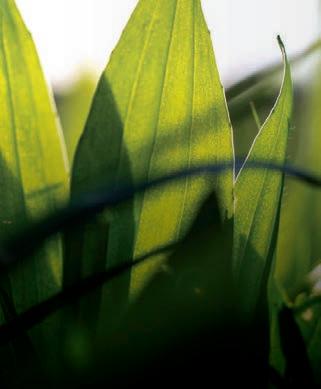














GET SORTED FOR SPRING SPRING LAMBING CALVING AND Missed our live Q&A session with the Calf Experts? Check out all their tips and tricks for Calving by scanning the QR code. 22.5kg $77.95 SAVE $6.00 1012193 40kg $138.50 SAVE $12.00 1052400 Crystalyx Extra High Energy • Reduces sleepy sickness, enhances colostrum and milk production in ewes for improved lamb survival and liveweight gain. Crystalyx Forage Plus • Improves animal health and fertility, increasing pregnancy rates post calving. Reduces loss of body condition in early lactation to optimise performance. • Increases DLWG to grow youngstock out to full potential. Suitable and proven for deer. 22.5kg $76.00 SAVE $7.95 1049645 40kg $135.00 SAVE $14.50 1049652 NRM Lamb Start Mix 20kg $31.00 SAVE $6.41 A high-quality nutritious, muesli-style starter lamb feed. 1029575 All Skus AT LEAST 10% OFF THE ENTIRE STALLION MILK MAID RANGE AGC2375 Call us on 0800 183 358 or contact Farmlands for more information. Restore pasture and reduce nitrate leaching with the NEW Environmental Ballistic Pack. • Ecotain® environmental plantain/white clover mix for broadcasting • Extends life of damaged winter pastures • Improves summer forage quality • Increased broadcasting range with Prillcote coating BRING DAMAGED PASTURE BACK TO LIFE. NEW PACK to WIN Be in Buy any two inputs of Seed, Fertiliser or AgChem from Farmlands this spring and you could win one of three trips to the Calgary Stampede July 2024!* Minimum spend $2,000. A TRIP TO THE CALGARY STAMPEDE Purchase today through your Farmlands store or TFO. *Terms and conditions apply. Purchase a 15L or 20L drum of CRUCIAL and receive a 1L drum of CRUCIAL for FREE * . Nufarm CRUCIAL Herbicide 15L 1036788 Nufarm CRUCIAL Herbicide 20L 1038486 *T&Cs apply: While stocks last. Visit a Farmlands store for more detail. Calgary Stampede qualifying purchase Calgary Stampede qualifying purchase






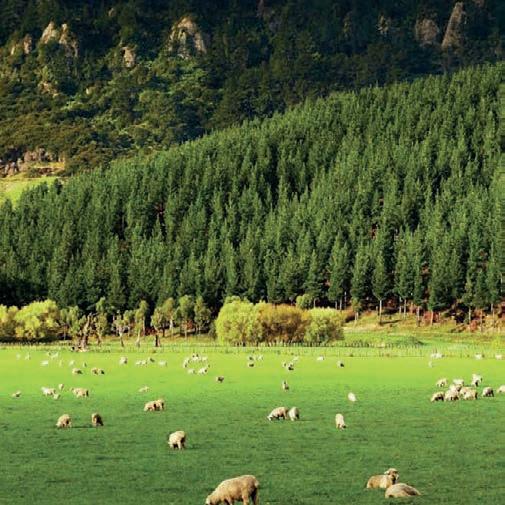
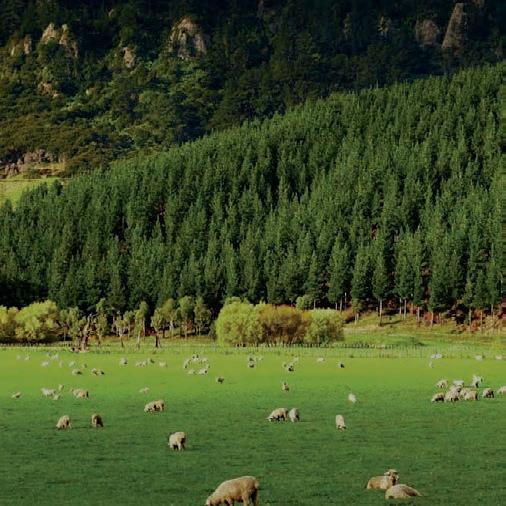
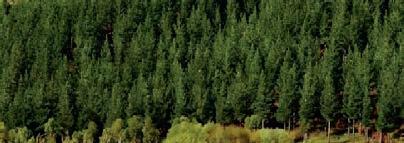
















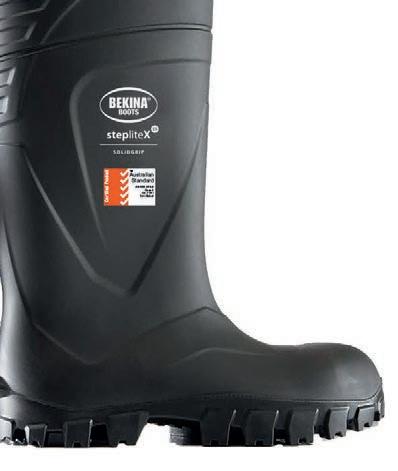










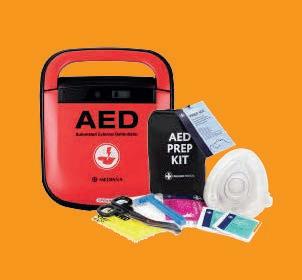

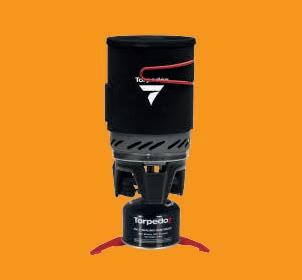

WHAT ' S NEW AT FARMLANDS To see these deals and even more check out shop.farmlands.co.nz/trader or shop in-store now. Visit our Card Partner Directory to find your local partners cardpartners.farmlands.co.nz Featured Offers CARD PARTNERS 1234 5678 9012 3456 AM CARD HOLDER 123456789 FIND OUT WHAT TREES CAN DO FOR YOUR FARM Get 7.5% o consulting services with your Farmlands Card SHOP WITH YOUR FARMLANDS CARD IN AUGUST AND SAVE $1,000 ON SELECTED ATVs AND UP TO $650 ON SELECTED 2 WHEEL FARM BIKES.* *Terms and conditions apply. Spend $3,500+ in a single purchase on Summit Steel & Iplex and score a M18 Fuel Milwaukee Power Pack FREE Get in quick! Only 200 packs available nationwide. WINTER POWER UP WORTH $1,145.00 Bekina StepliteX Solidgrip Gumboot $159.99 SAVE $20.00 1049292 Bekina StepliteX Solidgrip Gumboot with Safety Toe & Sole $195.50 SAVE $20.00 1049291 NEW BUY ANY 12 GULF GREASE CARTRIDGES AND RECIEVE A FREE GREASE GUN* (1060171) Gulf Crown Grease EP 2 400g $9.99 SAVE $0.51 1032780 Gulf Gulflex EPG2 Grease 400g $9.99 SAVE $0.96 1010014 GIFT WITH PURCHASE All-In Deals is back! A way for you and your fellow shareholder to get a great price that keeps getting better based on how much the group buys. To view the deals scan the QR code or visit farmlands.co.nz/all-in Available in selected stores and online. RECYCLE NOW OUR RURAL backyard GROWERS BACKING BACKING FARMERS, AND START RECYCLING: Your small LDPE #4 and Woven PP #5 plastic bags can now be recycled with Farmlands and Agrecovery. *Terms and Conditions apply. Special prices and offers apply for the month of August 2023 while stocks last. Product range varies by store.



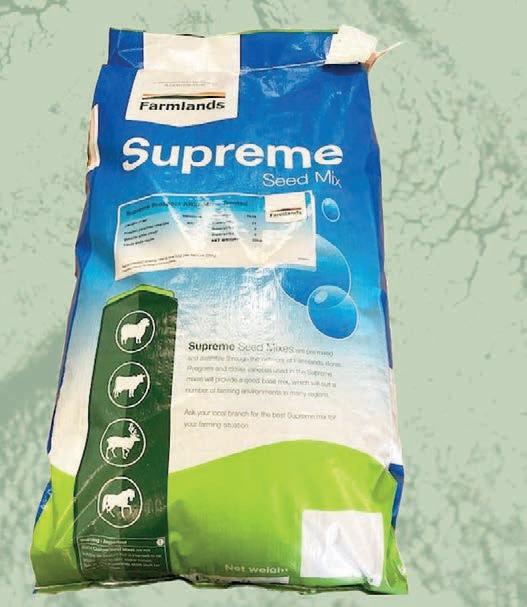














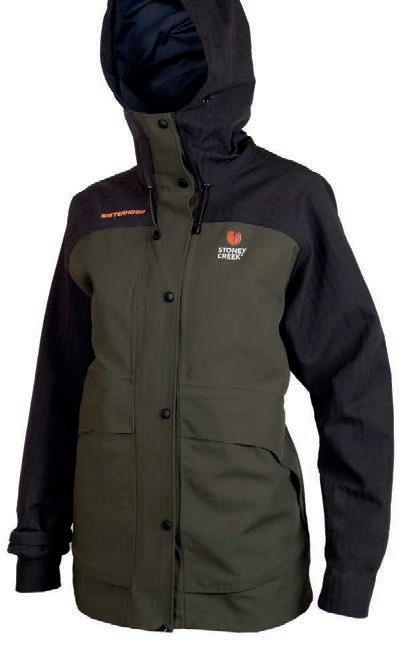










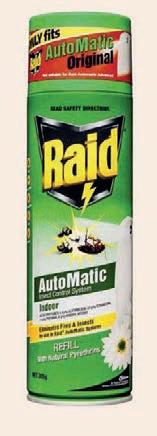




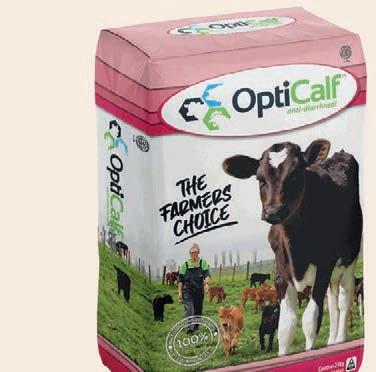


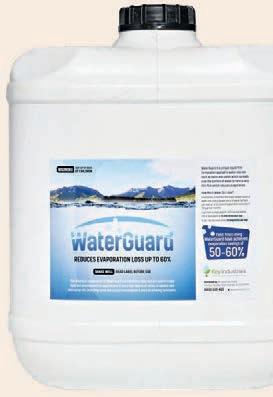


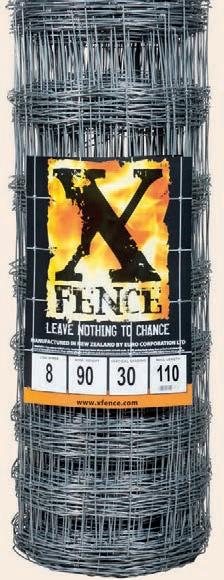







STOCK RUN DOWN To see these deals and even more check out shop.farmlands.co.nz/trader or shop in-store now. DEALS IN-STORE ONLY *SELECTED STORES ONLY. WHILE STOCKS LAST. BUY 2 OR MORE AND SAVE 30% ON STONEY CREEK APPAREL* HOT OFFER *Excludes already reduced. Valid until 31st August or while stocks last. WaterGuard 20L $489.74 1051374 OptiCalf AntiDiarrhoea 20kg $20.27 1052415 Nufarm Foam Marker Foaming Agent 20L $216.63 1044262 X Fence Netting 8/90/30 x 110m 10% Extra $206.79 1011919 Datamars PEL Mains Energizer 86000W $3,097.50 1053473 Raid Automatic Insect Control System Refill 305g $20.25 1009808 Datamars PEL Mains Energizer 46000W $1,695.23 1044361 Summit Y Post Galv 1.65m $10.67 1022323 15% OFF UP TO 50% OFF GET IN QUICK! *Terms and Conditions apply. Special prices and offers apply for the month of August 2023 while stocks last. Product range varies by store. 20-25% OFF Supreme Legion AR37 Superstrike Mix 25kg $216.00 1049711 NORTH ISLAND ONLY


























































































































































































 Richard Rennie MARKETS Trade
Richard Rennie MARKETS Trade


















































































































































































































































